Содержание:
- Владимир
- Лукново
- Муром
- Киржач
- Сима
I. Владимир
 Владимир означает «Владеющий миром». В Индии, аналогичное значение названия имеет город Бхубанешвар. Владимирская земля играет особую роль в истории России. Это единственная область, сохранившая советские советские символы серп и молот, уходящие корнями
Владимир означает «Владеющий миром». В Индии, аналогичное значение названия имеет город Бхубанешвар. Владимирская земля играет особую роль в истории России. Это единственная область, сохранившая советские советские символы серп и молот, уходящие корнями  к метафизическому союзу Луны и Солнца, левого и правого полушарий, выводящего человека на новый, космический уровень. Другим интереснейшим символом на флаге Владимирской области (гербе Владимира) является человекообразный лев, напоминающий индийского Нарасимху.
к метафизическому союзу Луны и Солнца, левого и правого полушарий, выводящего человека на новый, космический уровень. Другим интереснейшим символом на флаге Владимирской области (гербе Владимира) является человекообразный лев, напоминающий индийского Нарасимху.
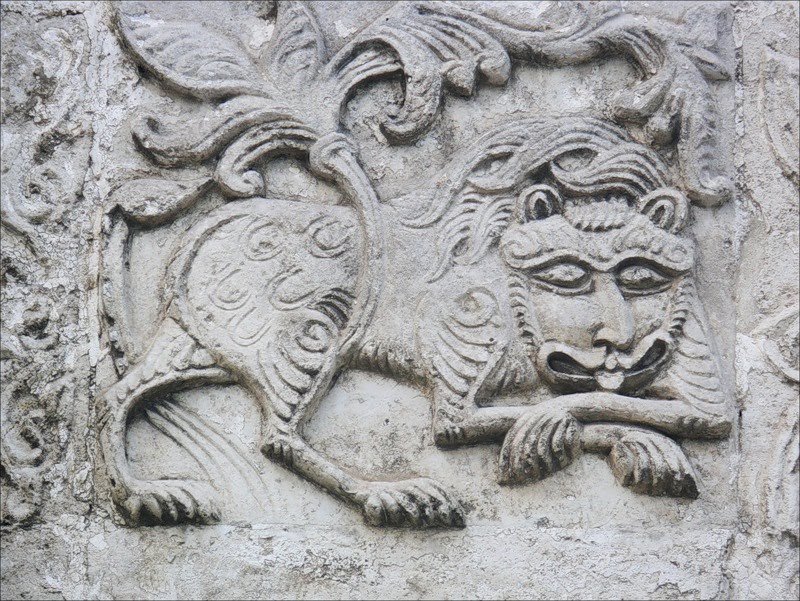 Начиная с Андрея Боголюбского, сделавшего Владимир столицей русских земель в XII веке, лев становится личным знаком Владимирских князей. Образы львов появляются на созданных ими церкви Покрова на Нерли и Дмитриевского собора.
Начиная с Андрея Боголюбского, сделавшего Владимир столицей русских земель в XII веке, лев становится личным знаком Владимирских князей. Образы львов появляются на созданных ими церкви Покрова на Нерли и Дмитриевского собора.
Лев — символ высшего могущества, духовного и физического, символ мощи и охраны высших сил. В Индии многие цари имели приставку у имени — Сингх, что переводится как «лев». Он изображен на гербе Индии, как и на гербе Владимира (досл. ‘Владеющий миром‘). Сингх (‘лев’) – фамилия индийского мужа дочери Сталина Светланы Аллилуевой.
Лев означает жизненную силу и храбрость. В XVII веке в Индии сикхи объявили себя одной семьей и взяли себе фамилию Сингх («лев»). Её ядро — воинственное и готовое к самопожертвованию братство, а точнее – армия правоверных (раджпутов). В основном, они были потомками кшатриев и вторгшихся в Северную Индию в V–VI веках саков. Эта часть Индостана также является родиной предков цыган, многие из которых сохранили внешние и внутренние связи с Индией.
Не случайно, первым коллективом, который образовался во Владимирской областной филармонии имени Танеева стал уникальный ансамбль, которым руководил народный артист РСФСР, талантливый поэт и композитор Николай Жемчужный — основатель известной цыганской династии Жемчужных. Под его руководством ансамбль песни и пляски владимирских цыган снялся в знаменитом фильме «Табор уходит в небо». Его музыка использовалась в спектаклях театра «Ромэн», одним из основателей которого был Николай Хмелев, чья фамилия заканчивается на слове ‘лев’.
Манмохан Сингх, сикх по вероисповеданию, был Премьер-министром Индии с 2004 по 2014 года от партии Индийский национальный конгресс, у основания которой стояли Махатма Ганди и его ученик Джавахарлал Неру — первый Премьер-министр независимой Индии. Ключевое влияние на формирование мировоззрения Махатмы Ганди оказали работы великого русского писателя Льва Толстого. Важную роль в истории владимирских князей играл Ростов Великий, стоящий на озере Неро, с которым лингвистически связана фамилия Джавахарлала Неру – отца любимой в Советском Союзе Индиры Ганди.
Сикхом был Баба Вирса Сингх — основатель Гобинд Садана в южном Дели. Основатель сикхизма – гуру Нанак (1469–1539) отвергал систему каст, проповедовал идеи монотеизма, содружества людей и равенства их перед Богом. В сикхизме, Бог – это вечная сущность, пронизывающая весь мир. Самый богатый застройщик в мире — Кушал Пал Сингх, входящий в первую десятку богачей мира.
Через Андрея Боголюбского Владимир стал фактической столицей Руси после Киева, принявшего эстафету от 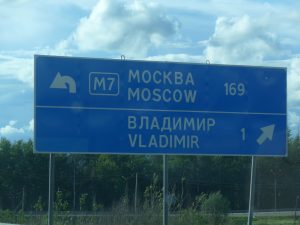 Великого Новгорода. В свою очередь, Москва приняла столичную эстафету от Владимира. Пётр I перенес столицу из Москвы в Санкт-Петербург, основанным им на Нильском меридиане. Мощи Небесного покровителя города на Неве царь перевёз из Владимира, где они почивали. Они были вывезены из Владимира 11 августа 1723 года и в течение 11 месяцев находились в Шлиссельбурге, где начинается река Нева, вытекающая из Ладожского озера. Нево — историческое название Ладожского озера. Более того, Нево – древнее название горы в Иордании (Палестине), с которой увидел Землю обетованную Моисей. Согласно Библии, на этой горе Господь указал на неё Моисею, а сама гора стала место его смерти и погребения.
Великого Новгорода. В свою очередь, Москва приняла столичную эстафету от Владимира. Пётр I перенес столицу из Москвы в Санкт-Петербург, основанным им на Нильском меридиане. Мощи Небесного покровителя города на Неве царь перевёз из Владимира, где они почивали. Они были вывезены из Владимира 11 августа 1723 года и в течение 11 месяцев находились в Шлиссельбурге, где начинается река Нева, вытекающая из Ладожского озера. Нево — историческое название Ладожского озера. Более того, Нево – древнее название горы в Иордании (Палестине), с которой увидел Землю обетованную Моисей. Согласно Библии, на этой горе Господь указал на неё Моисею, а сама гора стала место его смерти и погребения.
После своей внезапной смерти в 1263 году в Городце на Волге (на пути из Орды), Александр Невский был погребён в монастыре Рождества Богородицы во Владимире. Перед смертью он принял схиму с именем Алексий. В 1380 году мощи Александра Невского были открыты нетленными и положены в раке поверх земли. В середине XVIII века, по заказу императрицы 
Елизаветы, была изготовлена серебряная рака (весом 1,5 тонны) для мощей благоверного князя, находившаяся до 1922 года в Троицком соборе Александро-Невской Лавры — главной духовной обители Санкт-Петербурга. Эту раку называют единственным в мире столь монументальным сооружением из высокопробного серебра. Вход в Александро-Невскую Лавру открывает надвратная церковь иконы Божией Матери Всех Скорбящих Радость. Это единственная икона, чудеса которой происходили в молодой столице на берегах Невы, а не в других древних русских местах.
Во вратах Владимирского Свято-Троицкого храма изображение схимника Алексия (Александра Невского) с нимбом находится вместе с изображением схимника Ионы (Ивана Грозного), в чьё правление Александр Невский был причислен к лику святых, вместе с Прокопием Праведным, из рода которого была Анастасия – жена Ивана Грозного. В 1552 году, возвращаясь из победоносного похода на Казань, именно во Владимире Иван Грозный получил известие о рождении у них первенца. Дмитрий стал первым русским царевичем. Он умер в младенчестве, во время богомолья Ивана Грозного в Кирилло-Белозерский монастырь. Его полным тезкой станет младший брат святой Дмитрий Углицкий, родившийся спустя 30 лет. Есть версия, что у обоих братьев небесным покровителем был Уар (редкий святой, не входивший в круг фамильных). Святой Уар служил в римской армии в Египте, принял за свою веру мученическую смерть в начале IV века. При этом присутствовала благочестивая женщина по имени Клеопатра, родом из Палестины, которая с наступлением ночи взяла останки Уара и похоронила их в подвале своего дома. Позже, Клеопатра поместила святыню в местечке неподалеку от горы Фавор, которая в христианстве традиционно считается местом Преображения Иисуса Христа.
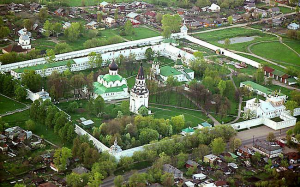 С именем Александра Невского связана знаменитая Александровская Слобода, которую Иван Грозный сделал своей резиденцией и опричной столицей всей страны. В этом высоком статусе она пребывала в течение 17 лет, с 1564 по 1581 года. Индийский император Акбар Великий тоже перенес свою столицу из города Агра в Фатехпур-Сикри и правил оттуда с 1571 по 1585 года. Река Агра течёт недалеко от Владимира. Фатехпур-Сикри был столицей Великих Моголов в течение 14 лет. Столько же был новой столицей египетский город Ахетатон (совр. Амарна), куда перенес из Фив свою столицу фараон-реформатор Эхнатон. Амарна, Агра и Фатехпур-Сикри стоят на одной 27 северной широте.
С именем Александра Невского связана знаменитая Александровская Слобода, которую Иван Грозный сделал своей резиденцией и опричной столицей всей страны. В этом высоком статусе она пребывала в течение 17 лет, с 1564 по 1581 года. Индийский император Акбар Великий тоже перенес свою столицу из города Агра в Фатехпур-Сикри и правил оттуда с 1571 по 1585 года. Река Агра течёт недалеко от Владимира. Фатехпур-Сикри был столицей Великих Моголов в течение 14 лет. Столько же был новой столицей египетский город Ахетатон (совр. Амарна), куда перенес из Фив свою столицу фараон-реформатор Эхнатон. Амарна, Агра и Фатехпур-Сикри стоят на одной 27 северной широте.
В Александровском районе, в 15 км. от самого Александрова, расположен поселок и ж.д. станция Арсаки. Это название идентично имени Арсака I, который был основателем обширного Парфянского царства, активно существовавшего пять веков к югу и юго-востоку от Каспийского моря на территориях современных Туркменистана, Ирана, Ирака, Афганистана и Пакистана.
В состав городского округа Владимира входят порядка двух десятков населённых пунктов, включая Турбазу «Ладога» 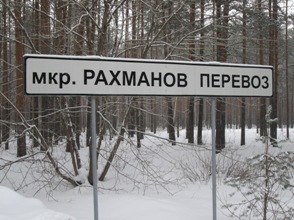 и соседний Рахманов Перевоз (8,5 км. на север от Вяткино), рядом с которыми расположена база отдыха с символическим названием «Армагеддон», которым в христианской эсхатологии обозначают место последней битвы сил добра с силами зла в конце времён. Этим же именем был назван метеорит, упавший в озеро Чебаркуль. Знаменитый русский композитор Сергей Рахманинов был учеником образованнейшего музыканта своего времени, человека редкой самобытности и оригинальности Сергея Танеева, усадьба которого располагается в 50 км. на восток от Рахманова Перевоза. Маринино стоит на реке Ваза, см. ниже. В 7 км. на восток от Рахманова Перевоза расположено село Лунево. Между ними — река Стивер, озеро Вышихры и уникальное озеро Омшаное, которое имеет форму подковы и являющейся частью Владимира. В 5 км. на юго-восток от Лунево находится микрорайон Ширманиха.
и соседний Рахманов Перевоз (8,5 км. на север от Вяткино), рядом с которыми расположена база отдыха с символическим названием «Армагеддон», которым в христианской эсхатологии обозначают место последней битвы сил добра с силами зла в конце времён. Этим же именем был назван метеорит, упавший в озеро Чебаркуль. Знаменитый русский композитор Сергей Рахманинов был учеником образованнейшего музыканта своего времени, человека редкой самобытности и оригинальности Сергея Танеева, усадьба которого располагается в 50 км. на восток от Рахманова Перевоза. Маринино стоит на реке Ваза, см. ниже. В 7 км. на восток от Рахманова Перевоза расположено село Лунево. Между ними — река Стивер, озеро Вышихры и уникальное озеро Омшаное, которое имеет форму подковы и являющейся частью Владимира. В 5 км. на юго-восток от Лунево находится микрорайон Ширманиха.
В старину слово «рахманный» имело самые разные значения в русских говорах, в зависимости от региона. На Владимирщине оно могло означать «веселый, разгульный; хлебосольный; щеголь» (Словарь Владимира Даля). На арабском, слово «Рахман» означает «Милосердный», «Сострадательный», «Всеблагодетельный» и др. Оно является одним из имён Аллаха. В Коране также имеется Сура (глава) под названием Ар-Рахман. Шура — особый принцип государственного совета в исламском мире. В обратном чтении, Коран – это Нарок, т.е. свод правил и законов. Сура – река, берущая начало в Ульяновской области. Сура – это эпитет богов в Санскрите и священный напиток в Ведийской религии, а также «божественный», «текущий», «вода» и т.д. Сура – название целого ряда населённых пунктов в России, а также населенного пункта в древней Сирии, в верхнем течении Евфрата, на берегах которого процветала шумерская цивилизация, оставившая знания о Нибиру.
Некоторые исследователи полагают, что это слово «рахман» имеет индийские корни и может быть связано с брахманами. В переводе с Санскрита, брахман – это «обладающий священными знаниями», «принадлежащий или относящийся к Брахме», т.е. к богу творения в индуизме. Наряду с Вишну и Шивой, Брахма является одним из богов Тримурти (санскр. «три лика»).
Река Агра течёт недалеко от Владимира и пересекает федеральную трассу М-7 «Волга«. В Индии, Агра – это столица 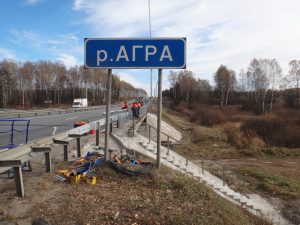 Великих Моголов, в которой находится знаменитый Тадж-Махал. Об исходе индийцев в Россию нет сведений в исторической науке, а вот миграции ариев в Индию известны и зафиксированы в их священных текстах. Ещё задолго до ариев, Владимирская земля была местом особых цивилизаций. Например, Сунгирь, чей возраст оценивается в 30 тыс. лет.
Великих Моголов, в которой находится знаменитый Тадж-Махал. Об исходе индийцев в Россию нет сведений в исторической науке, а вот миграции ариев в Индию известны и зафиксированы в их священных текстах. Ещё задолго до ариев, Владимирская земля была местом особых цивилизаций. Например, Сунгирь, чей возраст оценивается в 30 тыс. лет.
В 6 км. на юго-запад от истока реки Агра, находится исток реки Ваза. На Санскрите, «васа» означает «живой». Ваза, как и Агра впадает в реку Нерехта (приток Клязьмы, бассейн великой русской реки Волга). «Васса Железнова» — пьеса Максима Горького.
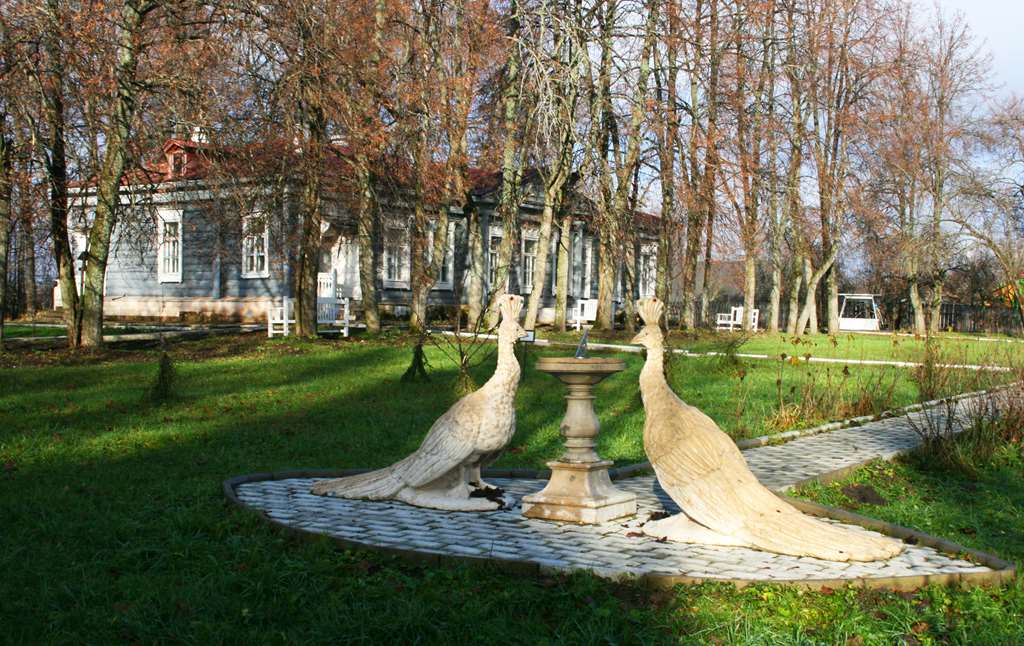 В 8 км. на северо-восток от истока Вазы, на ней стоит усадьба рода Танеевых в селе Маринино, редкий памятник дворянских усадеб XVIII-XIX веков. В усадьбе расположены единственные сохранившиеся во Владимирской области солнечные часы, окруженные с двух сторон парой индийских царских птиц — павлинов (скульптура).
В 8 км. на северо-восток от истока Вазы, на ней стоит усадьба рода Танеевых в селе Маринино, редкий памятник дворянских усадеб XVIII-XIX веков. В усадьбе расположены единственные сохранившиеся во Владимирской области солнечные часы, окруженные с двух сторон парой индийских царских птиц — павлинов (скульптура).
Род Танеевых дал Владимирской земле и всей России многих выдающихся людей, включая известного композитора Сергея Танеева, внесшего огромный вклад в сокровищницу русской музыкальной культуры. Он родился 25 ноября, в один день с великим русским хирургом Николаем Пироговым. В 1339 году к этому дню при великом князе Иване Калите вокруг Кремля были возведены мощные дубовые стены. Москва становится политическим центром, резиденцией великих князей и митрополитов. На санскрите (священном языке Индии) «калита» означает «обеспеченный», что очень близко к значению на древнерусском языке,а моска (москва) означает «освобождение». В 1367 году Дмитрий Донской поставил «Москву каменную».
Танеевы состояли в родстве со многими прославленными фамилиями, такими как Кутузовы, Толстые, Грибоедовы, Бутурлины и др. Они были дружны с Аракчеевым, Сперанским, Чайковским, Скрябиным, Львом Толстым и т.д.
По женской линии, чрез Дурасовых и Владыкиных, Танеевы были прямыми потомками французских королей из династии Капетингов. В истории французского государства, Капетинги – это третья по счету династия после Меровингов и Каролингов. Её представители правили с 987 по 1328 год, а по боковым линиям — до 1848 года.
Род Дурасовых происходил от Людовика VIII по прозвищу Лев – отца французского короля Людовика IX Святого – одного из самых знаменитых монархов Франции. Дурасовы были не только прямыми потомками средневековых французских королей, но и владельцами знаменитой усадьбы Большие Горки, ныне – Горки Ленинские.
Дурасовы являются и потомками Рюриковичей, через Ярослава Мудрого, чья дочь Анна в 1051 году вышла замуж за французского короля Генриха I – внука Гуго Капета, основателя династии Капетингов. Вышеуказанный король Людовик VIII был прапраправнуком короля Генриха I и его королевы Анны Ярославны. Венчают герб Дурасовых перья павлина. В Индии, павлин — царская птица, символ власти. В метафизическом смысле, раскрытый хвост павлина олицетворяет раскрытое сознание.
французского короля Генриха I – внука Гуго Капета, основателя династии Капетингов. Вышеуказанный король Людовик VIII был прапраправнуком короля Генриха I и его королевы Анны Ярославны. Венчают герб Дурасовых перья павлина. В Индии, павлин — царская птица, символ власти. В метафизическом смысле, раскрытый хвост павлина олицетворяет раскрытое сознание.
Предок Дурасовых — благородный итальянский рыцарь Иоанн Дураццо прибыл в 1482 году и поступил на службу к Ивану III – деду Ивана Грозного. В это время уже пресеклась правящая линия рода Дураццо в Неаполитанском королевстве.
Потомками французских королей признали Дурасовых в 1911 году папа Римский Пий Х и король Испании Альфонс XIII, по мужской линии сам происходивший из французской королевской династии – ветви рода Капетингов. Аналогичные подтверждения были получены из Англии, где правил Георг V и от его кузена, русского царя Николая II, который с семьей посещал Владимир и Боголюбово в 1913 году в рамках 300-летия Дома Романовых на русском престоле.
Если двигаться от Владимира / Боголюбово / Сунгирь в сторону Нижнего Новгорода, эту же трассу М-7 пересекает (чуть дальше после Агры) река Тара (санскр. «звезда»). Богиня Тара — одна из главных бодхисаттв (просветленных существ) буддизма, который родился в Индии. Предками его основателя — Будды Сакья Муни («мудрец из рода сакьев») были саки — потомки вышеуказанных ариев, живших на территории современной России и Центральной Азии. Таруса — город и река в 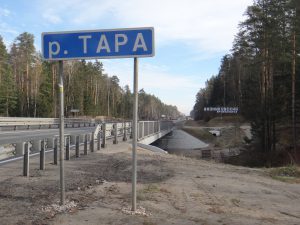 Калужской области, где появилась первая в мире АЭС. Калуга — «колыбель космонавтики» стоит на Оке. На санскрите, «ока» — это «соединение небесных тел».
Калужской области, где появилась первая в мире АЭС. Калуга — «колыбель космонавтики» стоит на Оке. На санскрите, «ока» — это «соединение небесных тел».
Река Тара есть также и в Сибири, в Новосибирской и Омской областях. Ом — самый священный звук в индуизме. Знаменитое Окунёво в Омской области расположено на берегу реки Тары. Окунёво входит в Муромцевский район Омской области. Муром — одним из крупнейших городов вышеуказанной Владимирской области. Его название уходит корнями в седую древность. В его окончании — священный звук Творения — Ом. Несколько человек, рождённых и связанных с Муромом, внесли ключевой вклад в развитие мировой экономики и науки. После Октябрьской революции им пришлось эмигрировать в США, тоже имеющим с Россией древние связи.
В обратном прочтение Тара – это Арата. Близко Арарат. В шумерских поэмах, записанных в XXIV-ХХII веках до нашей эры, упоминается древняя и сказочно богатая страна Аратта, связанная с именами двух ранних полулегендарных правителей шумерского города Урук Энмеркарой и Лугальбандой (отец Нин.Пуаби). Аратта — это дом богини Инанны (Иштар) – любимой внучки Ану, тогдашнего правителя Нибиру. Инанна позднее вместо Аратты начинает благоволить Уруку. Шумеры пытались получить из горной страны Аратты золото, серебро и лазурит, который, как считается, в те времена добывали в Афганистане. Различные версии располагают её и на территории от Армении до юго-восточного Ирана. Андрей Скляров рассматривает версию с турецкой Анатолией.
Арата Калама считается первым учителем вышеуказанного Будды. У имени Айрат несколько версий происхождения. Оно ассоциируется с храбростью, милосердием, добрыми делами, изумлением и т.д. Тара (Арат) присутствует в имени Заратустра и термине Аватара.
Арта — город в Греции, деревня и муниципалитет на острове Мальорка в Испании, а также деревня и муниципалитет в юго-восточном Азербайджане, на границе с Ираном, в Лерикском районе, территория которого окружена Талышскими горами. Талыши – народ на Южном Кавказе, имеющий иранское происхождение. Их язык относится к иранской языковой группе индоевропейской семьи языков.
Стоит отметить, что задолго до появления всем известных цивилизаций Ближнего Востока и Египта, на территории Владимирской земли существовали высокоразвитые цивилизации. На ней до сих пор осталось очень много названий, которые переводятся с Санскрита, который дословно называется языком богов. Уже во времена Лемурии здесь развивалась уникальная цивилизация ныне известная как Сунгирь, ушедшая в более высокие октавы бытия примерно 26 000 лет назад. Сегодня это окраина современного Владимира (или наоборот).
Об определенной связи с Лемурией и Атлантидой говорит название торгово-промышленного села Ундол, расположенного на одноимённой реке (ныне Ундолка). Это вотчина национального героя России, знаменитого русского генералиссимуса Суворова Александра Васильевича.
Считается, что Суворовы происходят от древней шведской благородной фамилии. Их предок Сувор выехал в Россию при 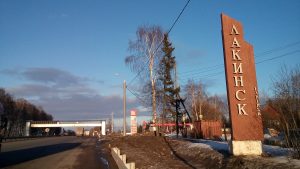 царе Михаиле и принял российское подданство. С другой стороны в 120 км. на
царе Михаиле и принял российское подданство. С другой стороны в 120 км. на 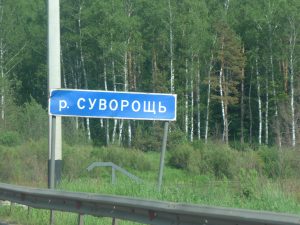 восток от Ундол (совр. Лакинск), в той же Владимирской области, расположен исток реки Суворощь – приток Клязьмы. В свою очередь, притоками реки Суворощь являются реки с говорящими названиями Индрус и Шумарь (см. ниже).
восток от Ундол (совр. Лакинск), в той же Владимирской области, расположен исток реки Суворощь – приток Клязьмы. В свою очередь, притоками реки Суворощь являются реки с говорящими названиями Индрус и Шумарь (см. ниже).
В 45 км. на запад от Ундола (Лакинска) расположен посёлок Вольгинский. На его гербе и флаге изображены две змеи, обвивающие чашу. В отличие от классической медицинской эмблемы с одной змеей, они символизируют не только разработку ветеринарных препаратов, но и целый комплекс предприятий по созданию различной фармацевтической продукции как лечебного, так и профилактического действия. Здесь в реку Вольга впадает река Мергель. Название Вольга практически 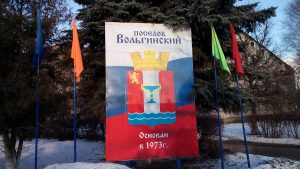 идентично имени великой русской реки Волга, чьи крупнейшие притоки имеют
идентично имени великой русской реки Волга, чьи крупнейшие притоки имеют
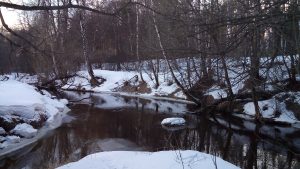
пос. Вольгинский, слияние рек Вольга и Мергель
названия, переводятся с Санскрита: Кама, Ока, Сура и т.д.
На территории посёлка Вольгинский был создан и успешно функционирует первый в России частный наукоград и технопарк «Генериум». Сегодня это суперсовременный медико-биотехнологический комплекс с действующими научными лабораториями, заводом по производству отечественных препаратов и материалов, сложных препаратов, использующихся в лечении онкологических и сердечно-сосудистых заболеваний. Его частью являются комфортабельные жилые коттеджи для специалистов со всей необходимой инфраструктурой и природный заповедник с удивительными пейзажами. Здесь действует крупнейший в Европе завод по производству биопрепаратов из плазмы крови. «Генериум» является крупнейшей биотехнологической компанией России, в которой организован полный цикл производства – от разработки молекулы до выпуска готового лекарственного препарата. Гостями «Генериума» являются ведущие международные специалисты, в нём побывали Владимир Путин и Дмитрий Медведев.
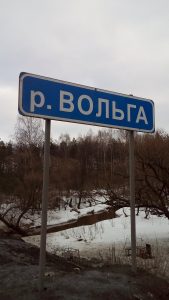 Вольгинский получил своё название от местной реки Вольга, которая является притоком Клязьмы (бассейн Волги). Вольга аллегорически изображена волнистой оконечностью в нижней части герба посёлка Вольгинский. Официально, он был образован в 1973 году. В этом же 1973 году на широкие экраны вышли два фильма, связанные с Иваном Грозным. Также, в 1973 году, в Нью-Йорке, в районе Манхэттена открылся Всемирный Торговый Центр. Башни-близнецы оказались на тот момент самыми высокими в мире. Они стали символом нового мирового порядка и трагедии 911. Фактическая история Вольгинского началась ещё раньше, с деревни Старово (на английском «стар» – это «звезда») и вместе со строительством Покровского завода биопрепаратов (призванного решать ключевые задачи, а именно создание современных препаратов для лечения болезней животных), рядом с уже действовавшим Всесоюзным НИИ ветеринарной вирусологии и микробиологии. Специалисты для работы над этой задачей собирались со всей страны. Первый дом для них был на 56 квартир. В нумерологии, не имеющей отношения к этому правительственному проекту, число 5 символизирует Микрокосмос, а 6 – Макрокосмос. В сумме они дают число 11.
Вольгинский получил своё название от местной реки Вольга, которая является притоком Клязьмы (бассейн Волги). Вольга аллегорически изображена волнистой оконечностью в нижней части герба посёлка Вольгинский. Официально, он был образован в 1973 году. В этом же 1973 году на широкие экраны вышли два фильма, связанные с Иваном Грозным. Также, в 1973 году, в Нью-Йорке, в районе Манхэттена открылся Всемирный Торговый Центр. Башни-близнецы оказались на тот момент самыми высокими в мире. Они стали символом нового мирового порядка и трагедии 911. Фактическая история Вольгинского началась ещё раньше, с деревни Старово (на английском «стар» – это «звезда») и вместе со строительством Покровского завода биопрепаратов (призванного решать ключевые задачи, а именно создание современных препаратов для лечения болезней животных), рядом с уже действовавшим Всесоюзным НИИ ветеринарной вирусологии и микробиологии. Специалисты для работы над этой задачей собирались со всей страны. Первый дом для них был на 56 квартир. В нумерологии, не имеющей отношения к этому правительственному проекту, число 5 символизирует Микрокосмос, а 6 – Макрокосмос. В сумме они дают число 11.
Волгарица — река и деревня в Кировской области, в Опаринском районе, где родился знаменитый разведчик-нелегал Алексей Козлов.
В 5 км. на северо-запад от посёлка Вольгинский находится деревня Перново. По соседству с Вольгинским – деревни Иваново (Нави) и Русь. У первых советских космонавтов были особые отношения с Волгой.
Навий день — обряд воскрешения мертвых у славян. В 2018 году он пришёлся на 12 апреля – день космонавтики, установленный в день исторического космического полета Юрия Гагарина в 1961 году. Место трагической гибели первого в мире космонавта находится в 17 км. на северо-запад от поселка Вольгинский и в 15 км. на юго-восток от города Киржач.
Рядом с местом гибели 27 марта 1968 года (в день Феодоровской 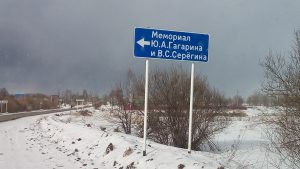 иконы Божией Матери, которой в 1613 году призывали Романовых на царство) во время тренировочного полета первого космонавта планеты, Героя Советского Союза Юрия Гагарина и летчика-испытателя, Героя Советского Союза Владимира Серёгина, находится Свято-Андреевский храм (1825 год). Согласно Евангелию от Иоанна, апостол Андрей был первым призван Иисусом Христом, поэтому назван Первозванным. Орден Святого апостола Андрея
иконы Божией Матери, которой в 1613 году призывали Романовых на царство) во время тренировочного полета первого космонавта планеты, Героя Советского Союза Юрия Гагарина и летчика-испытателя, Героя Советского Союза Владимира Серёгина, находится Свято-Андреевский храм (1825 год). Согласно Евангелию от Иоанна, апостол Андрей был первым призван Иисусом Христом, поэтому назван Первозванным. Орден Святого апостола Андрея 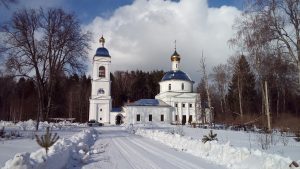 Первозванного учреждён Петром I в конце XVII века. Первый по времени учреждения российский орден, высшая награда Российской империи до 1917 года. В 1998 году орден был восстановлен как высшая награда Российской Федерации. Именно этот тогда ещё полуразрушенный Андреевский храм
Первозванного учреждён Петром I в конце XVII века. Первый по времени учреждения российский орден, высшая награда Российской империи до 1917 года. В 1998 году орден был восстановлен как высшая награда Российской Федерации. Именно этот тогда ещё полуразрушенный Андреевский храм 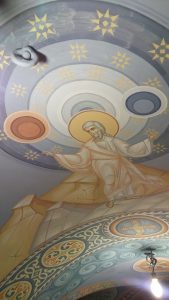 служил в 1968 году ориентиром при поиске места падения самолёта с Гагариным и Серёгиным. 350 метров от него.
служил в 1968 году ориентиром при поиске места падения самолёта с Гагариным и Серёгиным. 350 метров от него.
Сегодня храм восстановлен при непосредственном участии космонавтов во главе с Алексеем
Леоновым, дважды Героем Советского Союза, советским космонавтом №11, первым человеком планеты, вышедшим в открытый Космос, уроженцем Кемеровской области.
Часть росписей внутри храма сделана по эскизу Леонова. Поэтому под куполом рядом с 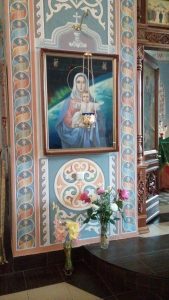 Христом и Андреем Первозванным изображён парад планет и космический корабль, а на стенах – святые-покровители первого отряда космонавтов. Входящих в храм «встречает» Большая Медведица, семь звёзд которой ассоциируются с семью риши — великими мудрецами, которым боги открыли Веды («знание», «учение») — сборник самых древних священных писаний индуизма на санскрите. На отреставрированной колокольне установлена звонница с 9 колоколами, по количеству космонавтов, погибших за историю космических полётов. Каждый колокол носит имя одного из них. Колокол «Юрий Гагарин» весит символические 960 кг.
Христом и Андреем Первозванным изображён парад планет и космический корабль, а на стенах – святые-покровители первого отряда космонавтов. Входящих в храм «встречает» Большая Медведица, семь звёзд которой ассоциируются с семью риши — великими мудрецами, которым боги открыли Веды («знание», «учение») — сборник самых древних священных писаний индуизма на санскрите. На отреставрированной колокольне установлена звонница с 9 колоколами, по количеству космонавтов, погибших за историю космических полётов. Каждый колокол носит имя одного из них. Колокол «Юрий Гагарин» весит символические 960 кг.
Этот единственный в своем роде православно-космический храм, рядом с которым разбились Гагарин и Серёгин, соединяет сегодня научный прорыв с Божественным Мирозданием. В нём стоит икона Божией Матери «Аз есмь с вами, и никтоже на вы«, написанная Алексеем Леоновым. Уникален фон иконы — Земля, какой видят её космонавты. В космосе не существует линии горизонта как таковой. Земля вертится в иллюминаторе, то переворачивается, то появляется слева, то справа. Поэтому, Леонов решил изобразить её такой, какой он ее видел – по диагонали.
Список иконы «Аз есмь с вами, и никтоже на вы» стоит в церкви Стефана Пермского в Великом Устюге. Здесь он родился, отсюда начал свой просветительский подвиг, стал первым епископом Перми. Его рукоположение осуществлено во Владимире, в Успенском соборе, построенном Андреем Боголюбским. До возвышения Москвы, это был главный (кафедральный) храм Владимирской Руси, в нём венчались на великое княжение владимирские и московские князья. Успенский собор во Владимире послужил образцом для ряда более поздних соборов, в том числе Успенского собора Московского Кремля, где короновались русские цари, начиная с Ивана Грозного. При нём и и митрополите Макарии были причислены к лику святых Стефан Пермский и предсказавший его рождение в Великом Устюге Прокопий Праведный — предок рода Романовых, сменивших на русском престоле Рюриковичей.
Мемориал Юрия Гагарина расположен в 50 км. на запад 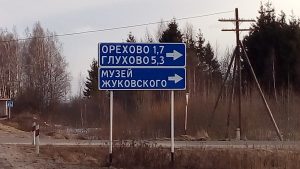 от мемориального дома-усадьбы, где в 1847 году родился Николай Егорович Жуковский, которого Ленин назвал «отцом русской авиации». Жуковский — гений мировой науки, основоположник теоретической, экспериментальной и практической аэродинамики. Он заложил основы авиационной науки, благодаря которой была создана мощная советская авиация. Здесь, в Орехово, прошло его детство. Сюда учёный приезжал в течение всей своей жизни. Родная усадьба Жуковского имеет долгую историю. Деревня была жалована его предкам в царствование Ивана Грозного. В его правление было первое письменное упоминание деревни Кипрево — центра Кипревского сельского поселения, на территории которого расположены вышеуказанный Андреевский храм и мемориал на месте гибели Гагарина. Орехово находится в 17 км. к северу от Ундола (Лакинска).
от мемориального дома-усадьбы, где в 1847 году родился Николай Егорович Жуковский, которого Ленин назвал «отцом русской авиации». Жуковский — гений мировой науки, основоположник теоретической, экспериментальной и практической аэродинамики. Он заложил основы авиационной науки, благодаря которой была создана мощная советская авиация. Здесь, в Орехово, прошло его детство. Сюда учёный приезжал в течение всей своей жизни. Родная усадьба Жуковского имеет долгую историю. Деревня была жалована его предкам в царствование Ивана Грозного. В его правление было первое письменное упоминание деревни Кипрево — центра Кипревского сельского поселения, на территории которого расположены вышеуказанный Андреевский храм и мемориал на месте гибели Гагарина. Орехово находится в 17 км. к северу от Ундола (Лакинска).
После защиты дипломной работы в Академии Жуковского, Юрий Гагарин приступил к тренировочным полетам на самолете МИГ-15 УТИ. В период с 13 по 22 марта 1968 года он совершил 18 полетов общей продолжительностью 7 часов. Последний, контрольный полет с летчиком-инструктором Владимиром Серегиным был назначен на 27 марта.
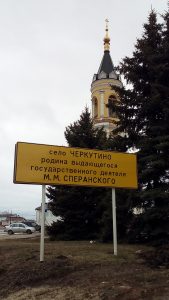 В 8 км. на северо-запад от места рождения Жуковского расположено село Черкутино, где в 1772 году родился Михаил Михайлович Сперанский, в последствии – граф, который вошел в историю как великий русский реформатор, основатель российской юридической науки и теоретического правоведения. Он реформировал государственно-правовую систему Российской империи во времена Александра I, подписавшего указ о постройке Храма Христа Спасителя в Москве и Николая I, который сделал общероссийским древний праздник Нового Года. Карьеру Сперанского во многом определила его близость к князю Куракину.
В 8 км. на северо-запад от места рождения Жуковского расположено село Черкутино, где в 1772 году родился Михаил Михайлович Сперанский, в последствии – граф, который вошел в историю как великий русский реформатор, основатель российской юридической науки и теоретического правоведения. Он реформировал государственно-правовую систему Российской империи во времена Александра I, подписавшего указ о постройке Храма Христа Спасителя в Москве и Николая I, который сделал общероссийским древний праздник Нового Года. Карьеру Сперанского во многом определила его близость к князю Куракину.
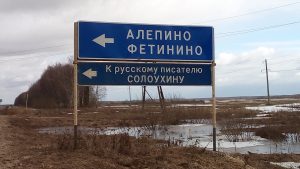 В 4км. на северо-восток от Черкутино находится село Алепино – родина русского писателя Солоухина, стоявшего у истоков возрождения Храма Христа Спасителя в Москве. Могила писателя находится в его родном селе, название которого совпадает с Алеппо – крупнейшего города Сирии, имеющей с Россией очень давние связи, см. Москва — Дамаск. В области Дамаска, в Восточной Гуте (пригород Дамаска), расположен населённый пункт Дума, название которого легко понимается любым, кто владеет русским языком.
В 4км. на северо-восток от Черкутино находится село Алепино – родина русского писателя Солоухина, стоявшего у истоков возрождения Храма Христа Спасителя в Москве. Могила писателя находится в его родном селе, название которого совпадает с Алеппо – крупнейшего города Сирии, имеющей с Россией очень давние связи, см. Москва — Дамаск. В области Дамаска, в Восточной Гуте (пригород Дамаска), расположен населённый пункт Дума, название которого легко понимается любым, кто владеет русским языком.
В 6,5 км. на северо-восток от Алепино расположено село Фетинино, принадлежавшее единственной дочери Суворова. Её матерью была княжна Варвара Ивановна Прозоровская. Генералиссимус любил называть Наталью ласково «Суворочка». В 1799 году, по просьбе Суворова, Екатерина II передала Наталью на воспитание в Смольный институт в Санкт-Петербурге, стоящий на Нильском меридиане. Позже Наталья-Суворочка вышла замуж за Николая Зубова, брата Платона Зубова — последнего фаворита Екатерины II. Молодожены поселись в Фетинино – родовом имении Зубова. В 30 км. южнее Фетинино находится Ундол — имение Суворова, которое досталось ему от отца. На санскрите, «Сувар» означает «имеющий красивую воду», «свет», «небеса», «солнце» и т.д. После смерти Суворова, его дочь не жила в Ундоле, а перевезла старый отцовский дом в Фетинино. До наших дней он не сохранился. Остался сельский парк, начало которому положил Суворов, посещая дочь. У церкви Святой Троицы в Фетинино находилась могила Михаила Михайловича, внука Суворочки и правнука Генералиссимуса.
От Ундола (Лакинска) до Владимира – 30 км. В XII веке, при Андрее Боголюбском, Владимир стал столицей Руси, сменив Киев. В конце XIII века Митрополит перенёс свою резиденцию из Киева во Владимир. В XIV веке из Владимира в Москву переехал митрополит Пётр. Имеющая древние связи с санскритом Москва стала превращаться в новую столицу Руси. Считается, что название столицы происходит от Москва-реки. Действительно, реки являются хранилищами древней памяти.
Вокруг Владимира тоже есть реки, название которых переводится с санскрита. Причём эти названия являются ключевыми 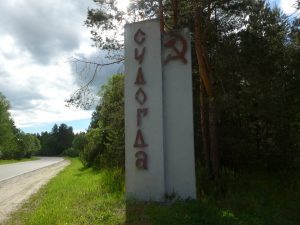 для индийской цивилизации – Агра, Тара, Яда и т.д. В 33 км. от Владимира расположен город
для индийской цивилизации – Агра, Тара, Яда и т.д. В 33 км. от Владимира расположен город 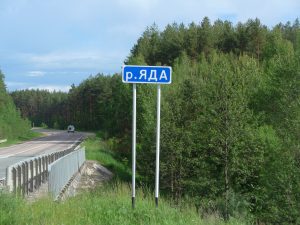 Судогда. На санскрите, «судогха» означает «обильный», а «ядас» — «вода», «река», «близкий союз». В историческом центре города река Яда впадает в реку Судогда. В 4 км. южнее устья Яды, в тоже Судогду впадает река Тарасиха. На Санскрите, тарас означает «энергия», «сила», а тараса — «быстро». В 3,5 км. юго-западнее устья Тарасихи, расположена деревня Райки. В русском языке, Рай – это место вечной совершенной жизни, в гармонии с Творцом (Ра). Рай является историческим титулом чести в Индии. В Санскрите, слово «рай» означает богатство. Тара имеет множество значений, включая «чистый», «высокий», «спаситель» и т.д.
Судогда. На санскрите, «судогха» означает «обильный», а «ядас» — «вода», «река», «близкий союз». В историческом центре города река Яда впадает в реку Судогда. В 4 км. южнее устья Яды, в тоже Судогду впадает река Тарасиха. На Санскрите, тарас означает «энергия», «сила», а тараса — «быстро». В 3,5 км. юго-западнее устья Тарасихи, расположена деревня Райки. В русском языке, Рай – это место вечной совершенной жизни, в гармонии с Творцом (Ра). Рай является историческим титулом чести в Индии. В Санскрите, слово «рай» означает богатство. Тара имеет множество значений, включая «чистый», «высокий», «спаситель» и т.д.
В роду древнеиндийского царя Яду родился Кришна – один из главных божеств индуизма. Ему посвящён храм Джаганат в Пури, являющийся одним из главных храмов индуистов. В «Бхагавад Гите» именно Кришна дает философские наставления Арджуне – сыну Индры. Исток реки Индрус находится в 80 километрах на восток от места слияния рек Яда и Судогда. Сыном Кришны воплощался Санат Кумара. Вместе они победили свирепого демона по имени Никумба, который похитил принцессу Ядава, внучку Кришны. Никумба был сыном Кумбхакарны (санскр. «ушастый горшок»), который являлся младшим братом Раваны – главного антигероя эпоса «Рамаяна». В Ленинградской области есть река с названием Раван.
В 37 километрах на северо-восток от слияния рек Яда и Судогда, федеральную трассу М-7 пересекает река Агра. На санскрите, «агра» означает «начало», «лучший» и т.д. В Индии город Агра являлся столицей империи Великих Моголов. Как и нынешняя столица Нью-Дели, Агра стоит на священной реке Ямуна, а Ямуга течёт в Московской области, куда была перенесена столица из Владимира.
По дороге из Владимира на Судогду / Яду расположено село Вятское, а на другой стороне дороги – турбаза «Ладога». В древности, Ладугой называлась река Вятка в Вятской губернии (ныне – Кировская область). В её бассейне, недалеко от города Кирово-Чепецк, находится особый Город Храмов Арарат, из которого идут в этот мир Программы развития.
Также по пути из Владимира в Судогду, находится деревня Бараки. Она расположена в Судогодском районе Владимирской области России и входит в состав Вяткинского сельского поселения. Барак – название крупной реки в северо-восточной Индии, начинающейся в штате Манипур. Река Барак – начало и составная часть речной системы Сурма-Мегхна (946 км.), которая является одной из трёх основных составляющих дельты реки Ганги. На границе с Бангладеш Сурма-Мегхна разделяется на два рукава: северный (река Сурма) и южный (река Кушияра).
Суромна – село, стоящее на ручье Сунгирь, между 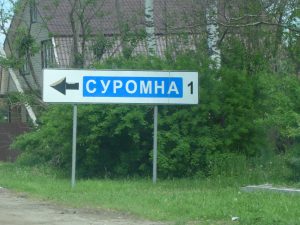 Владимиром и Боголюбово. Этот сегодня небольшой ручей был полноводной рекой несколько тысяч лет назад. Сурмино — деревня в Одинцовском районе Московской области, в которой находится множество названий, переводимых с санскрита. Также, Сурмино – деревня в Дмитровском районе Московской области, в составе сельского поселения Костинское. Костёнки в Воронежской области и Сунгирь во Владимирской области являются одними из самых известных и древних в мире стоянок древнего человека. Село Сурмино есть в Кузнецком районе Пензенской области. Город Пенза располагается на обоих берегах реки с санскритским названием Сура, берущей начало в Ульяновской области.
Владимиром и Боголюбово. Этот сегодня небольшой ручей был полноводной рекой несколько тысяч лет назад. Сурмино — деревня в Одинцовском районе Московской области, в которой находится множество названий, переводимых с санскрита. Также, Сурмино – деревня в Дмитровском районе Московской области, в составе сельского поселения Костинское. Костёнки в Воронежской области и Сунгирь во Владимирской области являются одними из самых известных и древних в мире стоянок древнего человека. Село Сурмино есть в Кузнецком районе Пензенской области. Город Пенза располагается на обоих берегах реки с санскритским названием Сура, берущей начало в Ульяновской области.
На санскрите «Сура» означает «Бог». Сурья — это бог Солнца в индуизме, а его главный храм расположен в Конараке. Вьяс – один из притоков российской реки Сура, а мудрец Вьяса (санскр. «подробное изложение») считается автором или составителем Махабхараты, Веданты, Вед, Пуран — энциклопедического источника знаний об истории Вселенной, генеалогии богов, царей, героев, а также индуистской философии и космологии. На санскрите, «пурана» буквально означает «древний», «старый». Плато Путорана — географический центр России. Оно полностью сложено базальтами и является вторым в мире по величине трапповым плато, после плато Декан в Индии. Название Декан происходит от санскритского слова «дакшина», т.е. «южный». В целом, Сибирские траппы являются крупнейшими в мире. Центр траппового магматизма располагался в районе Норильска, обладающего богатейшими месторождениями медно-никель-платиноидных руд. В 330 км. южнее Норильска, в  Курейке, у Полярного круга, находился до 1917 года в ссылке Сталин. Его фамилия на санскрите означает «обладающий сосудом». Действительно, он был сосудом знаний. Писатель-историк Рой Медведев сообщает, что Сталин читал по несколько книг в день и около тысячи книг в год. Сам Сталин говорил, что его дневная норма — страниц 500. Его библиотека была уникальной. Учителем вышеуказанного Вьясы был мудрец Нарада. Народная гора в Приполярном Урале является наивысшей точкой Уральских гор, на юге которых расположен знаменитый Аркаим, получивший своё название от имени доминирующей над местностью горы. Символично, что Арка – это синоним Сурьи – бога Солнца в индуизме. Это небесное светило всегда ассоциировалось со знаниями и самой жизнью, которая невозможна без Солнца.
Курейке, у Полярного круга, находился до 1917 года в ссылке Сталин. Его фамилия на санскрите означает «обладающий сосудом». Действительно, он был сосудом знаний. Писатель-историк Рой Медведев сообщает, что Сталин читал по несколько книг в день и около тысячи книг в год. Сам Сталин говорил, что его дневная норма — страниц 500. Его библиотека была уникальной. Учителем вышеуказанного Вьясы был мудрец Нарада. Народная гора в Приполярном Урале является наивысшей точкой Уральских гор, на юге которых расположен знаменитый Аркаим, получивший своё название от имени доминирующей над местностью горы. Символично, что Арка – это синоним Сурьи – бога Солнца в индуизме. Это небесное светило всегда ассоциировалось со знаниями и самой жизнью, которая невозможна без Солнца.
В Бангладеш, в округе Кишоргандж, Сурма и Кушияра окончательно сливаются вновь, образуя реку Мегхна. Далее она течёт к городу Чандпур, где в неё впадает река Падма — участок реки Ганга от впадения основного рукава реки Брахмапутры. На русском Севере, как минимум пять рек с названием Падма: три — в Северном Прионежье, одна — в Архангельской области и ещё одна — в Кирилловском районе Вологодской области. Вряд ли Барак Обама имеет прямое отношение к Владимирской деревне Бараки. Здесь санскрит. Интересно, что имя Барак имеет значение «молния» на иврите и «благословенный» на арабском.
Северным пригородом Судогды является село Лаврово. В переводе с греческого “Лавра” означает “улица или город монастырей”. Святой архидиакон Стефан, проповедовавший в Иерусалиме в I веке, часто изображается вместе с Лаврентием на (боковых) вратах в алтарь православных церквей.
Во Владимирском Успенском соборе, где короновали русских князей, рукоположили в сан в XIV веке первого пермского епископа Стефана Пермского. Греческое имя Стефан имеет значение «венец», т.е. лавр — символа триумфа. Триумфаторы надевали лавровый венец. Жрецы надевали лавровые венцы при жертвоприношениях. Одна из самых известных достопримечательностей родины вождя мирового пролетариата – «Венец». Слово «лауреат» означает «увенчанный лавром».
В Древней Греции лавр считался священным растением Аполлона. Весной и летом он жил в Дельфах, а осенью улетал на своей колеснице, запряжённой белоснежными лебедями, в Гиперборею, где родилась его мать — титанида Лето. Она родилась, где царствуют Бореады — сыновья Борея и Орифии, которая признавалась и одной из цариц амазонок, союзницей скифского царя Сагила. Её имя обыгрывается в связи с названием Рифейских гор – возвышенностей, дающих начало основным рекам Скифии. Сегодня Рифейские горы принято ассоциировать с Уральскими горами. Однако, если брать во внимание истоки таких великих русских рек как Волга, Днепр, Западная Двина, Угра и т.д., то этими горами / возвышенностями может оказаться Валдай, являющийся частью Северных Увалов. В древнегреческих легендах, за владениями Борея и Орифии проживали гипербореи. Борея (нынешняя Казань) была столицей Евразийской Гипербореи, основанной потомками выживших атлантов примерно 8000 лет назад.
В 3 км. на юго-восток от Судогды расположен посёлок Муромцево. Здесь настоящий русский благотворитель и предприниматель граф Владимир Семёнович Храповицкий создал уникальный дворцово-парковый ансамбль, с каскадом прудов и усадьбой в готическом стиле, стилизованной под замок. Ныне этот замок входит в Государственный перечень объектов культурного наследия России.
Принадлежавшая ему коллекция картин, рисунков и предметов декоративно-прикладного искусства стала основой собрания Владимирско-Суздальского историко-художественного и архитектурного музея-заповедника. В 1917 году он передал её в дар советской власти. Владимир Храповицкий был гусарским полковником, всю воинскую службу он проходил в Лейб-гвардии Гусарском Его Величества полку, находясь при дворе во времена правления Александра III и его сына Николая II, пользуясь расположением обоих.
После завершения военной службы в столице (стоящей на Нильском меридиане), Владимир Храповицкий поселился в имение отца Муромцево и занялся лесопромышленной разработкой и продажей леса, а также материалов из него. Благодаря своей настойчивости и привлечению лучших специалистов, он стал крупным лесопромышленником. Более того, в начале ХХ века Храповицкий внёс огромный вклад в развитие российского лесного хозяйства, повышение продуктивности естественных лесов и создание устойчивых искусственных лесов. Он создал на судогодской земле одно из лучших и богатейших лесных хозяйств в центральной России.
В историю он также вошёл как последний предводитель дворянства Владимирской губернии. После 1917 года он с женой эмигрирует во Францию, передав управление хозяйством новой власти, а уездный исполком принял постановление об охране усадьбы. Его жена происходила из греко-крымского происхождения рода Головиных (Ховриных), в котором в XV — XVI веках передавалась по наследству должность казначея Московского государства. Боярский род Ховриных берёт своё начало от византийского рода, в своё время управлявшего Трапезундом (совр. Турция) и впоследствии осевшего в княжестве Феодоро (Крым). Феодоро переводится как «Божий дар», это княжество было последним оплотом Византийской империи, последним островком христианства в Черноморье после падения Херсонеса и Константинополя под ударами Османов в середине XV века. Примечательно, что имя основателя Османской империи, Османа I (1299 – 1324), может быть связано с терминами Атаман и Атман. Византийские предки Ховриных владели городом Судак в Крыму с Мангупом и Балаклавой. Один из представителей этого рода выехал из Крыма в Москву в 1393 году, во времена вышеуказанного Стефана Пермского, который был посвящен в сан епископа Перми во Владимире.
Владимир Храповицкий был похоронен на территории старинного русского кладбища в Висбадене – столице земли Гессен в Германии. Это крупнейшее православное кладбище в Европе расположено при храме Святой Елизаветы, называемым «русским». Он построен в память о великой княжне Елизавете Михайловне (1826 – 1845), дочери великого князя Михаила Павловича (1798 — 1849), который был младшим сыном Павла I, младшим братом императоров Александра I (стоявшего у истоков создания в Москве Храма Христа Спасителя) и Николая I.
Мужем Елизаветы Михайловны был последний герцог Нассауский Адольф. После поражения Австрии, герцогство Нассау было аннексировано Пруссией. Елизавета Михайловна безвременно ушла из жизни в 1845 году при родах, вместе с новорождённой девочкой. Герцог был настолько потрясён утратой, что решил построить храм на могиле своей умершей русской жены, племянницы Николая I. Основные средства на строительство храма в честь святой праведной Елисаветы — святой покровительницы умершей принцессы, были переданы, с разрешения Николая I, из приданого герцогини Елизаветы.
Святая Елисавета была матерью Иоанна Крестителя, супругой священника Захарии, родственницей Девы Марии, старшей сестрой святой Анны – бабушки Иисуса Христа. Интересна история русской императрицы Елизаветы, правившей в XVIII веке.
В основу своего проекта храма святой Елисаветы на горе Нероберг в Висбадене, немецкий архитектор Филипп Гофман перенёс впечатления от строившегося в центре Москвы Храма Христа Спасителя. Все иконы на иконостасе были исполнены профессором Санкт-Петербургской Императорской академии искусств Карлом фон Неффом. Он расписывал в Москве Храм Христа Спасителя (связанный с Элохим) и Исаакиевский собор в Санкт-Петербурге, стоящий на Нильском меридиане.
В 1896 году Николай II, посетивший Висбаден вместе с членами Императорского Двора, выкупил на собственные деньги этот храм святой Елисаветы вместе с участком земли и леса, включая кладбище, где в 1922 году будет похоронен Владимир Храповицкий. В 1913 году, будучи предводителем дворянства Владимирской губернии, Владимир Храповицкий сопровождал Николая II в его поездках по Владимирской губернии по случаю 300-летия династии Романовых на российском престоле. Особо долго император задержался в Боголюбово, на месте убийства в 1174 году первого (но некоронованного по Византийскому обряду) царя Андрея Боголюбского. В 1918 году в день убийства Андрея Боголюбского произойдет трагическое событие в жизни самого Николая II и его семьи в Ипатьевском доме в Екатеринбурге. С санскрита переводится название Ганина Яма. Рядом с Боголюбово находится знаменитая церковь Покрова на Нерли. Название этой реки коррелируется определенным образом с названием горы Нероберг, на которой стоит в Висбадене вышеуказанный храм святой Елисаветы.
С Нероберга открывается лучший вид на Висбаден и Майнц Висбаден находится на правом берегу Рейна при впадении реки Майна в Рейн (30 км. от Франкфурт-на-Майне, который является крупнейшим городом земли Гессен). На другом берегу Рейна находится город Майнц, считающийся одним из старейших городов Германии. В России есть несколько рек с названием Майна. В переводе с немецкого, «берг» означает «гора». В 130 км. на юг от Кирова есть посёлок Нема, а в 70 км. на юг от него – посёлок Кильмезь. При этом Киль — столица и крупнейший город немецкой земли Шлезвиг-Гольштейн на севере Германии, который имеет древние связи с Россией. Что означает «Неро» в Висбадене нет однозначных версий. Один из древнейших русских городов Ростов Великий стоит на озере Неро, а Неру – фамилия первого Премьер-министра независимой Индии. В озеро Нера впадает красивейшая река Сара.
В главном соборе Боголюбского монастыря в конце 1990-х на куполе его алтарной части (т.е. над алтарём), где обычно изображается Господь Вседержитель (Саваоф или Царь славы), чудесным образом проявился лик Николая II. Таким образом, на месте, где был лик Царя Небесного, проступал лик царя земного, последнего из рода Романовых. Это чудо вошло в список чудес к канонизации Царской семьи. Боголюбово находится рядом с древней стоянкой (цивилизацией) Сунгирь.
В нескольких километрах на северо-восток от Судогды, река Шиверка сливается с рекой Передел, которая через пару километров впадает в реку Яда на восточной окраине Судогды, у деревни Загорье. Загорск – название Сергиева-Посада в Советское время. Исходя из небольшого размера и скромного характера реки Шиверка, её название логичнее отнести скорее к Шиве (санкр. «Сива»). В России есть несколько рек с названием Сива. Обычно, шивера – это относительно мелководный участок реки с беспорядочно расположенными в русле подводными и выступающими из воды камнями (шиверами). Шиверы образуются в больших реках, имеющих быстрое течение.
Например, на реке Индигирке (1726 км.) в Якутии шиверы, состоящие в основном из валунов, протягиваются иногда на сотни метров, которые можно увидеть за многие километры. Посёлок Усть-Нера, стоящий в месте впадения реки Нера в Индигирку известен как центр золотодобычи. Район Усть-Неры — Оймякона известен как северный полюс холода.
Также изобилует каменистыми порогами (шиверами) русло реки Подкаменная Тунгуска (1865 км.). Она известна во всем мире благодаря событию, произошедшему в её бассейне в 1908 году. Произошедший воздушный взрыв связывают с падением метеорита, но до сих пор никто не нашёл его осколков. Более того, небесные тела в атмосфере взрываться не могут. Журнал «Мировой Ченнелинг» №7 (39) 2017 проливает Новый Свет на событие, которое названо людьми падением Тунгусского метеорита (Эвенкия, Красноярский край). Это было «особое небесное тело, которое обладало свойствами и метеорита, и кометы, и шаровой молнии, и свойствами некоторых других космических тел». В нём «была помещена энергоинформация как для особых сакральных (тонкоматериальных) пространств Земли, так и для плотных энергоинформационных центров планеты». Место так называемого падения Тунгусского метеорита в сибирской тайге «является особым, сакральным участком на теле Земли».
На месте села Ванавара, рядом с которым упал метеорит, 26 000 лет назад лемурийцами был основан Храм Солнца, который на их 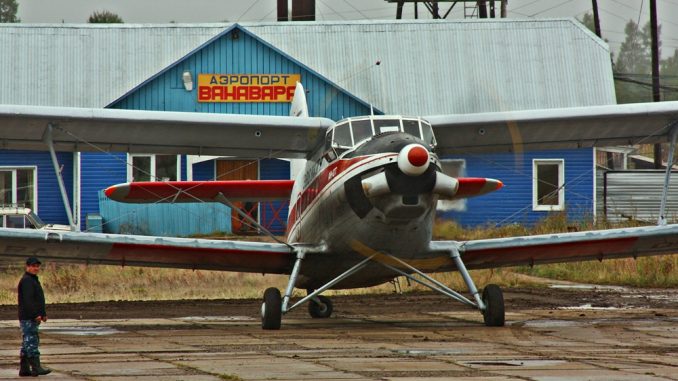 языке звучал как Эйванара. Нара (санкср. ‘герой’) — река в Московской обалсти. Эйва — коллективное самосознание мира Пандоры, богиня народа Нави в фильме «Аватар».
языке звучал как Эйванара. Нара (санкср. ‘герой’) — река в Московской обалсти. Эйва — коллективное самосознание мира Пандоры, богиня народа Нави в фильме «Аватар».
В индийской мифологии, ванара — могущественная раса обезьян. Её самым известными представителями были Хануман и Сугрива — союзники Рамы. В соседней с Владимирской Нижегородской области, Варнава — приток реки Мокша. Значение имени Варнава — «сын утешения».
«Этот величественных храм просуществовал более трёх тысяч лет. На месте аэропорта Ванавары некогда существовало сакральное пространство, где не один раз лемурийцы творили коллективное Вознесение». Это особый портал на планете. Район взрыва Тунгусского метеорита находится на расстоянии 66 км. к северу от Ванавары, но чтобы добраться до эпицентра взрыва, необходимо преодолеть 200 км. по рекам, включая приток Подкаменной Тунгуски — реку Чамба.
В Центральной Индии есть река Чамбал – приток священной Ямуны, а река Ямуга течёт в Московской области. Чамба — одно из старейших княжеств на территории современной Индии. Ныне – это штат Химачал-Прадеш на севере Индии. В этом штате берёт начало в Гималаях река Ченаб – одна из пяти рек формирующих регион Пенджаб («Пятиречье»), где сформировалась Индская цивилизация, так же называемой Хараппской. Челяба — обиходное название города Челябинска, над котором в 2015 пролетел так называемый метеорит, упавший в 60 км. в озеро Чебаркуль. Чела – это ученик духовного учителя. Эль Мория передал книгу «Чела и Путь».
В штате Химачал-Прадеш есть город Чамба. Также, город с таким названием имеется в соседнем штате Уттаракханд, в котором находятся священный Харидвар и Национальный парк «Джим Корбетт» в районе горного хребта Шивалик («Лик Шивы»). Это место не случайно является самым старым национальным парком Индии. Журнал «Мировой Ченнелинг» рассказывает историю о том, как примерно 5000 лет назад сюда пришли из Сибири катарусы, чтобы пробудить людей «Спящего Города», находившихся в состоянии самадхи. Вместе они вернулись в Тартоарию, столица которой находилась на месте нынешней Тюмени.
Чампа – имя индийской девушки, которая влюбилась в Афанасия Никитина – первого европейца, достигшего берегов Индии. Остров Чампа на Земле Франца Иосифа (Архангельская область) известен шарообразными крупными камнями, которые тоже есть в Индии и в Кировской области, где есть много названий переводимых с Санскрита, включая деревня Карачи (недалеко от деревни Архангельское), расположенная между Кировым и вышеуказанной Немой.
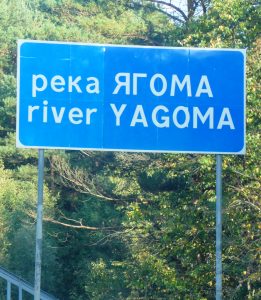 Если двигаться от Владимира / Боголюбово по трассе М-7, то недалеко от них, в районе деревни Бородино, автомагистраль пересекает река Ягома. Вышеуказанный индийский город Агра стоит на священной реке Ямуна, как и Дели, ставший столицей Индии после Агры. В Московской области, имеющих множество топонимов, переводимых с Санскрита, река Ямуга дважды пересекает федеральную трассу М-10. Это рядом с Тверской областью, где есть деревня Дели и два населенных пункта с названием Дельки. Указанная деревня Дели стоит у реки с санскритским названием Кава.
Если двигаться от Владимира / Боголюбово по трассе М-7, то недалеко от них, в районе деревни Бородино, автомагистраль пересекает река Ягома. Вышеуказанный индийский город Агра стоит на священной реке Ямуна, как и Дели, ставший столицей Индии после Агры. В Московской области, имеющих множество топонимов, переводимых с Санскрита, река Ямуга дважды пересекает федеральную трассу М-10. Это рядом с Тверской областью, где есть деревня Дели и два населенных пункта с названием Дельки. Указанная деревня Дели стоит у реки с санскритским названием Кава.
В 4 км. на северо-восток от пересечения владимирской Ягомой трассы М-7, находится село Гатиха. В 1,5 километрах на 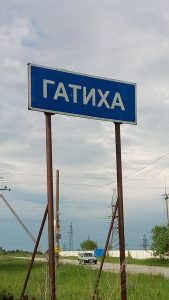 северо-восток от села Гатиха расположено озеро Святое. На Санскрите, слово «гати» означает «движение», «убежище», «курс», «дорожка», «счастье», «путь души» и т.д. В Венёвском районе Тульской области есть деревня Гати. Населенные пункты с таким названием есть в Белоруссии и на Украине. На Урале до сих пор словом «гать» называют дорогу или настил из брёвен для проезда через топкое место или болото. Рядом с Екатеринбургом и Ганиной Ямой расположена станция Гать, входящая в состав Исетского поселкового совета. «Гата» означает «скопление», «горшок», «измерение».
северо-восток от села Гатиха расположено озеро Святое. На Санскрите, слово «гати» означает «движение», «убежище», «курс», «дорожка», «счастье», «путь души» и т.д. В Венёвском районе Тульской области есть деревня Гати. Населенные пункты с таким названием есть в Белоруссии и на Украине. На Урале до сих пор словом «гать» называют дорогу или настил из брёвен для проезда через топкое место или болото. Рядом с Екатеринбургом и Ганиной Ямой расположена станция Гать, входящая в состав Исетского поселкового совета. «Гата» означает «скопление», «горшок», «измерение».
Гаты – это наиболее значимая и почитаемая часть Авесты — собрание священных текстов зороастрийцев. Есть версия, что основатель этой древнейшей религии – пророк Заратустра родился на слиянии Камы и Чусовой, недалеко от современной Перми. Упоминаемая в Авесте мировая гора Хара Березайте тоже может иметь корни в России. 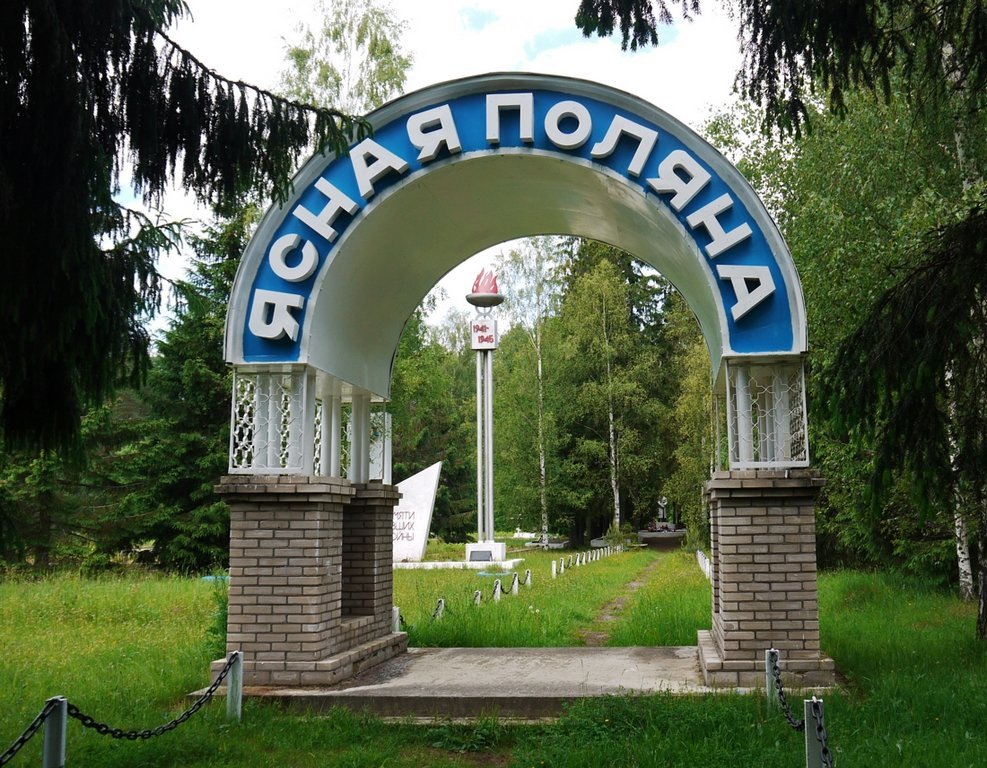
Гаты (гимны Заратустры, обращенные к единому Богу-Творцу) входят в состав авестийской книги Ясна – первой и важнейшей части Авесты. Снова здесь просматривается связь с Россией. Зеркало русского индуизма – Лев Толстой плодотворно работал и погребен в Ясной Поляне.
Также в Тульской области есть город Ясногорск на реке Вашана (приток Оки), в 30 км. севернее Тулы. Само название области 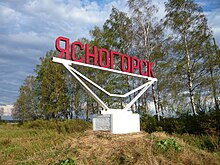 может иметь связь с Туле – северным континентом, Арктической Гипербореей.
может иметь связь с Туле – северным континентом, Арктической Гипербореей. 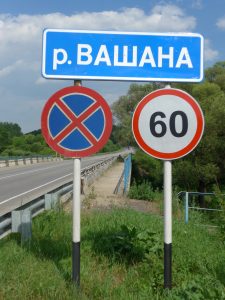
В 30 км. от Ясногорска в селе Савино, возле церкви Казанской Богоматери, расположена могила командира легендарного крейсера «Варяг» контр-адмирала В.Ф. Руднева. В память о нём и проявленном экипажем «Варяга» бессмертном подвиге русского духа, было предложение назвать нынешний Ясногорск именем Руднева. Решение о названии Ясногорска было принято в 1965 году. Город вырос из старинного села Лаптево, впервые упоминавшегося в 1578 году, т.е. в правление Ивана Грозного. О происхождении Тульской топонимики нет единого мнения, включая Лаптево.
Если посмотреть глубже, море Лаптевых — окраинное море Северного Ледовитого океана. Оно омывает Новосибирские острова, с которых их исследователь Яков Санников увидел севернее остров-призрак названный «Земля Санникова». В СССР эту загадочную землю исследовал известный учёный-геолог академик Владимир Обручев, автор научно-фантастического романа «Земля Санникова» (1926). Одноимённый приключенческий фильм был снят в символическом 1973 году. Обручев родился в Тверской губернии, имеющей множество топонимических названий, переводимых с санскрита. Его именем назван хребет в Саянах, где во времена Лемурии (по информации журнала «Мировой Ченнелинг») была обнаружена загадочная пещера с четырехруким мудрецом Амон-Ра, который был представителем Духовного правительства планеты, вошедшим в тело аримойца, находившимся в состоянии самадхи.
В Индии, Восточные и Западные Гаты – это горные системы на восточном и западном побережьях Индостана, соответственно. Также, гаты – это каменные ступени, служащее для ритуального омовения индуистов. Первым европейцем, который достиг берегов Индии, был Тверской купец Афанасий Никитин. Уроженцем Тверской земли является и вышеуказанный академик Владимир Обручев. Предки Владимира Путина тоже из Тверской области. Самые известные гаты расположены в Варанаси, на берегу священной Ганги. Ниже по течению, у священного Праяга, сливаются священные для сотен миллионов индуистов Ганга и Ямуна. Ямуга – река, текущая недалеко от границы Московской и Тверской областей.
5 км. на юго-восток от Гатихи находится место пересечения М-7 речкой Девка. Оно находится рядом с деревней Пенкино. На Санскрите, слово «дева» означает «Бог», «бог», «божество», «божественный», «царь» и т.п. Название Пенкино тоже имеет параллели в Санскрите, где пена — это «фена», а «фенака» — это мыло.
В 1 км. севернее Пенкино, на правом берегу Клязьмы, находится урочище Камбары,  которое является Особо охраняемой природной территорией, т.к. имеет особое природоохранное, научное, культурное, эстетическое, рекреационное и оздоровительное значение. Здесь расположены детский оздоровительно-образовательный центр «Лесной городок», базы отдыха «Сосенки» и «Камбары». Памятник природы образован в целях сохранения естественных высокопродуктивных лугов, лесных массивов, водных объектов. Клязьма дренирует его западную часть, а восточная дренируется вышеуказанной речкой с глубоким названием Девка. В 25 километрах на восток от Камбар находится устье реки Агра, а в 3 км. на запад – село Гатиха. На Санскрите, слово «Камбара» означает «пёстрый».
которое является Особо охраняемой природной территорией, т.к. имеет особое природоохранное, научное, культурное, эстетическое, рекреационное и оздоровительное значение. Здесь расположены детский оздоровительно-образовательный центр «Лесной городок», базы отдыха «Сосенки» и «Камбары». Памятник природы образован в целях сохранения естественных высокопродуктивных лугов, лесных массивов, водных объектов. Клязьма дренирует его западную часть, а восточная дренируется вышеуказанной речкой с глубоким названием Девка. В 25 километрах на восток от Камбар находится устье реки Агра, а в 3 км. на запад – село Гатиха. На Санскрите, слово «Камбара» означает «пёстрый».
Деревня Камбар есть в Татарском районе Новосибирской области, две деревни в Крыму назвались Камбар. Первая – это современное село Степное в Сакском районе, вторая – село Перепёлкино в Джанкойском районе. В Удмуртии есть город Камбарка, рядом с рекой Кама. В Пакистане есть город Камбар, находящийся всего в 30 километрах к северу от всемирно известного Мохенджо-Даро – крупнейшего древнего города долины Инда, который процветал в третьем тысячелетии до нашей эры, был современником цивилизации Древнего Египта и Древней Месопотамии. Столица Удмуртии – город Ижевск, который ещё называют оружейной столицей России, стоит на реке Иж, являющейся притоком Камы. Эти названия легко переводятся с Санскрита. Кама – это «любовь, желание». Иж – «властитель, хозяин». Даже название республики имеет определенные связи с Санскритом. Уддмара означает «отличный, респектабельный, высокого ранга». Мурти означает «воплощение», «инкарнация», божество» и т. д.
В Мексике город Акамбаро, расположенный в 300 километрах к северу от столицы, стал известен благодаря знаменитой коллекции Вальдемара Джульсруда. Она была собрана близ Акамбаро во время раскопок во второй половине ХХ века. В коллекции содержалось более 33 тысяч статуэток из глины и камня, изображающих людей разных рас и динозавров разных видов. Как отмечает российский исследователь Андрей Жуков: «факт сосуществования и тесного взаимодействия человека и динозавра не просто опровергает линейный эволюционизм теории происхождения видов на Земле, но вступает в непримиримое противоречие со всей современной мировоззренческой парадигмой». Интересную версию о Камнях Ики (Перу), где тоже изображены люди, взаимодействующие с динозаврами и ящерами, даёт журнал «Мировой Ченнелинг» № 4(10) 2013. Речь идёт о Тоцтеках / Тольтеках (солнечных человекобогах), живших чуть более 7 000 лет назад. Их культура базировалась на связи с Плеядами, а кураторами этой человеческой культуры на раннем этапе развития выступила плеядеанская цивилизация Разумных Змей. Неслучайно тотемом представителей этой цивилизации стали змеи, а образ Пернатого Змея является священным от Мексики до Перу. Совершая путешествия вне физического тела по разным временам, тольтеки создавали особую библиотеку для будущего Земли, изображая на камнях разные картины жизни прошлого. Библиотека камней Ики объединена тематикой развития людей за последние пять миллионов лет.
 Вышеуказанная река Ягома впадает в Клязьму в 5 км. юго-западнее Пенкино / места пересечения М-7 речки Девка. В 2,5 км. на северо-запад от устья Ягомы расположен популярный клуб-отель с символическим названием «Велес». На Руси, бог Велес (Волос) всегда ассоциировался с Плеядами. В Волосовском районе Ленинградской области (имеющим Велеса на своей гербе) находится Извара — знаменитая усадьба Рерихов. На Санскрите, слово «Извара» означает «властелин», «царь», «божество».
Вышеуказанная река Ягома впадает в Клязьму в 5 км. юго-западнее Пенкино / места пересечения М-7 речки Девка. В 2,5 км. на северо-запад от устья Ягомы расположен популярный клуб-отель с символическим названием «Велес». На Руси, бог Велес (Волос) всегда ассоциировался с Плеядами. В Волосовском районе Ленинградской области (имеющим Велеса на своей гербе) находится Извара — знаменитая усадьба Рерихов. На Санскрите, слово «Извара» означает «властелин», «царь», «божество».
Практически напротив устья Ягомы, но на противоположном берегу Клязьмы, расположен санаторий им. Ленина. В 1 км. от него в Клязьиу впадает река Синеборка. Бор — место, с которого начиналась Москва. Загадочный синий цвет имеет в своём названии не только река Синеборка, но и Синий Камень на Плещеевском озере, первый буквы которого (ПО) означают Сириус у африканских  догонов. Более того, притокм Синеборки является река Куровка, устье которого находится в 4,5 км. южнее устья Синеборки. В 3 км. юго-западнее устья Синеборки находится устье реки Судогда, у села Спас-Купалища, где расположен Спасо-Преображенский монастырь, ранее — подворье Боголюбского монастыря. Это место загадочное и притягивающее. Здесь любил охотиться Андрей Боголюбский, купался на слиянии Иван Грозный, после Казанского похода. С его именем легенды связывают появление сначала церкви во имя Спаса, давшей позже название монастырю. В Советское время рядом располагался пионерлагерь «Солнечная поляна». Нынешние здания монастыря датируются второй половиной XIX века. Главный храм строил храм на свои средства Николай Ильич Грузинский — внук последнего грузинского царя Георгия XII. Имение Грузинского находилось неподалёку (Михайловское). В нём бывал известный русский композитор Чайковский. На главных воротах монастыря — знаменитая цитата из Евангелия от Матфея: «Приiдите ко Мне все труждаюiщиеся ‑ и обремененнiи и Азъ упокою вы». Такая же цитата на стоящим на Сухоне храме Дмитрия Солунского в Дымковской Слободе Великого Устюга. Сегодня этот древний русский город больше известен как Родина Деда Мороза. Примечательно, что святой источник Спасо-Преображенского монастыря в Спас-Купалищах посвящён раннехристианскому святому Вонифатию Римскому, чья память приходится на 1 января.
догонов. Более того, притокм Синеборки является река Куровка, устье которого находится в 4,5 км. южнее устья Синеборки. В 3 км. юго-западнее устья Синеборки находится устье реки Судогда, у села Спас-Купалища, где расположен Спасо-Преображенский монастырь, ранее — подворье Боголюбского монастыря. Это место загадочное и притягивающее. Здесь любил охотиться Андрей Боголюбский, купался на слиянии Иван Грозный, после Казанского похода. С его именем легенды связывают появление сначала церкви во имя Спаса, давшей позже название монастырю. В Советское время рядом располагался пионерлагерь «Солнечная поляна». Нынешние здания монастыря датируются второй половиной XIX века. Главный храм строил храм на свои средства Николай Ильич Грузинский — внук последнего грузинского царя Георгия XII. Имение Грузинского находилось неподалёку (Михайловское). В нём бывал известный русский композитор Чайковский. На главных воротах монастыря — знаменитая цитата из Евангелия от Матфея: «Приiдите ко Мне все труждаюiщиеся ‑ и обремененнiи и Азъ упокою вы». Такая же цитата на стоящим на Сухоне храме Дмитрия Солунского в Дымковской Слободе Великого Устюга. Сегодня этот древний русский город больше известен как Родина Деда Мороза. Примечательно, что святой источник Спасо-Преображенского монастыря в Спас-Купалищах посвящён раннехристианскому святому Вонифатию Римскому, чья память приходится на 1 января.
Через 5 км. от места пересечения трассой М-7 речки Девка, эта автодорога пересекает реку Чёрная и идёт вдоль начинающегося Леса Шермана. В нескольких километрах на север от М-7 и Леса Шерамана расположено озера с говорящим названием Великое. Шарма — распространенное имя и фамилия в Индии. Изначально, оно было внутри брахманов и кшатриев, но сегодня популярно в различных слоях общества. На Санскрите, слово «сарма(н)» означает «защита», «комфорт», «радость», «блаженство», и т.п. В соседней Ярославской области, в озеро Неро впадает река Сара. В Нижнем Новгороде, где традиционно окали, есть Сормово (родина Николая Хмелева), расположенное рядом со слиянием река Волга и Ока, чьи названия тоже переводятся с Санскрита (см. выше). Бывшая деревня Ширманиха при речке Ущера является с декабря 1993 года микрорайоном Октябрьского района города Владимир.
В 17 км. на восток от места пересечения трассой М-7 вышеуказанной реки Чёрная, эта федеральная автомагистраль пересекает реку Агра, а ещё через 25 км. М-7 пересекает несколько раз реку Тара (см. выше).
II. Лукново
В 18 километрах от пересечения федеральной трассой М-7 реки Тара, находится Коурково. Кауравы («потомки Куру») — 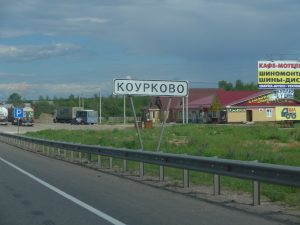 персонажи «Махабхараты» — двоюродные братья Пандавов.
персонажи «Махабхараты» — двоюродные братья Пандавов.
За Коурково расположен поворот с М-7 на посёлок Лукново. Лукнов или Лакхнау — столица 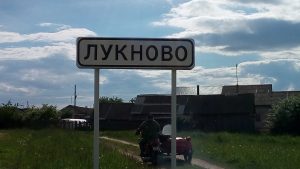 штата Уттар-Прадеш, в котором находится вышеуказанный город Агра (столица Великих Мологов), с его удивительным Тадж-Махалом. В индийских штатах Уттар-Прадеш и Западная Бенгалия (столица — Калькутта) гаплогруппа R1a1 встречается с частотой 60% и 72% соответственно. В целом по Индии, у брахманов этот показатель составляет, в среднем, символические 43%.
штата Уттар-Прадеш, в котором находится вышеуказанный город Агра (столица Великих Мологов), с его удивительным Тадж-Махалом. В индийских штатах Уттар-Прадеш и Западная Бенгалия (столица — Калькутта) гаплогруппа R1a1 встречается с частотой 60% и 72% соответственно. В целом по Индии, у брахманов этот показатель составляет, в среднем, символические 43%.
Уттар-Прадеш (дословно — Северная страна) играет значительную роль в культурной и политической жизни Индии. В этом штате расположены священные для индуистов и буддистов города Аллахабад и Варанаси, привлекающие ежегодно десятки миллионы паломников и туристов. В Аллахабаде родились Джавахарлал Неру и его дочь Индира Ганди.
В 2,5 километрах от Лукново находится деревня Каликино. Вряд ли это название связано с былинными Каликами перехожими, учитывая обилие санскритских названий вокруг, стоит посмотреть глубже. На санскрите, «калика» означает «бутон», «разделение времени», «уместный», «черный» и т.д. Калика – индийское девичье имя, «та, кто является Богиней Времени». Калика – имя богини Кали, разрушительницы невежества. Кали или Калика благословляет и освобождает тех, кто стремится познать Бога, достичь мокши. На холме Калика был расположен древний город Удджайн — один из семи священных городов индуизма, столица первого индийского императора Ашоки, считающегося одним из величайших правителей за всю историю человечества. В Удджайне позже правил легендарный Викрамадитья. Калика (Кали) является супругой Шивы. На санскрите, «шива» или «сива» означает «милостивый». На Урале и в Предуралье есть несколько рек с названием Сива. Одна из них впадает в Каму. На санскрите, «кама» означает «желание» и «любовь».
В 5 км. на запад от Лукново расположено озеро и деревня Пивоварово. Между ними протекает река Суворощь. Возле Лукново в неё впадает река Пенуха. В 2 км. на юго-запад от Лукново находится деревня Наместово. В 7 км. на юг от Наместово расположено село Ям. В названии Наместово слышится всем знакомое индийское приветствие «Намасте». В 20 км. на юго-запад, в Суворощь впадает река Индрус.
На санскрите, слово «пива» означает «вода», а «пивас» — «жир». Слово «пивара» — «толстый», «плотный», а также — «черепаха». Символично, что черепаха является санскритским именем божественного мудреца Кашьяпы в ведийской и индуистской мифологии. Кашьяпа — автор нескольких гимнов «Ригведы», отец богов и всех живых существ. Он него произошло 33 божества, включая таких как Вамана (аватар Вишну) и Вивасват, от сына которого (Ману) произошли люди. Деревня Вамна и река Ваменка находятся в 37 км. на юго-восток от Пивоварово. В ведийской религии, Вивасват не только прародитель людей, но и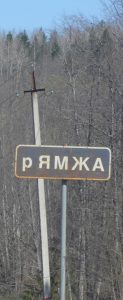 солярное божество. В послеведийский период, он сравнялся с богами и стал Солнцем, то есть Сурьей. Его имя Вивасват стало эпитетом Сурьи.
солярное божество. В послеведийский период, он сравнялся с богами и стал Солнцем, то есть Сурьей. Его имя Вивасват стало эпитетом Сурьи.
С Вивасватом тесно связаны Индра, Сома, Ашвины и особенно бог Яма, отказавшийся от своего бессмертия и совершивший первое жертвоприношение (самопожертвование), которое стало основой возникновения мира и человечества. Яма является сыном Вивасвата, т.е. рассветающего (дня), и Саранью, то есть убегающей (ночи). Имя Вивасват также употребляется как эпитет бога огня Агни и богини зари Ушас (важнейшее и одно из высших божеств «Ригведы»). См. ниже р. Ушна (санскр. usa). Река Ямжа протекает в Великоустюгском районе, является притоком реки Стрига. Иногда Ямжа рассматривается как левый приток Хайма. Хайм — немецкая фамилия. Ямна — название двух рек в Тверской области, откуда родом был Афанасий Никитин — первый европеец, достигший Индии.
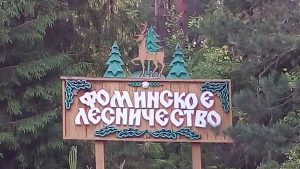 В 22 км. на юго-запад от Яма находится деревня Фоминки, с прудом Центральный и Казанской церковью. По церковному преданию, первым христианским апостолом Индии является святой Фома. С ним также связывается основание христианских церквей в Палестине, Месопотамии, Парфии и Эфиопии. Рядом с Фоминками протекает река Ингирь и расположено озера Уга. На Санскрите, «пра уга» означает «треугольник», «передние валы колесницы».
В 22 км. на юго-запад от Яма находится деревня Фоминки, с прудом Центральный и Казанской церковью. По церковному преданию, первым христианским апостолом Индии является святой Фома. С ним также связывается основание христианских церквей в Палестине, Месопотамии, Парфии и Эфиопии. Рядом с Фоминками протекает река Ингирь и расположено озера Уга. На Санскрите, «пра уга» означает «треугольник», «передние валы колесницы».
В 2,5 км. от озера Уга протекает река Виша. На Санскрите, «виса» означает «яд», а индийское имя Виши — «желание». В 6 км. на юго-запад от 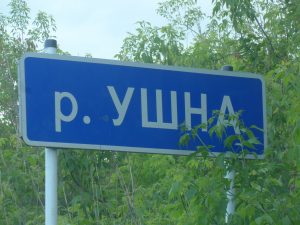
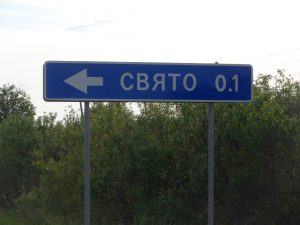 озера Уга находится озеро Свято. Как раз между ними течёт река Виша. Озера Уга и Свято расположены рядом с рекой Ока. В 12 км. на юг от истока реки Виша, в Оку впадает река Ушна. На Санскрите, уша / уса (usa) означает «аврора», «заря»; Ока — «соединение небесных тел», «убежище», «дом» и т.д.
озера Уга находится озеро Свято. Как раз между ними течёт река Виша. Озера Уга и Свято расположены рядом с рекой Ока. В 12 км. на юг от истока реки Виша, в Оку впадает река Ушна. На Санскрите, уша / уса (usa) означает «аврора», «заря»; Ока — «соединение небесных тел», «убежище», «дом» и т.д.
Холостой выстрел с «Авроры» послужил сигналом к революции 7 ноября 1917 года, изменившей дальнейший ход всемирной истории. Это и год рождения Индиры Ганди и день рождения Льва Троцкого, закончившего свою жизнь в Мексике, где расположен «старший брат» мавзолея Ленина — главного организатора вооружённого восстания («Красный Октябрь»).
В 8 км. на юго-запад от истока реки Виша, расположена деревня Пенза. В Пензенской области находится исток реки Мокша и город Мокшан. Её крупнейшей водной артерией является река Сура, берущая начало в 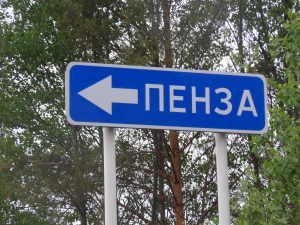 Ульяновской области. Исток реки Мокша расположен в 35 километрах от Пензы, стоящей на реке Сура. Сурья – бог Солнца в индуизме. Сурья — отец Карны, который является одним из центральных героев «Махабхараты», воплощением доблести и чести. Реки Важенка и Сураж сливаясь образуют Индрус. На северной окраине Пензы, где река Пензятка впадает в Суру, расположено село Ухтинка. На санскрите, слово «ухта» означает «восхваление». Исток реки Пензятка находится рядом с истоком реки Мокша.
Ульяновской области. Исток реки Мокша расположен в 35 километрах от Пензы, стоящей на реке Сура. Сурья – бог Солнца в индуизме. Сурья — отец Карны, который является одним из центральных героев «Махабхараты», воплощением доблести и чести. Реки Важенка и Сураж сливаясь образуют Индрус. На северной окраине Пензы, где река Пензятка впадает в Суру, расположено село Ухтинка. На санскрите, слово «ухта» означает «восхваление». Исток реки Пензятка находится рядом с истоком реки Мокша.
В 8 км. на северо-восток от истока реки Виши, находится исток реки Ваменка и деревня Вамна. Расстояние от этого места до вышеуказанного села Фоминки составляет 12 км. На Санскрите, вамана означает «небольшой», «карлик» и т.п. Действительно, речка Ваменка — небольшая, порядка 7 км., а в деревне Вамна уже практически никто не живёт. Ваменка и Вамна лежат между вышеуказанными озерам Виша и Свято.
В индуизме, Вамана — пятый аватар Вишну и первая аватара, в которой Вишну воплотился как человек. В ней он принимает обличье карлика, чтобы защитить Индру, старшего брата Ваманы. В 15 км. на север от деревни Вамна и реки Ваменка река Индрус впадает в Суворощь. На Санскрите, «сувар» означает «имеющий красивую воду», «свет», «небеса», «солнце» и т.д. Вамана родился в семье Адити и Кашьяпы, пришёл царю-асуре Бали, чтобы помочь Индре. Бали был внуком Прахлады. Прахлада – главный герой Холи – самого важного праздники Индии, олицетворяющего победу света над тьмой. Если посмотреть на климат, то Прахлада «живет» в России куда больше времени, чем в Индии. В Ярославской области на федеральной трассе М-8, идущей из Москвы, есть деревня Осурово, чье название может быть связано с асурами, самым сильным из которых был Прахлада. На санскрите, его имя означает «восторг».
 Устье реки Суворощь находится в 9,5 км. от его истока, образуемого слиянием рек Сураж и Важенка, возле села Сергиевы-Горки, названным именем Сергия Радонежского. Уроженцем является села является известный советский артист театра и кино Николай Парфёнов (1912-1999), один из самых снимающихся актёров 1960 — 1980-х годов. Как говорят, его герои никогда не остаются равнодушными к общественным проблемам и делают все, чтобы окружающая жизнь стала справедливее и стабильнее.
Устье реки Суворощь находится в 9,5 км. от его истока, образуемого слиянием рек Сураж и Важенка, возле села Сергиевы-Горки, названным именем Сергия Радонежского. Уроженцем является села является известный советский артист театра и кино Николай Парфёнов (1912-1999), один из самых снимающихся актёров 1960 — 1980-х годов. Как говорят, его герои никогда не остаются равнодушными к общественным проблемам и делают все, чтобы окружающая жизнь стала справедливее и стабильнее.
Кроме Индруса, притоками реки Суворощь также является Инга и Шумарь. На санскрите, «сумара» означает «ветер». Очень похожи 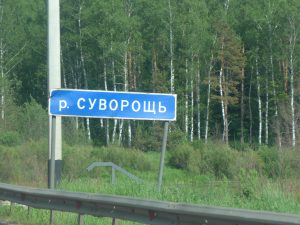 названия Шумарь и Шумер – ближневосточная колыбель человечества, погубленный как раз ветром (по-видимому, радиоактивным). Если прочитать слово «инга» по ближневосточному, т.е. справа налево, то получается санскритское слово «агни», означающее «огонь». Индийский бог Агни – главный из земных богов, посредник между ними и людьми. Вайшванара или «всенародный» — эпитет Агни. По числу упоминаний в «Ригведе», он уступает только главному божеству ведийского пантеона Индре.
названия Шумарь и Шумер – ближневосточная колыбель человечества, погубленный как раз ветром (по-видимому, радиоактивным). Если прочитать слово «инга» по ближневосточному, т.е. справа налево, то получается санскритское слово «агни», означающее «огонь». Индийский бог Агни – главный из земных богов, посредник между ними и людьми. Вайшванара или «всенародный» — эпитет Агни. По числу упоминаний в «Ригведе», он уступает только главному божеству ведийского пантеона Индре.
Индус — имена 5 служебных собак легендарного советского пограничника, Героя Советского Союза Никиты Карацупы (родом из Запорожья). Он знаменит своими рейдами против нарушителей границы, во время которых он использовал хорошо обученных собак. За 20 лет службы в пограничных войсках задержал 338 нарушителей границы и уничтожил 129 шпионов и диверсантов, не сложивших оружие. В советское время именем Никиты Карацупы называли пограничные заставы во Вьетнаме и в Индии. Похоронен на Троекуровском кладбище в Москве. Бюсты Карацупы установлен в городе Собинке Владимирской области и в Тюмени в сквере Пограничников. В Собинском районе расположены Карачарово, Алепино, Ундол (имение А.В. Суворова), а также Брянцево.
III. Муром
В 35 км. на юго-запад от деревни Вамна расположен старинный русский город Муром, если двигаться далее в этом же направлении, то через 90 км. будет место, где в Оку впадает вышеуказанная река Мокша. В 35 км. на юго-восток от деревни Вамна находится деревня Вача. На Санскрите, мурна означает «связанный», марман — «ядро всего», «скрытый смысл», маура — «павлин» (символ царской власти). На Санскрите, павлин также звучит как «барин». В Русском языке, слово «барин» имеет похожий (царский) смысл и означает человека из высших сословий, господина. В Муроме есть кафе «Барин», рядом с памятником Владимиру Зворынику — изобретателю и создателю современного телевидения. Во Владимире есть ресторан «Барин», рядом с площадью Фрунзе. В городе Гусь-Хрустальный, в сосновом лесу, находится гостиница «Баринова Роща», рядом с ней — «Опытный стекольный завод», продукцией которого пользуются ежедневно миллионы людей по всему миру. Легендарный граненый стакан стал символом эпохи.
Микрорайоном Мурома ныне является бывшее село Карачарово, в котором по легенде родился русский былинный богатырь и заступник земли русской Илья Муромец. Другое село Карачарово стало в 1960 году историческим районом Москвы. В Кировской области есть деревня Карачи. Аналогичное название имеет пакистанский город Карачи, административный центр провинции Синд, где начиналась ведийская цивилизация, из которой выросла нынешняя Индия.
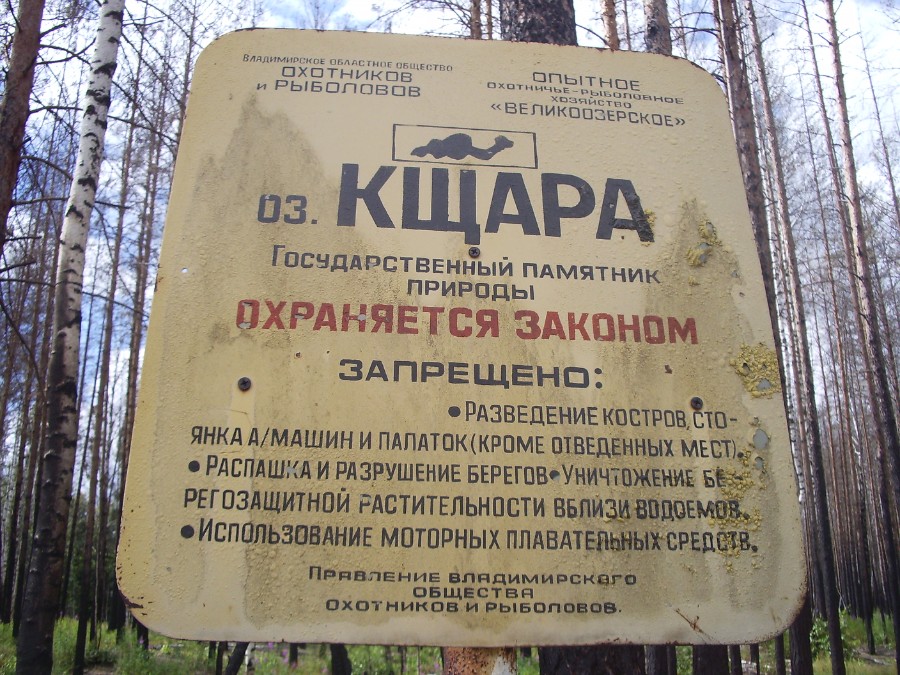 В 25 км. на северо-запад от поворота с М-7 на Лукново находится озеро Кщара или Ксара. На Санскрите, это означает «текущая вода». Озеро карстового происхождения, глубина его достигает 65 метров. Это самый глубокий водоем Владимирской области. Находится в заповедной зоне на востоке области, где существует целая система карстовых озёр (более 200), многие из которых овеяны загадками и славятся паранормальными явлениями, происходящими с незваными гостями.
В 25 км. на северо-запад от поворота с М-7 на Лукново находится озеро Кщара или Ксара. На Санскрите, это означает «текущая вода». Озеро карстового происхождения, глубина его достигает 65 метров. Это самый глубокий водоем Владимирской области. Находится в заповедной зоне на востоке области, где существует целая система карстовых озёр (более 200), многие из которых овеяны загадками и славятся паранормальными явлениями, происходящими с незваными гостями.
В 7км. на юго-восток от озера Кщара (Ксара) расположено озеро Санхар (Санхра). На Санскрите, самхара означает «сближение», «умение»; самхрта — «собранные вместе», «коллективное» и т.д.
Из озера Кщара вытекает река Кшарский исток (устар. Кщарица), несущая свои воды в Клязьму (через реку Исток), мимо озера Юхор, расположенного в 3,5 км. к югу от озера Кщара. Мшара — название небольшого болота в Смоленской области, в Оковском лесу на южном склоне Валдая, ггде берёт начало Днепр (2201 км.) — четвёртая по длине рекой Европы после Волги, Дуная и Урала. В 40 км. на восток от озера Кщара находится деревня Санниково, а в 30 км. на северо-восток от него находится город Южа, на берегу озера Вазаль. На Санскрите, южи означает «желание», «обаятельный»; васула — «божество»; васа — «живой» и т.д.
В 9 км. на северо-восток от города Южа расположено озеро Ламское. В тибетском буддизме лама — это религиозный учитель. Самый известный из них — это Далай Лама. Река Лама течёт в Подмосковье. Озеро Лама — одно из крупнейших озеро плато Путорана (север Красноярского края), на котором находится географический центр России. Из этого озера Лама вытекает одноименная река, названная так советским полярным исследователем Николаем Урванцевым по имени озера, их которого она выходит.
В Калининградской области есть река Лама, впадающая в Балтийское море. В 155 км. на юго-восток от Тюмени находится исток своей реки Лама. В 106 км. на запад от этого истока находится устье реки Исеть, соединяющейся с рекой Тобол. Рядом с истоком реки Исеть недалеко от Екатеринбурга, находится Ганина Яма, связанная с судьбой Романовых. В 1918 году их привезли в Екатеринбург из Тобольска (Тюменская область). В Архангельской области есть река Лама, в Пинежском районе, известном своими монастырями: Иоанно-Богословский Сурский монастырь в селе Сура, на родине св. Иоанна Кронштадтского; Артемиево-Веркольский монастырь; Красногорский Богородицкий монастырь, с которым связана история Грузинской иконы Божией Матери. В Пинежском районе находятся крупнейшие пещеры всего Европейского Севера России. Здесь Голубинский карстовый массив — самый известный и посещаемый памятник природы Архангельской области. Административным центром района является село Карпогоры, названное по Карповой Горе. В Санкт-Петербурге, на Карповке, покоятся мощи Иоанна Кронштадтского, уроженца Пинежского района. Устье реки Лама находится в 40 км. на запад от села Карпогоры.
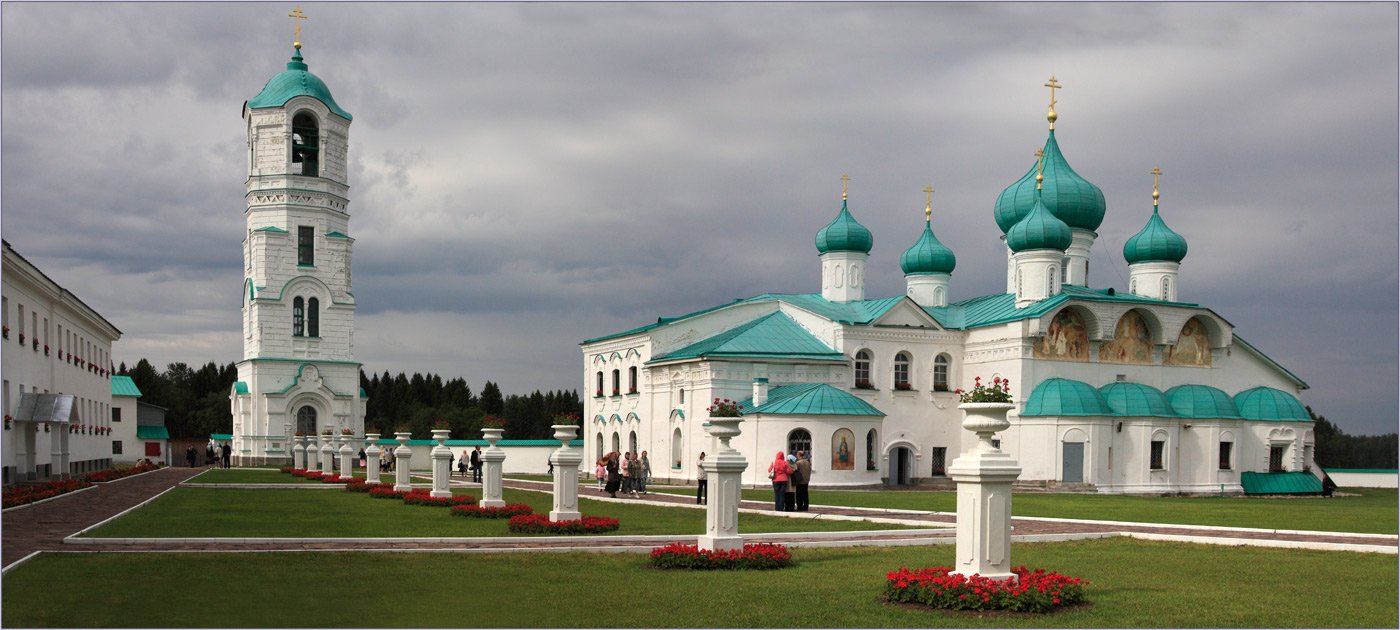
Александро-Свирский монастырь
В соседней с Ленинградской областью Карелии, река Ламай пересекает в 60 км. на юго-запад от Петрозаводска автомобильную дорогу, идущую из города Лодейное Поле, стоящим на реке Свирь, берущей начало в Онежском озере. В паре десятков километров от Лодейного Поля (Ленинградская область) расположен знаменитый Александро-Свирский монастырь. Александр Свирский — это единственный известный новозаветный святой, который удостоился явления Святой Троицы в виде Трех Ангелов. Отсюда его почитание как «новозаветного Авраама». В селе Лодейно (ныне Кировская область) родился маршал Конев.
Исток реки Ламарь находится в 23 км. на юг от Санаксарского монастыря, где покоятся мощи легендарного русского адмирала Ушакова, родом с верхней Волги (с. Бурнаково, сейчас Рыбинский район Ярославской области). На Санскрите, уша или уса означает «заря». Санаксарский монастырь практически на берегу реки Мокша (бассейн Волги). В Рыбинское водохранилище впадает река Ламь (Лама), как и Волга, берущая начало в Тверской области — родине Афанасия Никитина, который первым из европейцев достиг берегов Индии и задокументировал своё путешествие. В шумерской и последующей аккадской мифологиях, Лама — это дух-хранитель человека.
Во Владимирской области, в 20 км. на восток от озера Ламское расположено озеро Святое. Рядом с этим озером течёт река Лух (приток Клязьмы). В Московской области есть город Луховицы. В Ленинградской и Новгородской областях течёт река Луга. С её именем связаны названиям городо Луга и и Усть-Луга в Ленинградской области.
В Чехии есть река Луга — приток река Одра. Другими его притоками являются реки Варта, Ина, Бубр, Быстрица, Тыва. Нижневартовск до сих пор является одним из основных нефтяных кормильцев страны. Считается, что открытие одного из крупнейших в мире месторождения Самотлор в 1970-х отодвинуло необходимость структурных реформ экономики Советского Союза. Нижневартовск входит в Ханты-Мансийский автономный округ — Югра. Угра или югра – это эпитет Шивы, означающий «яростный» на Санскрите. В России есть несколько рек с санскритским названием Сива (Шива).
На реке Одра стоит город Щецин – родина российской императрицы Екатерины Великой (тогда прусской принцессы). Польский Щецин побратим с китайским городом Далянь, который упоминается в знаменитом вальсе «На сопках Маньчжурии». Под названием «Дальний» этот город был основан русскими в 1898 году на месте китайского рыбацкого посёлка на арендованной у Китая территории, в рамках Китайско-Восточной железной дороги. На строительство города Россия затратила 30 млн. золотых рублей. Построенный Россией современный океанский порт занял второе место по грузообороту (после Шанхая).
Щецин побратим с германскими городами Любек и Росток. Их сохранившиеся славянские названия — не случайность. В  прошлом это были земли славян. Фильм Михаила Задорнова «Рюрик. Потерянная быль» подробно освещает эту тему. Считается, что нынешний германский город Рерик (тоже в прошлом славянский) был родиной Рюрика, который в IX веке стал Новгородским князем и основателем царской династии. Примечательно, что на памятнике «Тысячелетие России» в Великом Новгороде, за спиной Рюрика стоит направляющий / благословляющий Велес, ассоциируемый на Руси с Плеядами, которые оказали огромное влияние на развитие человеческой цивилизации.
прошлом это были земли славян. Фильм Михаила Задорнова «Рюрик. Потерянная быль» подробно освещает эту тему. Считается, что нынешний германский город Рерик (тоже в прошлом славянский) был родиной Рюрика, который в IX веке стал Новгородским князем и основателем царской династии. Примечательно, что на памятнике «Тысячелетие России» в Великом Новгороде, за спиной Рюрика стоит направляющий / благословляющий Велес, ассоциируемый на Руси с Плеядами, которые оказали огромное влияние на развитие человеческой цивилизации.
Луга — город в Италии. Город с таким же названием есть в Народной Республике Бангладеш, столица — город Дакка. По всему периметру Бангладеш граничит с Индией и очень сильно связан с ней в историческом, культурном и других планах. На Восточной Украине есть город Луганск, а в Швейцарии — Лугано (третий по значимости банковский центр страны, крупнейший город италоязычного кантона Тичино).
Стоит отметить, что в окончании названия города Муром — священный звук Творения — Ом.
IV. Киржач
 С 1781 года город Киржач имеет на своём гербе сову — традиционный символ мудрости. Коба (англ. Сова) — псевдоним Сталина и руины древнего города цивилизации майя в Мексике. Светлана Жарникова отмечала связь этого образа архаической индоевропейской традиции с матерью взрослых замужних дочерей, которую зовут Теща. Киржач стоит на одноименной реке, от которой выводят его название. В 7 км. севернее города, в реку Киржач впадает река Дева.
С 1781 года город Киржач имеет на своём гербе сову — традиционный символ мудрости. Коба (англ. Сова) — псевдоним Сталина и руины древнего города цивилизации майя в Мексике. Светлана Жарникова отмечала связь этого образа архаической индоевропейской традиции с матерью взрослых замужних дочерей, которую зовут Теща. Киржач стоит на одноименной реке, от которой выводят его название. В 7 км. севернее города, в реку Киржач впадает река Дева.
На санскрите, слово «дева» означает «божество», «божественный», «царь» и т.п. Также, см. речка Девка возле Владимира. В 1 км. от устья Девы, на другом берегу реки Киржач, расположено село Савино. На санскрите, слово «сава» означает «командир», «порядок» и т.д. В Савино (Тульской области похоронен) похоронен командир «Варяга» Руднев. Созвездие Дева играет важную роль в древней мистерии, ныне известной как Рождество Христово. Также, Дева – индийское имя. Например, индийский поэт и писатель Дева Рамачандра (1949 — 2013) или индийский актёр и режиссёр Дева Прабху, родившийся в 1973 году в Майсуре. Дева – город в Румынии, горы в Японии, река в Испании и т.д.
Река Дева начинается недалеко от Киржача, в деревне Кипрево. С этим названием ассоциируются Кипр, Кипрей (Иван-чай), кипа и др. В 3,5 км. на юго-восток от истока реки Дева, находится село Бабурино и озеро Бабуринское. Бабур – основатель династии Великих Моголов, правивших Индией три века (как Романовы в России). Бабр – сибирское имя тигра. Бабр изображён 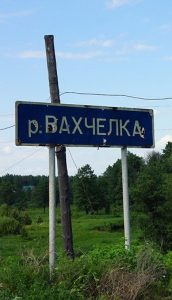 на гербе Иркутска, откуда начиналась Российско-Американская компания (РАК) и где похоронен ее основатель Григорий Шелехов. Южнее Бабуринского находятся села Власьево и Арефино. Власий – это второе имя Велеса, которого на Руси связывали с Плеядами. АР – это Солнце Внутреннего Мира, отсюда название «Арий». Арефино расположено на реке Вахчелка, которая в городской черте Киржача соединяется с рекой Киржач, давшей название городу. В 17 км. к северо-востоку от Киржача расположен в лесистой местности исток реки Вахчелка. На Санскрите, вах – это «несущий», «текущий» и т.п.; чела — «ученик». Блаватская указывала, что чела — это тот, кто предложил себя (духовному учителю) в качестве ученика, чтобы на практике изучить «тайные мистерии природы и психические силы, дремлющие в человеке» (Е.П. Блаватская «Ключ к теософии»).
на гербе Иркутска, откуда начиналась Российско-Американская компания (РАК) и где похоронен ее основатель Григорий Шелехов. Южнее Бабуринского находятся села Власьево и Арефино. Власий – это второе имя Велеса, которого на Руси связывали с Плеядами. АР – это Солнце Внутреннего Мира, отсюда название «Арий». Арефино расположено на реке Вахчелка, которая в городской черте Киржача соединяется с рекой Киржач, давшей название городу. В 17 км. к северо-востоку от Киржача расположен в лесистой местности исток реки Вахчелка. На Санскрите, вах – это «несущий», «текущий» и т.п.; чела — «ученик». Блаватская указывала, что чела — это тот, кто предложил себя (духовному учителю) в качестве ученика, чтобы на практике изучить «тайные мистерии природы и психические силы, дремлющие в человеке» (Е.П. Блаватская «Ключ к теософии»).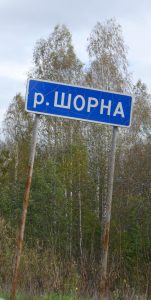
В 10 км. на юго-восток от истока Девы находится исток речки Синовка — приток реки Шорна. Другим притоком Шорны является Пиндер. Также, Пиндер — населённый пункт в графстве Йорк, в канадской провинции Нью-Брансуик.
Исток речки Пиндер расположен в 4,5 км. на северо-запад от Кипрево. Этот исток находится за деревней Никитино, к которой идёи единственная дорога (~2 км.) из села Афанасово. Афанасий Никитин – первый европеец, достигший берегов Индии и записавший свое путешествие («Хождение за три моря»). Озеро Пиндово расположено в 22 км. на северо-восток от Гатихи. Гора Пинда расположена на территории Ванинского муниципального района Хабаровского края. Она названа по имени речки Пинда, берущей начало на этой горе. В своей книге «Голубая кровь, правильная кровь» Стюарт Свердлов говорит, что глава иллюминатов Земли называется «Пиндар».
На санскрите Пиндара означает «религиозный нищий», а Пиндарака — «мост». Термин «мост» связан не только с конструкцией над препятствием, но и соединением миров и разных измерений. С капитанского мостика управляется судно. Радуга – залог мира между Богом и человечеством в Ветхом Завете, тоже напоминает мост. Пиндара, также известная как Пиндарака, представляет собой деревню недалеко от святой Дварки, на берегу залива Катча, в Гуджарате (Индия). Индийская Дварка имеет определенные смысловые параллели с русской Тверью. На Санскрите, слово «двар» означает «дверь». Не случайна фраза, что Тверь — в Москву дверь.
Махабхарата упоминает вышеуказанную Пиндараку как место паломничества. Говорят, что гора с мистическими силами расположена в Саураштре около храма Пиндарака. Саураштра — полуостровной район Гуджарата, расположенный на побережье Аравийского моря. Он охватывает около трети штата Гуджарат, в частности 11 районов Гуджарата. Саурово — деревня в Подмосковье, возле Павловского Посада, на Клязьме.
В 8,5 км. на северо-запад от Киржача находится Карпово. В 13 км. на северо-восток от Киржача находится деревня Фомино. В 70 км. на юго-восток от Киржача находятся Курилово, Бакино, Карачарово, а чуть дальше — Парфентьево. В 80 км. на северо-восток от Киржача – исток реки Яхрома. В 56 км. на восток от Киржача находится Черкутино. В 18 км. на восток от Черкутино – исток реки Уразы, а в 12 км. на юго-восток – исток реки Тимериха. В 22 км. на юго-восток – село Бабаево. В Индии, баба (ударение на второй слог) зовут отца или деда, уважаемых людей в силу их статуса или возраста, это могут быть мастера йоги, суфии, мудрецы.
В 15 км. юго-восточнее Киржача в 1968 году, в авиационной катастрофе во время тренировочного полета, погиб Юрий Гагарин, вместе с опытным пилотом Владимиром Серёгиным. На месте гибели первого космонавта планеты был открыт мемориал в 1975 году. Памятник представляет собой стелу высотой 16 метров, выполненную из красного гранита в форме крыла самолета. На лицевой стороне стелы высечены портреты Гагарина и Серёгина, скорее напоминающие нимбы, чем скафандры.
V. Сима
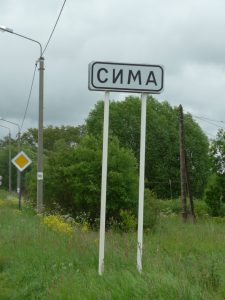 Село Сима расположено в Юрьев-Польском районе Владимирской области, в 40 км. на восток от Переславля-Залесского. На санскрите, слово «сима» означает «граница», «фронт». В этом селе в 1812 году ушёл в другую жизнь бесстрашный русский полководец Пётр Иванович Багратион (1765-1812) — герой Отечественной войны 1812 года. Тяжелораненого его привезли с Бородино в Москву, а оттуда перевезли в имение Сима, к его тетушке Анне
Село Сима расположено в Юрьев-Польском районе Владимирской области, в 40 км. на восток от Переславля-Залесского. На санскрите, слово «сима» означает «граница», «фронт». В этом селе в 1812 году ушёл в другую жизнь бесстрашный русский полководец Пётр Иванович Багратион (1765-1812) — герой Отечественной войны 1812 года. Тяжелораненого его привезли с Бородино в Москву, а оттуда перевезли в имение Сима, к его тетушке Анне 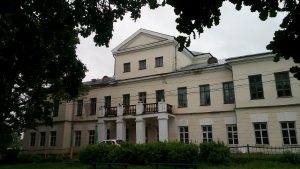 Голицыной.
Голицыной.
Багратион был похоронен в селе Сима, в церкви Дмитрия Солунского. При императоре Николае I, в 1839 году прах полководца был торжественно перенесён на Бородино, по инициативе поэта-партизана Дениса Давыдова. В 20 км. на восток от Бородино расположена самая высокая точка Московской области (Замри-гора).
На месте первого захоронения Багратиона, у церкви Дмитрия 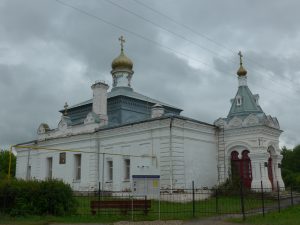 Солунского, находится бюст полководца. Символично, что именно в селе Сима, гостя у Голицыных, Багратион встретил свое назначение на пост главнокомандующего Второй Западной
Солунского, находится бюст полководца. Символично, что именно в селе Сима, гостя у Голицыных, Багратион встретил свое назначение на пост главнокомандующего Второй Западной
армией в марте 1812 года. Получив высочайшее повеление, отсюда он направился в оную, и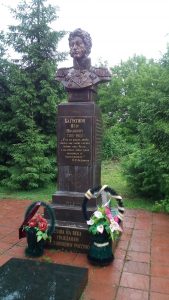 здесь же скончался от ран, полученных в Бородинском сражении в сентябре 1812 года, в усадьбе Голицыных.
здесь же скончался от ран, полученных в Бородинском сражении в сентябре 1812 года, в усадьбе Голицыных.
Есть версия, что дед Ленина (Александр Бланк) был незаконнорожденным сыном князя Голицына, родственником которых и был Багратион. Голицыны считаются самым многочисленным и «ветвистым» княжеским родом России.
Символично, что по дороге из села Сима в Переславль-Залесский расположены Горки (Переславские). Здесь, в имении Ганшиных, Ленин гостил у своего друга ещё задолго до 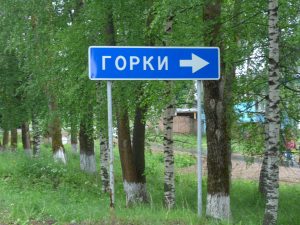 революции. Считается, что здесь Владимиру Ульянову нашли паспорт местного крестьянина Николая Ленина, по которому он смог выехать в Швейцарию из Шушенского, стоящим на реке реке Шушь (см. ниже р. Шоса). Закончил свой земной путь Владимир Ульянов-Ленин в подмосковных Горках.
революции. Считается, что здесь Владимиру Ульянову нашли паспорт местного крестьянина Николая Ленина, по которому он смог выехать в Швейцарию из Шушенского, стоящим на реке реке Шушь (см. ниже р. Шоса). Закончил свой земной путь Владимир Ульянов-Ленин в подмосковных Горках.
Между вышеупомянутыми Переславскими Горками и самим Переславлем есть деревня Нила, 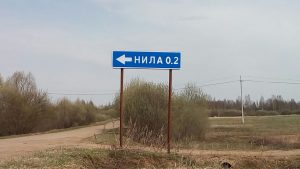 на реке Нилка. Египетский Нил может оказаться лишь их братом, если принять во внимание информацию о Евразийской Гиперборее, которую построили потомки атлантов, пришедшие с территории Египта. Однако, самым древним считается Лемурийский Египет, который располагался на территории нынешней Кемеровской области.
на реке Нилка. Египетский Нил может оказаться лишь их братом, если принять во внимание информацию о Евразийской Гиперборее, которую построили потомки атлантов, пришедшие с территории Египта. Однако, самым древним считается Лемурийский Египет, который располагался на территории нынешней Кемеровской области.
Село Сима стоит на реке Симка. Реки Симка есть в Архангельской области и на Урале. На реке Сим, в Челябинской области, расположен Симский завод (ныне 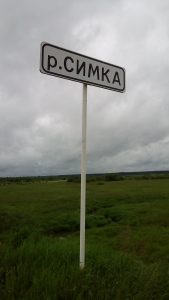 город Сим) — родина выдающегося русского учёного Игоря Курчатова. Также, симка — обиходное название SIM-карты, без которых немыслим современный мир. При замене первой буквы в названии ‘Сима’, получается ‘зима’. Её главные праздники — Рождество и Новый Год, столицей которого является Великий Устюг. Свой титул Великого города он получил от Ивана Грозного.
город Сим) — родина выдающегося русского учёного Игоря Курчатова. Также, симка — обиходное название SIM-карты, без которых немыслим современный мир. При замене первой буквы в названии ‘Сима’, получается ‘зима’. Её главные праздники — Рождество и Новый Год, столицей которого является Великий Устюг. Свой титул Великого города он получил от Ивана Грозного.
Село Сима было царским с XVI века, оно принадлежало Ивану Грозному и упомянуто в его духовной грамоте. В селе откармливали быков для стола Петра I, основавшего Санкт-Петербург на Нильском меридиане и разбившего непобедимую шведскую армию под Полтавой. Петр I подарил село Сима князю Голицыну за победу над шведами под деревней Лесной.
Символично, что именно в книге «Лесная» величайшего индийского эпоса «Махабхарата» дано описание священных рек Курукшетры, которые до сих пор сохранились в Центральной России. Об этом много написала Светлана Жарникова.
В 7 км. на восток от села Сима течёт речка Шоса. На санскрите, соса означает «смешанный с солью», а зоса — «влагопоглотитель», «жизненная энергия» и т.д. ШОС – сокращенное название Шанхайской организации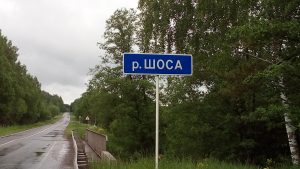 сотрудничества, основанной в 2001 году лидерами Китая, России и стран Средней Азии. Сегодня, общая территория входящих в ШОС стран составляет 60% территории Евразии, а общая численность населения стран ШОС равна половина населения планеты.
сотрудничества, основанной в 2001 году лидерами Китая, России и стран Средней Азии. Сегодня, общая территория входящих в ШОС стран составляет 60% территории Евразии, а общая численность населения стран ШОС равна половина населения планеты.
В 8 км. от Шосы несёт свои воды река с царским названием Шаха, у села Елизарово. На санскрите, слово «саха» означет «сильный». В Елизарово находится церковь Никиты Мученика — старейшая постройка Переславского района Ярославской области (за пределами 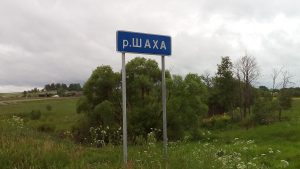 Переславля-Залесского). Шатровая церковь была в середине XVI века и напоминает храм Покрова на Рву (Василия Блаженного) на Красной площади в Москве. Оба храма имеют
Переславля-Залесского). Шатровая церковь была в середине XVI века и напоминает храм Покрова на Рву (Василия Блаженного) на Красной площади в Москве. Оба храма имеют 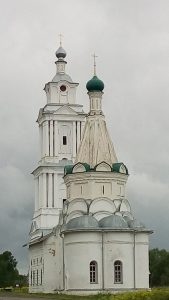 отношение к взятию Казани войсками Ивана Грозного.
отношение к взятию Казани войсками Ивана Грозного.
Елизарово было родовой вотчиной Алексея Басманова-Плещеева (1514 — 1570) – воеводы Ивана Грозного, одного из предводителей Опричнины, происходившего из старомосковского рода Плещеевых. Примечательно, что Елизарово с её Никитской церковью расположено в 27 км. на восток от Никитского монастыря и Плещеева озера, название которого до сих пор толком не объяснено. В то время, когда Алексей Басманов строил свою вотчинную Никитскую церковь в Елизарово, Иван Грозный перестраивал в камне Никитский монастырь у Плещеева озера (Синего Камня), который он 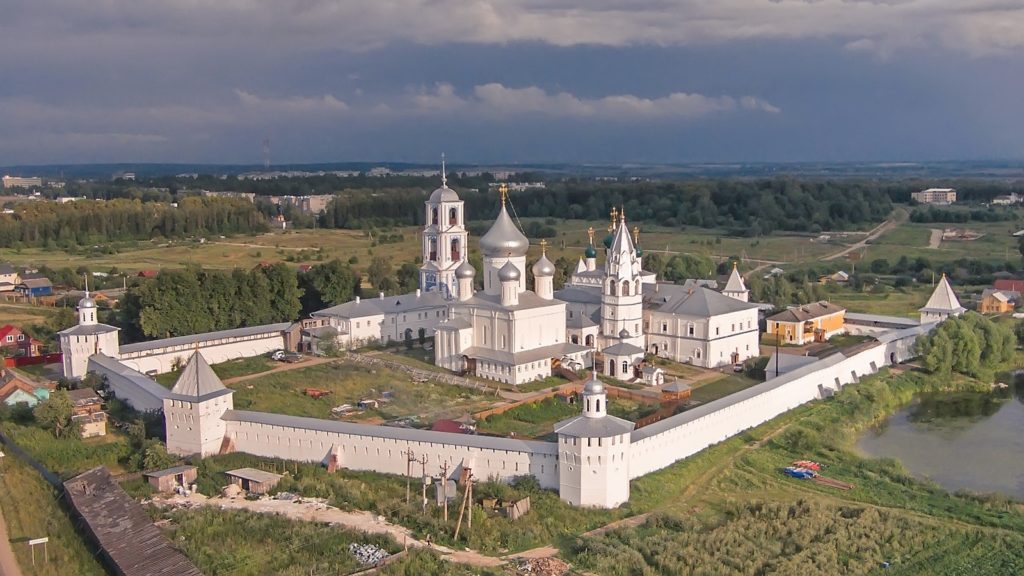 очень любил и покровительствовал. Царь построил в камне главный храм Никитского монастыря — собор Никиты Великомученика с приделом преподобного Никиты Переславского (Никиты Столпника, подвизавшегося в монастыре в XII веке).
очень любил и покровительствовал. Царь построил в камне главный храм Никитского монастыря — собор Никиты Великомученика с приделом преподобного Никиты Переславского (Никиты Столпника, подвизавшегося в монастыре в XII веке).
Это один из древнейших монастырей России, датой его основания считается 1010 год. В дореволюционной России, кроме Переславля-Залесского, было ещё несколько городов, имевших монастыри, посвящённые святому Никите Готскому, включая Москву, Каширу, Дмитров. В Москве, недалеко от Кремля, при Иване Грозном, своему небесному покровителю построил Никитский монастырь боярин Никита Романов — дед Михаила Романова, отец Московского Патриарха Филарета Романова. В этот московский монастырь Сербия присылала часть мощей святого Никиты в виде перста (указательного пальца святого).

Малое Вознесение
Нынешние Большая Никитская и Малая Никитская улицы в Москве берут свои названия от этого монастыря, который располагался на них до революции. Большая Никитская улица была частью дороги к Волоку Ламскому и Великому Новгороду. На этой же улице расположен храм «Малое Вознесение», с пределом Прокопия Праведного, Устюжского чудотворца – родоначальника Романовых.
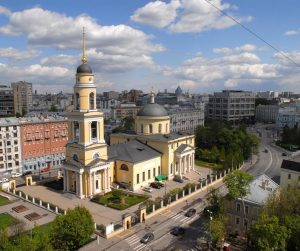
Большое Вознесение
В 1831 году в храме «Большое Вознесение», за Никитскими воротами, состоялось венчание Александра Пушкина с Натальей Гончаровой. Однако, есть версия, что венчание всё-таки было в храме «Малое Вознесение». Главный престол «Большого Вознесения» освящён в честь праздника Вознесения Господня; приделы в честь сретения Владимирской иконы Божией Матери, в честь праздника усекновение главы Иоанна Предтечи, в честь Николая Чудотворца, в честь иконы Божией Матери «Всех Скорбящих Радость», приставной — в честь Патриарха Всероссийского Тихона.
Сегодня в Москве остался только один храм, посвященный Никите Готскому. Он находится в Старой Басманной слободе. Его главный придел освящён в честь Владимирской иконы Божией Матери. В этом храме в 1830 году отпевали Василия Львовича Пушкина — дядю Александра Пушкина, тоже поэта. На отпевании присутствовал Александр Пушкин, которого крестили в Елоховском храме. Прах Василия Львовича Пушкина покоится на Донском кладбище.
Особо почитал Иван Грозный и его семья вышеуказанного Никиту Готского воина, который родился IV веке на восточной 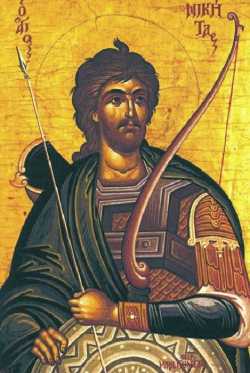 стороне реки Дунай, в пределах нынешней Румынии и Бессарабиии. Никита принял крещение от епископа Феофила, участника Первого Вселенского собора, созванного в 325 году в городе Никее византийским императором Константином. Основной задачей этого собора было разоблачение учения александрийского священника Ария. Александрия и Константинополь лежат на Нильском меридиане.
стороне реки Дунай, в пределах нынешней Румынии и Бессарабиии. Никита принял крещение от епископа Феофила, участника Первого Вселенского собора, созванного в 325 году в городе Никее византийским императором Константином. Основной задачей этого собора было разоблачение учения александрийского священника Ария. Александрия и Константинополь лежат на Нильском меридиане.
Никита принял мученическую смерть через сожжение в Бессарабии. Тогда это были пределы древней православной епархии Константинопольского Патриархата на Таманском полуострове с центром в городе Таматарха – Тмутаракани (совр. станица Тамань Краснодарского края). Название Тамани органично переплетается со словами «атаман» и «атман». На санскрите, термин атман означает «дух», «высшее Я» (человека и всех живых существ). Атман — это одно из центральных понятий индийской философии и индуизма. Атман – это вечный Абсолют, осознающий своё собственное существование. Как всеобщее духовное начало, Атман присутствует во всем.
 После смерти, мощи Никиты Готского были перенесены в Константинополь (стоящий на Нильском меридиане). После XIV века, нетленная десница святого была перевезена в главный сербский монастырь Высокие Дечаны, в самом центре Косово, в долине в долине реки Бистрица Дечанска. Бистрица – румынский город в Трансильвании, на реке Бистрица. Он упомянут в самом известном готическом романе Брэма Стокера «Дракула» (1897). Быстрица – река в Кировской области, приток Вятки (бассейн Волги).
После смерти, мощи Никиты Готского были перенесены в Константинополь (стоящий на Нильском меридиане). После XIV века, нетленная десница святого была перевезена в главный сербский монастырь Высокие Дечаны, в самом центре Косово, в долине в долине реки Бистрица Дечанска. Бистрица – румынский город в Трансильвании, на реке Бистрица. Он упомянут в самом известном готическом романе Брэма Стокера «Дракула» (1897). Быстрица – река в Кировской области, приток Вятки (бассейн Волги).
Монастырь Высокие Дечаны был основан в 1327 году сербским королем Стефаном Урошем III Дечанским. Десятилетним мальчиком он был отдан в заложники татарскому хану Ногаю. В архитектуре монастыря органически соединились Западная и Восточная христианская традиции. Его главный собор был украшен как скульптурами в романо-готическом стиле, так и фресками в византийской традиции. В 2004 году монастырь был внесен в перечень объектов Всемирного Наследия ЮНЕСКО.
Сегодня, главный собор монастыря Высокие Дечаны – это крупнейший средневековый храм на Балканах, с самым большим из сохранившихся собраний византийских фресок. Сегодня самые известные из них – это фрески, посвящённые теме  Распятия. На них обратили внимание в 60-х годах ХХ века, и они сразу стали сенсацией как в научных кругах, так среди сторонников Палеоконтакта (гипотезы древних космонавтов, посещавших Землю). На этих фресках изображены летательные аппараты с пилотами внутри. Если бы это были ангелы, то вокруг их голов должны быть нимбы — ореолы святости.
Распятия. На них обратили внимание в 60-х годах ХХ века, и они сразу стали сенсацией как в научных кругах, так среди сторонников Палеоконтакта (гипотезы древних космонавтов, посещавших Землю). На этих фресках изображены летательные аппараты с пилотами внутри. Если бы это были ангелы, то вокруг их голов должны быть нимбы — ореолы святости.
Незаурядные военные способности Алексея Басманова, проявленные во время Казанского похода позволили ему выдвинуться в первый ряд среди приближенных царя Ивана Грозного. Басманов возглавил штурм Арских ворот и оборону захваченной его отрядом Арской башни Казанского кремля. Во время генерального штурма Казани, Басманов руководил нападением на Царские ворота и обеспечил вход в город государева полка, что предрешило победный исход сражения за столицу ханства. Казанское взятие оказалось поворотным моментом не только в истории России, но и в его личной судьбе. Это важное событие российской истории связано и со становлением централизованного государства и царской власти самодержавного типа. Журнал «Мировой Ченнелинг» сообщает, что примерно 8 тыс. лет назад на территории нынешней Казани находилась Борея – столица Евразийской Гипербореи, созданной потомками выживших атлантов.
 Премьера «Лебединого озера» (самого популярного балета мира) состоялась в 1877 году на сцене Большого театра в Москве. Оно является одним из самых известных и популярных произведений Петра Ильича Чайковского – самого исполняемого в мире композитора. Его музыка близка и понятна людям разных стран, национальностей и вероисповеданий. В своё время он сказал: «Я хотел бы, чтобы музыка моя распространилась, чтобы с каждым днём увеличилось число людей, любящих её, находящих в ней утешение и подпору». Это ему удалось. Бессмертная музыка Чайковского продолжает звучать, занимая большое место в духовной жизни людей нашего времени.
Премьера «Лебединого озера» (самого популярного балета мира) состоялась в 1877 году на сцене Большого театра в Москве. Оно является одним из самых известных и популярных произведений Петра Ильича Чайковского – самого исполняемого в мире композитора. Его музыка близка и понятна людям разных стран, национальностей и вероисповеданий. В своё время он сказал: «Я хотел бы, чтобы музыка моя распространилась, чтобы с каждым днём увеличилось число людей, любящих её, находящих в ней утешение и подпору». Это ему удалось. Бессмертная музыка Чайковского продолжает звучать, занимая большое место в духовной жизни людей нашего времени.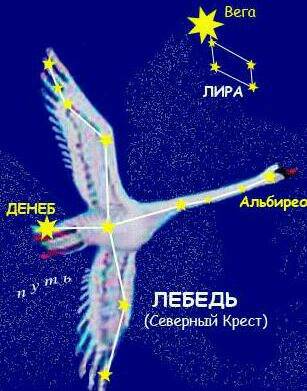 Музыка к балету «Лебединое озеро» связана с его духовной родиной — цивилизацией космических исследователей из созвездия Лебедь. Это одна из прекрасных, удивительных цивилизаций, изначально проявленной, как коллективное Существо Света в восьмом измерении созвездия Лебедя. Представители данной цивилизации – отважные космические путешественникиисследователи, собравшиеся из разных уголков этой и других Вселенных для создания новых миров, их одухотворения, освоения, вознесения. Её условно можно назвать цивилизацией Птиц (Людей-Птиц). Ей более 60 миллионов лет. Информацию о людях с головами птиц можно встретить во всех древних культурах. Люди и птицы – это два параллельных Жизнепотока, объединённых единым генетическим источником. У них есть некое изначальное родство на уровне многомерного генома.
Музыка к балету «Лебединое озеро» связана с его духовной родиной — цивилизацией космических исследователей из созвездия Лебедь. Это одна из прекрасных, удивительных цивилизаций, изначально проявленной, как коллективное Существо Света в восьмом измерении созвездия Лебедя. Представители данной цивилизации – отважные космические путешественникиисследователи, собравшиеся из разных уголков этой и других Вселенных для создания новых миров, их одухотворения, освоения, вознесения. Её условно можно назвать цивилизацией Птиц (Людей-Птиц). Ей более 60 миллионов лет. Информацию о людях с головами птиц можно встретить во всех древних культурах. Люди и птицы – это два параллельных Жизнепотока, объединённых единым генетическим источником. У них есть некое изначальное родство на уровне многомерного генома. В музыке к балету “Лебединое озеро” на уровне энергоинформации передаётся уникальный опыт, запечатлённый в многомерной генетике вышеуказанных людей-птиц из созвездия Лебедь, исследующих космические просторы, различные миры, сотворяющих и одухотворяющих миры на крыльях Любви. Суть этого опыта в том, что, раскрывая в себе внутренний источник Любви через музыку, романтические отношения, пробуждающие Сердце, каждый человек способен трансформировать зло и насилие, уйти от внешних чар дуальности и сотворить ту реальность, которая ему по Душе и созвучна гармонии БогаТворца. Ничто не исчезает бесследно, и то, что человек сотворил сегодня в Сердце и хранит там, как идеальный образ действительности, обязательно со временем реализуется в жизни на благо всего сущего. Любовь сильнее всего, в том числе, и прекращения жизни физического тела. Это как раз и есть основной мотив «Лебединого озера».
«Лебединое озеро» — главный балет Майи Плисецкой. Майя – название одной из звёзд Плеяд. Более 800 раз на протяжении 30 лет она его танцевала и объехала с ним весь мир. Она вложила весь свой талант и всю душу в роль Одетты. Вошла в историю именно своим необыкновенным исполнением «Лебединого озера». Эта сложная партия требовала не только технически совершенного исполнения, но и глубокой драматической выразительности.
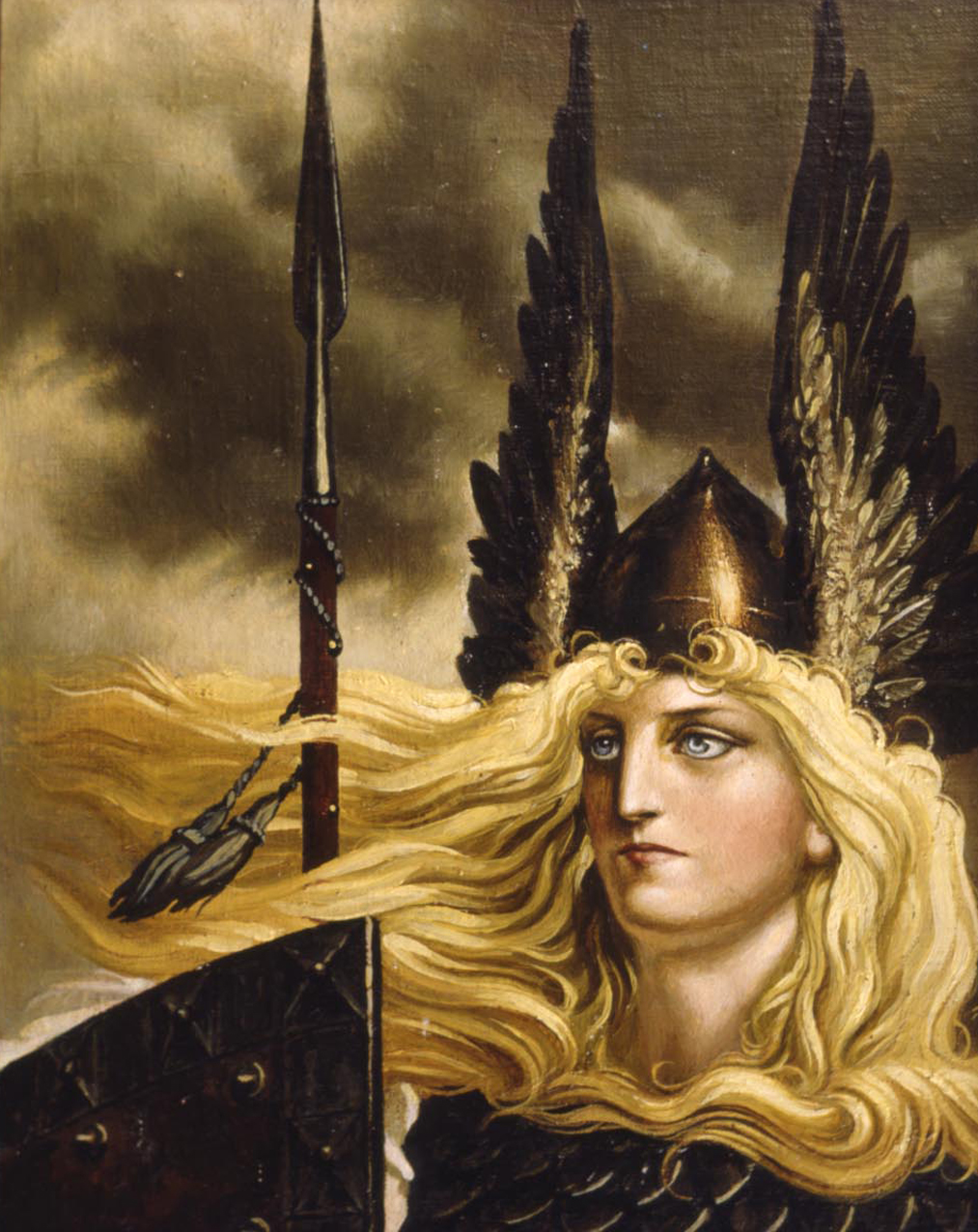 воинственные германские валькирии – дочери Одина, с лебедиными крыльями на шлемах, лебединый
воинственные германские валькирии – дочери Одина, с лебедиными крыльями на шлемах, лебединый 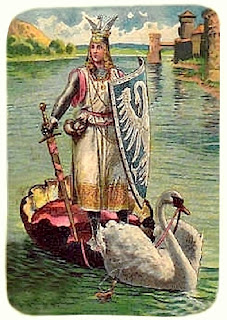 рыцарь Лоэнгрин — герой немецких произведений о короле Артуре, и т.д. Лоэнгрин — рыцарь Святой Чаши Грааля, посланный в лодке, которую тянут лебеди, чтобы спасти деву, которая никогда не должна спрашивать о его происхождении.
рыцарь Лоэнгрин — герой немецких произведений о короле Артуре, и т.д. Лоэнгрин — рыцарь Святой Чаши Грааля, посланный в лодке, которую тянут лебеди, чтобы спасти деву, которая никогда не должна спрашивать о его происхождении. писатель Александр Грин (1880 — 1932) — автор знаменитой феерии «Алые паруса» о непоколебимой вере и всепобеждающей, возвышенной мечте, о том, что каждый может сделать для близкого чудо. Прототип героини «Алых парусов» стала его вторая жена Нина. Ей он посвятил эту феерию. Они прожили вместе 11 лет и не расставались, оба считали свою встречу подарком судьбы.
писатель Александр Грин (1880 — 1932) — автор знаменитой феерии «Алые паруса» о непоколебимой вере и всепобеждающей, возвышенной мечте, о том, что каждый может сделать для близкого чудо. Прототип героини «Алых парусов» стала его вторая жена Нина. Ей он посвятил эту феерию. Они прожили вместе 11 лет и не расставались, оба считали свою встречу подарком судьбы. здешнего Камско-Воткинского горного завода, где занимался обустройством и реорганизацией железоделательного производства. С XVIII по XX века завод являлся одним из самых передовых, был крупнейшим российским производителем якорей,
здешнего Камско-Воткинского горного завода, где занимался обустройством и реорганизацией железоделательного производства. С XVIII по XX века завод являлся одним из самых передовых, был крупнейшим российским производителем якорей,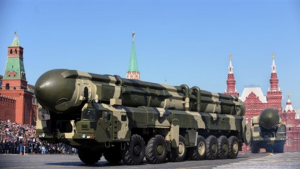 различного оружия. В середине ХХ века завод начал массовое производство баллистических ракет, которые являются ядром российских ядерных сил и основой ядерной триады России.
различного оружия. В середине ХХ века завод начал массовое производство баллистических ракет, которые являются ядром российских ядерных сил и основой ядерной триады России.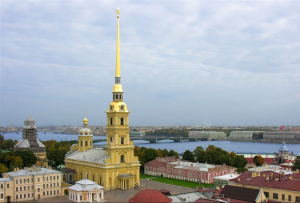 Санкт-Петербурге, стоящим на Нильском меридиане. Шпиль является наиболее заметной вертикалью и символом города, который в то время был столицей России. Эта 122-метровая колокольня по-прежнему самая высокая в Санкт-Петербурге. У этой колокольни самая большая коллекция колоколов в мире. Петропавловский собор – место захоронения русских императоров, начиная с Петра Великого, основателя Санкт-Петербурга. Именно в этом городе на Неве великий композитор (родившийся в Воткинске) скончался неожиданно и безвременно в 1893 году, заразившись холерой, выпив поданный в элитном ресторане стакан некипячёной холодной воды.
Санкт-Петербурге, стоящим на Нильском меридиане. Шпиль является наиболее заметной вертикалью и символом города, который в то время был столицей России. Эта 122-метровая колокольня по-прежнему самая высокая в Санкт-Петербурге. У этой колокольни самая большая коллекция колоколов в мире. Петропавловский собор – место захоронения русских императоров, начиная с Петра Великого, основателя Санкт-Петербурга. Именно в этом городе на Неве великий композитор (родившийся в Воткинске) скончался неожиданно и безвременно в 1893 году, заразившись холерой, выпив поданный в элитном ресторане стакан некипячёной холодной воды.
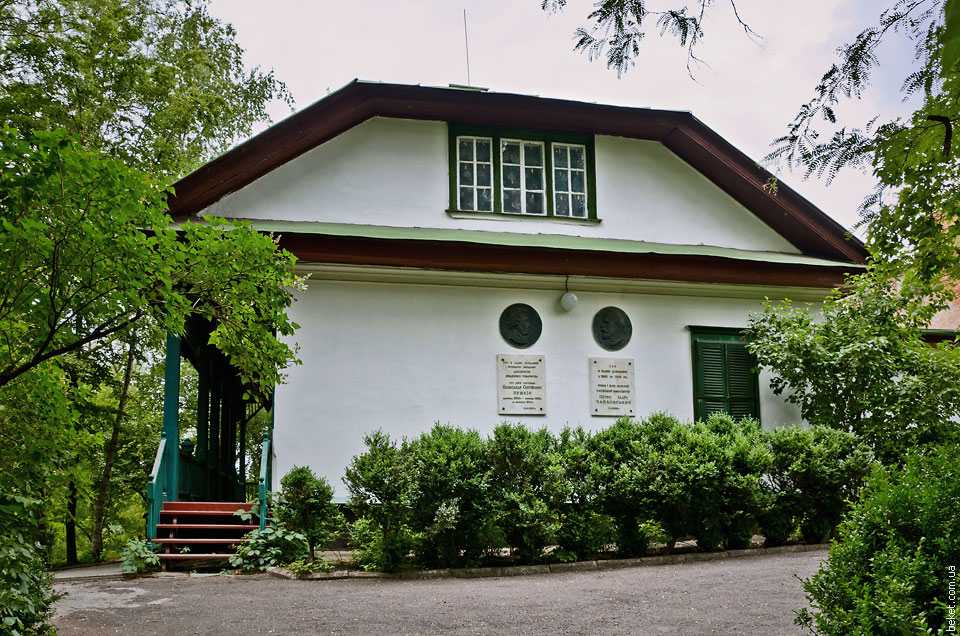

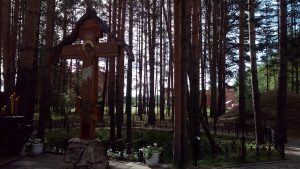
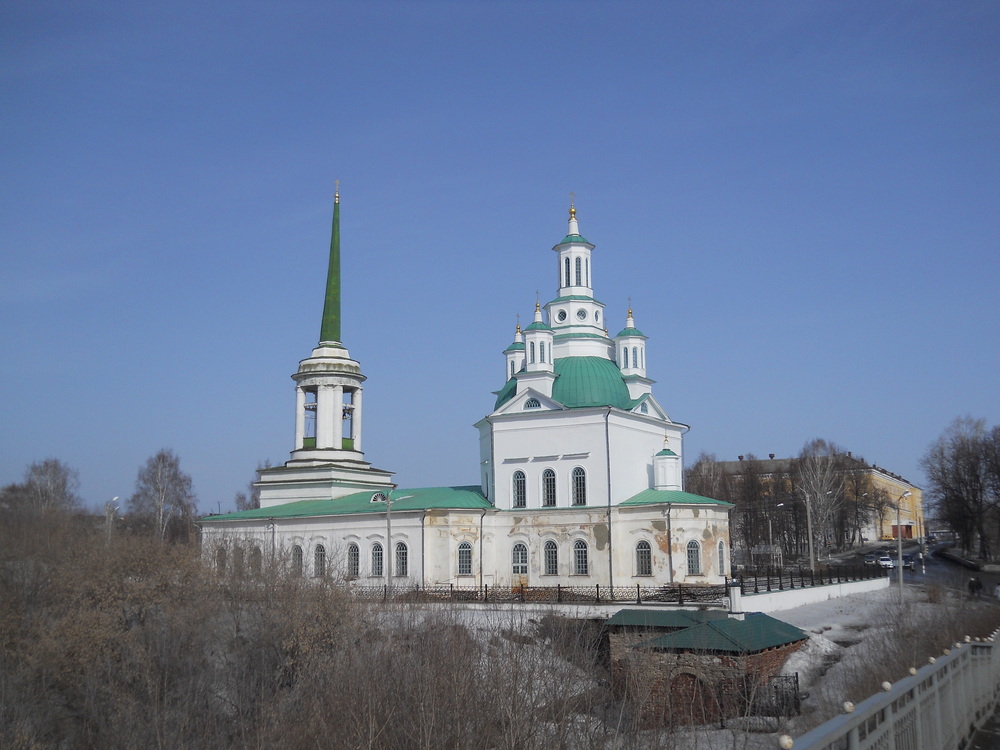
 расположен старейший мемориальный музыкальный музей в России, созданный почти сразу после смерти великого композитора.
расположен старейший мемориальный музыкальный музей в России, созданный почти сразу после смерти великого композитора. них были воспитаны несколько поколений советских детей. Журнал «Мировой Ченнелинг» даёт интересную информацию об этом человеке и откуда он черпал образы для своих произведений, см. здесь
них были воспитаны несколько поколений советских детей. Журнал «Мировой Ченнелинг» даёт интересную информацию об этом человеке и откуда он черпал образы для своих произведений, см. здесь
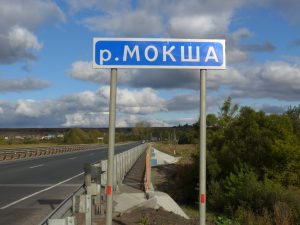 Мокша — это название реки в Центральной России. Её источник находится в 530 км. к юго-востоку от Москвы, недалеко от поселка городского типа Мокшан в Пензенской области. Мокшан стоит по обоим
Мокша — это название реки в Центральной России. Её источник находится в 530 км. к юго-востоку от Москвы, недалеко от поселка городского типа Мокшан в Пензенской области. Мокшан стоит по обоим 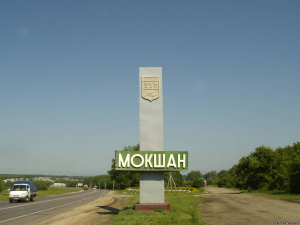 берегам Мокши. Длина этой реки ~
берегам Мокши. Длина этой реки ~ 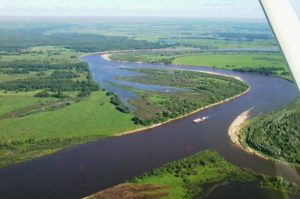 Мокша течёт на Запад и впадает в
Мокша течёт на Запад и впадает в 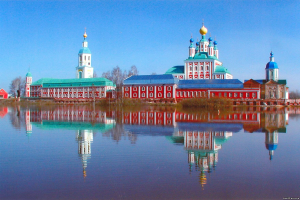 слову Сансара / Самсара («блуждание, странствование»), означающему круговорот рождения и смерти (реинкарнации) в мирах, ограниченных кармой. Это одно из основных понятий в индийской философии. Сансара рассматривается как результат невежества в понимании своего истинного «Я», невежества, под влиянием которого человек принимает временный и иллюзорный мир за реальность вообще. Душа, тонущая в «океане сансары», стремится к освобождению (мокше). Освобождение от Сансары называется Мокшей, как река, где расположен Санаксарский монастырь (или наоборот).
слову Сансара / Самсара («блуждание, странствование»), означающему круговорот рождения и смерти (реинкарнации) в мирах, ограниченных кармой. Это одно из основных понятий в индийской философии. Сансара рассматривается как результат невежества в понимании своего истинного «Я», невежества, под влиянием которого человек принимает временный и иллюзорный мир за реальность вообще. Душа, тонущая в «океане сансары», стремится к освобождению (мокше). Освобождение от Сансары называется Мокшей, как река, где расположен Санаксарский монастырь (или наоборот).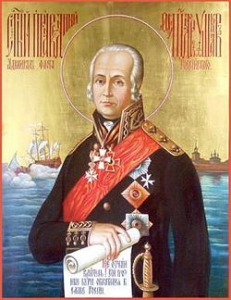 В России говорили, что «где Ушаков, там и победа», но сначала он победил себя, свои человеческие слабости, стал добрым и честным, храбрым и скромным, милосердным к своим врагам и т.д. Он полностью отказался от своих личных интересов, посвятив свою жизнь России. Адмирал Ушаков был канонизирован Русской Православной Церковью в 2001 году. Его память — 5 августа (прославление). Это тот день, когда были закончены два знаковых сражения в истории человечества – Курская битва и битва на поле
В России говорили, что «где Ушаков, там и победа», но сначала он победил себя, свои человеческие слабости, стал добрым и честным, храбрым и скромным, милосердным к своим врагам и т.д. Он полностью отказался от своих личных интересов, посвятив свою жизнь России. Адмирал Ушаков был канонизирован Русской Православной Церковью в 2001 году. Его память — 5 августа (прославление). Это тот день, когда были закончены два знаковых сражения в истории человечества – Курская битва и битва на поле 
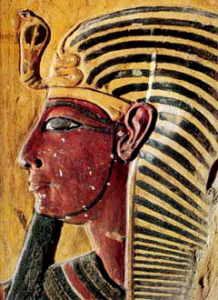 Урий – это древнеегипетский символ власти фараона, силы жизни и смерти, способности уничтожать врагов бога Ра. Ра — древнее название вышеупомянутой реки Волга. Урий был священным змеем (коброй), которого фараон носил на лобовой части своей короны или диадемы. В индийской мифологии Вишну опирается на тысячеглавого змея
Урий – это древнеегипетский символ власти фараона, силы жизни и смерти, способности уничтожать врагов бога Ра. Ра — древнее название вышеупомянутой реки Волга. Урий был священным змеем (коброй), которого фараон носил на лобовой части своей короны или диадемы. В индийской мифологии Вишну опирается на тысячеглавого змея 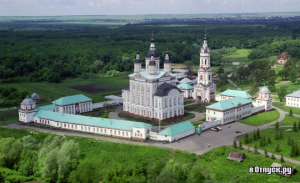 Сканов монастырь расположен в нескольких километрах от вышеупомянутой реки Мокша. Он был основан в XVII веке. После 1917 года монастырь был закрыт. В 1985 году здания Скановского монастыря были возвращены Русской Православной Церкви. Первая обновленная служба состоялась в 1990 году 12 апреля, в День космонавтики. Именно в этот день в 1961 году,
Сканов монастырь расположен в нескольких километрах от вышеупомянутой реки Мокша. Он был основан в XVII веке. После 1917 года монастырь был закрыт. В 1985 году здания Скановского монастыря были возвращены Русской Православной Церкви. Первая обновленная служба состоялась в 1990 году 12 апреля, в День космонавтики. Именно в этот день в 1961 году, 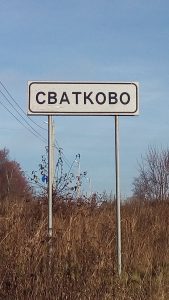 На Старой Ярославской дороге, за Сергиевым Посадом, через который она идёт, расположено село Сватково. На санскрите, слова «свата» и «сватва» означают звание, титул, право собственности; «свати» – Арктур (самая яркая звезда в Северном полушарии и четвёртая по яркости звезда ночного неба после
На Старой Ярославской дороге, за Сергиевым Посадом, через который она идёт, расположено село Сватково. На санскрите, слова «свата» и «сватва» означают звание, титул, право собственности; «свати» – Арктур (самая яркая звезда в Северном полушарии и четвёртая по яркости звезда ночного неба после 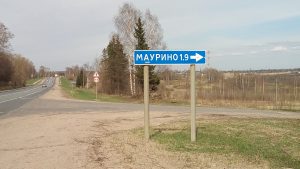 Одним из любимейших монастырей Ивана Грозного был
Одним из любимейших монастырей Ивана Грозного был 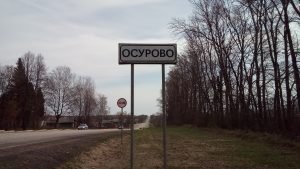 В 14 км. от Троицкой церкви (могилы Миши-Самуила) расположено село Осурово. На санскрите, асура означает «духовный», «божественный», «солнце», «добрый дух» и т.д. В ведийский период истории Индии (II тысячелетие до нашей эры) и Ведийской цивилизации, основанной там
В 14 км. от Троицкой церкви (могилы Миши-Самуила) расположено село Осурово. На санскрите, асура означает «духовный», «божественный», «солнце», «добрый дух» и т.д. В ведийский период истории Индии (II тысячелетие до нашей эры) и Ведийской цивилизации, основанной там 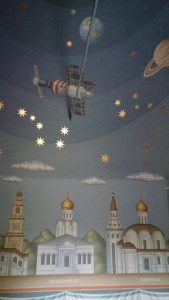
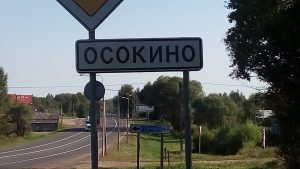 сожаления» или «без печали». От него происходит имя первого индийского императора, одного из величайших правителей за всю историю человечества, духовного воина, которого звали
сожаления» или «без печали». От него происходит имя первого индийского императора, одного из величайших правителей за всю историю человечества, духовного воина, которого звали  Москвы, правда сейчас заключенная в коллектор. На санскрите, «сара» также означает «ручей», «энергия», «главный пункт».
Москвы, правда сейчас заключенная в коллектор. На санскрите, «сара» также означает «ручей», «энергия», «главный пункт».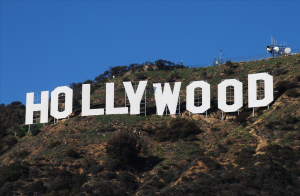 основателями Голливуда в
основателями Голливуда в 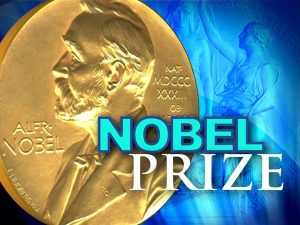 нефтяной промышленности. Они занимались
нефтяной промышленности. Они занимались 
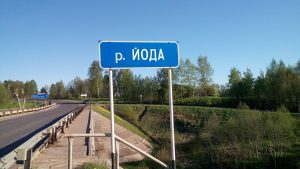
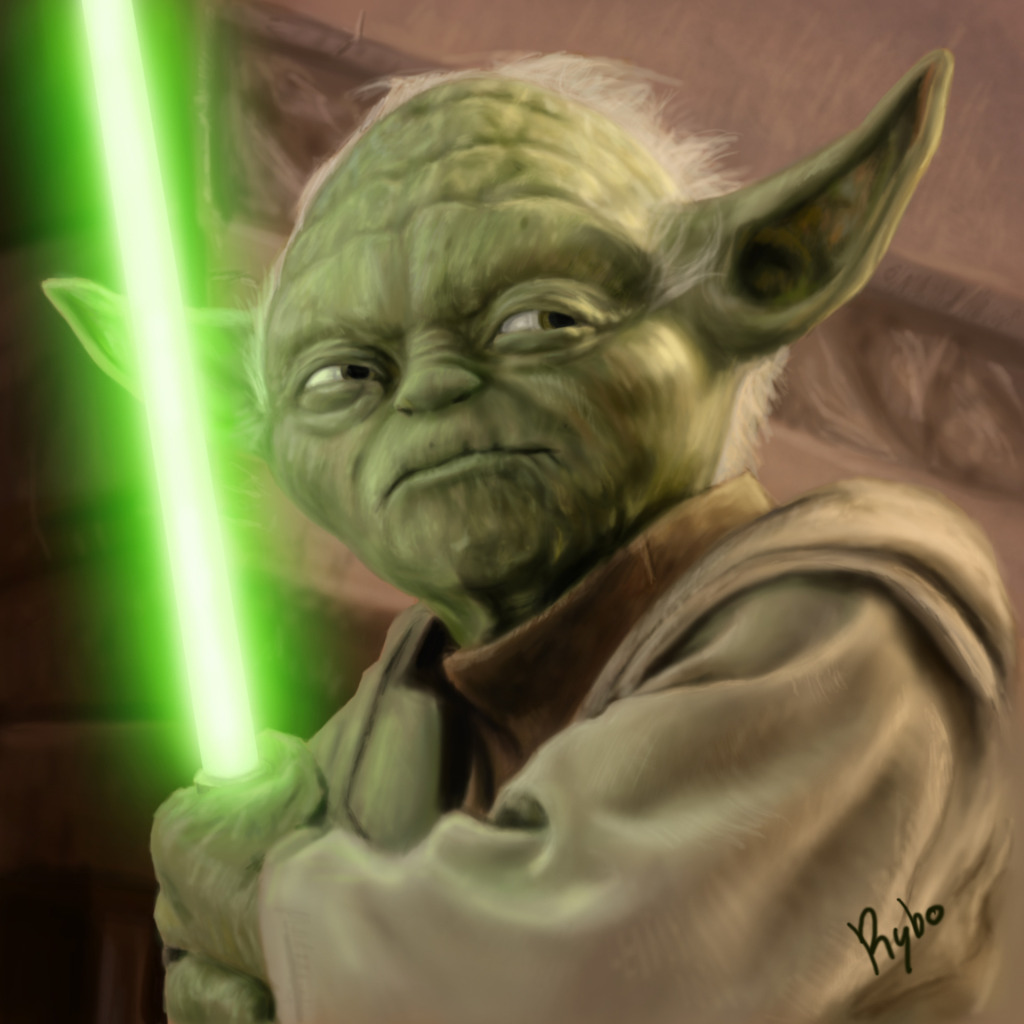
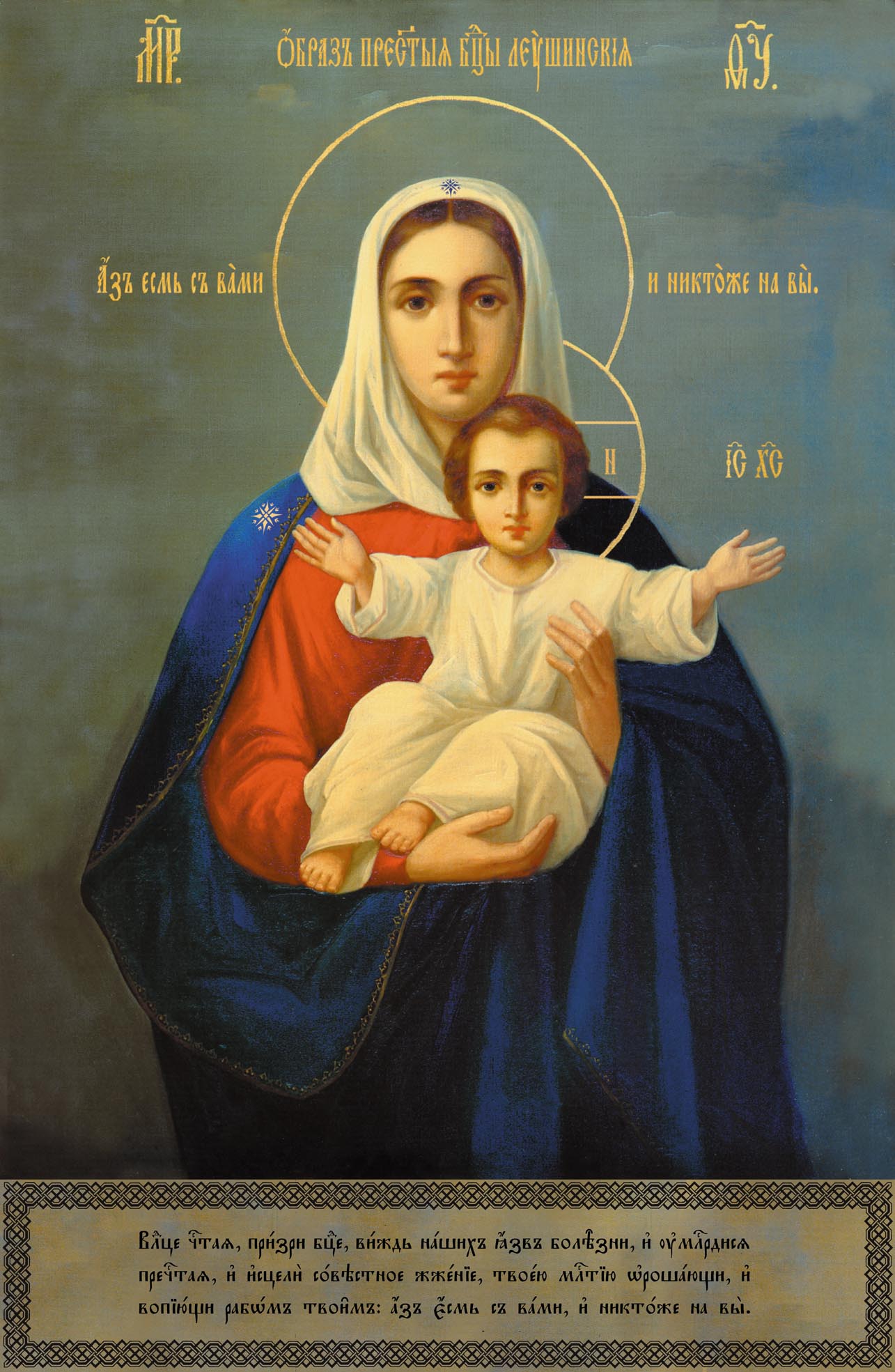 Интересно, что существительное коэн используется в Торе, чтобы ссылаться на священников, будь то евреев или язычников, таких как коэны (священники) Ваала или Дагона. Считается, что слово «коэн» происходит от семитского корня.
Интересно, что существительное коэн используется в Торе, чтобы ссылаться на священников, будь то евреев или язычников, таких как коэны (священники) Ваала или Дагона. Считается, что слово «коэн» происходит от семитского корня.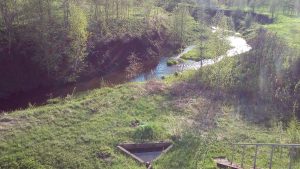 Рядом с устьем реки Йода находится искусственно созданный резервуар треугольной формы. Интересная история о тайном обществе «Отцы Треугольника» — секретной организации, оказывающей влияние на мировые события, дана в книгах Максимиллиана де
Рядом с устьем реки Йода находится искусственно созданный резервуар треугольной формы. Интересная история о тайном обществе «Отцы Треугольника» — секретной организации, оказывающей влияние на мировые события, дана в книгах Максимиллиана де 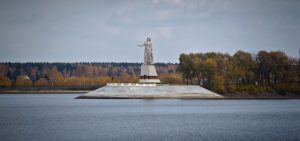
 хранится почитаемая чудотворной икона «Прибавление Ума». Рядом с ней мощевик, в котором сохранилась частичка мощей
хранится почитаемая чудотворной икона «Прибавление Ума». Рядом с ней мощевик, в котором сохранилась частичка мощей  Считается, что прообразом иконы «Прибавление ума» явилась Лорецкая статуя Богоматери, сделанная из кедра. Она хранилась в итальянском городе Лорето, в маленьком домике, который был перевезен из Назарета. По преданию, в этом домике родилась и жила в молодости
Считается, что прообразом иконы «Прибавление ума» явилась Лорецкая статуя Богоматери, сделанная из кедра. Она хранилась в итальянском городе Лорето, в маленьком домике, который был перевезен из Назарета. По преданию, в этом домике родилась и жила в молодости 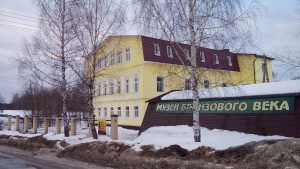 русским археологом Алексеем Уваровым у деревни Фатьяново, вблизи села Толбухино. Уваров был одним из основателей Московского археологического общества и Исторического музея в Москве. Он происходил из древнего рода Уваровых, в фамилии которых –
русским археологом Алексеем Уваровым у деревни Фатьяново, вблизи села Толбухино. Уваров был одним из основателей Московского археологического общества и Исторического музея в Москве. Он происходил из древнего рода Уваровых, в фамилии которых – 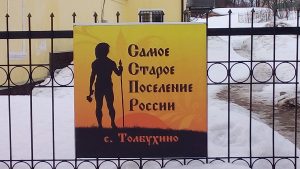 Село Толбухино считается самым древним поселением в России. Его возраст превышает 4000 лет. Толбухоно стоит на озере Тарасово. На санскрите «тарас» означает «энергия», «сила». Рядом с Толбухино и озером Тарасово находится деревня Сивцево. Её имя тоже может быть весьма древним.
Село Толбухино считается самым древним поселением в России. Его возраст превышает 4000 лет. Толбухоно стоит на озере Тарасово. На санскрите «тарас» означает «энергия», «сила». Рядом с Толбухино и озером Тарасово находится деревня Сивцево. Её имя тоже может быть весьма древним. Владимир означает «Владеющий миром». В Индии, аналогичное значение названия имеет город
Владимир означает «Владеющий миром». В Индии, аналогичное значение названия имеет город  к метафизическому союзу Луны и Солнца, левого и правого полушарий, выводящего человека на новый, космический уровень. Другим интереснейшим символом на флаге Владимирской области (гербе Владимира) является человекообразный лев, напоминающий индийского
к метафизическому союзу Луны и Солнца, левого и правого полушарий, выводящего человека на новый, космический уровень. Другим интереснейшим символом на флаге Владимирской области (гербе Владимира) является человекообразный лев, напоминающий индийского  Начиная с
Начиная с 




 французского короля Генриха I – внука Гуго Капета, основателя династии Капетингов. Вышеуказанный король Людовик VIII был прапраправнуком короля Генриха I и его королевы Анны Ярославны. Венчают герб Дурасовых перья павлина. В Индии,
французского короля Генриха I – внука Гуго Капета, основателя династии Капетингов. Вышеуказанный король Людовик VIII был прапраправнуком короля Генриха I и его королевы Анны Ярославны. Венчают герб Дурасовых перья павлина. В Индии,  Калужской области, где появилась первая в мире
Калужской области, где появилась первая в мире  царе
царе  восток от
восток от  идентично имени великой русской реки
идентично имени великой русской реки 
 Вольгинский получил своё название от местной реки Вольга, которая является притоком Клязьмы (бассейн
Вольгинский получил своё название от местной реки Вольга, которая является притоком Клязьмы (бассейн  иконы
иконы Первозванного учреждён Петром I в конце XVII века. Первый по времени учреждения российский орден, высшая награда Российской империи до 1917 года. В 1998 году орден был восстановлен как высшая н
Первозванного учреждён Петром I в конце XVII века. Первый по времени учреждения российский орден, высшая награда Российской империи до 1917 года. В 1998 году орден был восстановлен как высшая н служил в 1968 году ориентиром при поиске места падения самолёта с Гагариным и Серёгиным.
служил в 1968 году ориентиром при поиске места падения самолёта с Гагариным и Серёгиным.  Христом и Андреем Первозванным изображён парад планет и космический корабль, а на стенах – святые-покровители первого отр
Христом и Андреем Первозванным изображён парад планет и космический корабль, а на стенах – святые-покровители первого отр от мемориального дома-усадьбы, где в 1847 году родился Николай Егорович Жуковский, которого
от мемориального дома-усадьбы, где в 1847 году родился Николай Егорович Жуковский, которого 
 В 4км. на северо-восток от Черкутино находится село Алепино – родина русского писателя Солоухина, стоявшего у истоков возрождения Храма Христа Спасителя в Москве. Могила писателя находится в его родном селе, название которого совпадает с Алеппо – крупнейшего города Сирии, имеющей с Россией очень давние связи, см.
В 4км. на северо-восток от Черкутино находится село Алепино – родина русского писателя Солоухина, стоявшего у истоков возрождения Храма Христа Спасителя в Москве. Могила писателя находится в его родном селе, название которого совпадает с Алеппо – крупнейшего города Сирии, имеющей с Россией очень давние связи, см.  для индийской цивилизации – Агра, Тара, Яда и т.д. В
для индийской цивилизации – Агра, Тара, Яда и т.д. В  Судогда. На санскрите, «судогха» означает «обильный», а «ядас» — «вода», «река», «близкий союз». В историческом центре города река Яда впадает в реку Судогда. В 4 км. южнее устья Яды, в тоже Судогду впадает река Тарасиха. На Санскрите, тарас означает «энергия», «сила», а тараса — «быстро». В 3,5 км. юго-западнее устья Тарасихи, расположена деревня Райки. В русском языке,
Судогда. На санскрите, «судогха» означает «обильный», а «ядас» — «вода», «река», «близкий союз». В историческом центре города река Яда впадает в реку Судогда. В 4 км. южнее устья Яды, в тоже Судогду впадает река Тарасиха. На Санскрите, тарас означает «энергия», «сила», а тараса — «быстро». В 3,5 км. юго-западнее устья Тарасихи, расположена деревня Райки. В русском языке,  Владимиром и Боголюбово. Этот сегодня небольшой ручей был полноводной рекой несколько тысяч лет назад. Сурмино — деревня в
Владимиром и Боголюбово. Этот сегодня небольшой ручей был полноводной рекой несколько тысяч лет назад. Сурмино — деревня в 
 языке звучал как Эйванара.
языке звучал как Эйванара.  Если двигаться от Владимира / Боголюбово по трассе М-7, то недалеко от них, в районе деревни Бородино, автомагистраль пересекает река Ягома. Вышеуказанный индийский город Агра стоит на священной реке Ямуна, как и Дели, ставший столицей Индии после Агры. В Московской области, имеющих множество топонимов, переводимых с Санскрита, река
Если двигаться от Владимира / Боголюбово по трассе М-7, то недалеко от них, в районе деревни Бородино, автомагистраль пересекает река Ягома. Вышеуказанный индийский город Агра стоит на священной реке Ямуна, как и Дели, ставший столицей Индии после Агры. В Московской области, имеющих множество топонимов, переводимых с Санскрита, река  северо-восток от села Гатиха расположено озеро Святое. На Санскрите, слово «гати» означает «движение», «убежище», «курс», «дорожка», «счастье», «путь души» и т.д. В Венёвском районе Тульской области есть деревня Гати. Населенные пункты с таким названием есть в Белоруссии и на Украине. На Урале до сих пор словом «гать» называют дорогу или настил из брёвен для проезда через топкое место или болото. Рядом с Екатеринбургом и
северо-восток от села Гатиха расположено озеро Святое. На Санскрите, слово «гати» означает «движение», «убежище», «курс», «дорожка», «счастье», «путь души» и т.д. В Венёвском районе Тульской области есть деревня Гати. Населенные пункты с таким названием есть в Белоруссии и на Украине. На Урале до сих пор словом «гать» называют дорогу или настил из брёвен для проезда через топкое место или болото. Рядом с Екатеринбургом и 
 может иметь связь с Туле – северным континентом,
может иметь связь с Туле – северным континентом, 
 которое является Особо охраняемой природной территорией, т.к. имеет особое природоохранное, научное, культурное, эстетическое, рекреационное и оздоровительное значение. Здесь расположены детский оздоровительно-образовательный центр «Лесной городок», базы отдыха «
которое является Особо охраняемой природной территорией, т.к. имеет особое природоохранное, научное, культурное, эстетическое, рекреационное и оздоровительное значение. Здесь расположены детский оздоровительно-образовательный центр «Лесной городок», базы отдыха « Вышеуказанная река Ягома впадает в Клязьму в 5 км. юго-западнее Пенкино / места пересечения М-
Вышеуказанная река Ягома впадает в Клязьму в 5 км. юго-западнее Пенкино / места пересечения М- догонов. Более того, притокм Синеборки является река
догонов. Более того, притокм Синеборки является река  персонажи «Махабхараты» — двоюродные братья Пандавов.
персонажи «Махабхараты» — двоюродные братья Пандавов. штата Уттар-Прадеш, в котором находится вышеуказанный город Агра (столица
штата Уттар-Прадеш, в котором находится вышеуказанный город Агра (столица  солярное божество. В послеведийский период, он сравнялся с богами и стал Солнцем, то есть Сурьей. Его имя Вивасват стало эпитетом
солярное божество. В послеведийский период, он сравнялся с богами и стал Солнцем, то есть Сурьей. Его имя Вивасват стало эпитетом  В
В 
 озера Уга находится озеро Свято. Как раз между ними течёт река Виша. Озера Уга и Свято расположены рядом с рекой Ока. В 12 км. на юг от истока реки Виша, в Оку впадает река Ушна. На Санскрите, уша / уса (
озера Уга находится озеро Свято. Как раз между ними течёт река Виша. Озера Уга и Свято расположены рядом с рекой Ока. В 12 км. на юг от истока реки Виша, в Оку впадает река Ушна. На Санскрите, уша / уса (
 Устье реки Суворощь находится в 9,5 км. от его истока, образуемого слиянием рек Сураж и Важенка, возле села Сергиевы-Горки, названным именем
Устье реки Суворощь находится в 9,5 км. от его истока, образуемого слиянием рек Сураж и Важенка, возле села Сергиевы-Горки, названным именем  названия Шумарь и
названия Шумарь и 

 прошлом это были земли славян. Фильм Михаила Задорнова «Рюрик. Потерянная быль» подробно освещает эту тему. Считается, что нынешний германский город Рерик (тоже в прошлом славянский) был родиной Рюрика, который в IX веке стал Новгородским князем и основателем царской династии. Примечательно, что на памятнике «Тысячелетие России» в Великом Новгороде, за спиной Рюрика стоит направляющий / благословляющий
прошлом это были земли славян. Фильм Михаила Задорнова «Рюрик. Потерянная быль» подробно освещает эту тему. Считается, что нынешний германский город Рерик (тоже в прошлом славянский) был родиной Рюрика, который в IX веке стал Новгородским князем и основателем царской династии. Примечательно, что на памятнике «Тысячелетие России» в Великом Новгороде, за спиной Рюрика стоит направляющий / благословляющий  С 1781 года город Киржач имеет на своём гербе сову — традиционный символ мудрости. Коба (англ. Сова) — псевдоним
С 1781 года город Киржач имеет на своём гербе сову — традиционный символ мудрости. Коба (англ. Сова) — псевдоним  на гербе Иркутска, откуда начиналась Российско-Американская компания (
на гербе Иркутска, откуда начиналась Российско-Американская компания (
 Село Сима расположено в Юрьев-Польском районе Владимирской области, в
Село Сима расположено в Юрьев-Польском районе Владимирской области, в  Голицыной.
Голицыной. Солунского, находится бюст полководца. Символично, что именно в селе Сима, гостя у Голицыных, Багратион встретил свое назначение на пост главнокомандующего Второй Западной
Солунского, находится бюст полководца. Символично, что именно в селе Сима, гостя у Голицыных, Багратион встретил свое назначение на пост главнокомандующего Второй Западной здесь же скончался от ран, полученных в Бородинском сражении в сентябре 1812 года, в усадьбе Голицыных.
здесь же скончался от ран, полученных в Бородинском сражении в сентябре 1812 года, в усадьбе Голицыных. революции. Считается, что здесь Владимиру Ульянову нашли паспорт местного крестьянина
революции. Считается, что здесь Владимиру Ульянову нашли паспорт местного крестьянина  на реке Нилка. Египетский Нил может оказаться лишь их братом, если принять во внимание информацию о
на реке Нилка. Египетский Нил может оказаться лишь их братом, если принять во внимание информацию о  город Сим) — родина выдающегося русского учёного Игоря
город Сим) — родина выдающегося русского учёного Игоря  сотрудничества, основанной в 2001 году лидерами Китая, России и стран Средней Азии. Сегодня, общая территория входящих в ШОС стран составляет 60% территории Евразии, а общая численность населения стран ШОС равна половина населения планеты.
сотрудничества, основанной в 2001 году лидерами Китая, России и стран Средней Азии. Сегодня, общая территория входящих в ШОС стран составляет 60% территории Евразии, а общая численность населения стран ШОС равна половина населения планеты. Переславля-Залесского). Шатровая церковь была в середине XVI века и напоминает храм
Переславля-Залесского). Шатровая церковь была в середине XVI века и напоминает храм  отношение к взятию
отношение к взятию  очень любил и покровительствовал. Царь построил в камне главный храм Никитского монастыря — собор Никиты Великомученика с приделом преподобного Никиты Переславского (Никиты Столпника, подвизавшегося в монастыре в XII веке).
очень любил и покровительствовал. Царь построил в камне главный храм Никитского монастыря — собор Никиты Великомученика с приделом преподобного Никиты Переславского (Никиты Столпника, подвизавшегося в монастыре в XII веке).

 стороне реки Дунай, в пределах нынешней
стороне реки Дунай, в пределах нынешней  После смерти, мощи Никиты Готского были перенесены в Константинополь (стоящий на
После смерти, мощи Никиты Готского были перенесены в Константинополь (стоящий на  Распятия. На них обратили внимание в 60-х годах ХХ века, и они сразу стали сенсацией как в научных кругах, так среди сторонников Палеоконтакта (гипотезы древних космонавтов, посещавших Землю). На этих фресках изображены летательные аппараты с пилотами внутри. Если бы это были ангелы, то вокруг их голов должны быть нимбы — ореолы святости.
Распятия. На них обратили внимание в 60-х годах ХХ века, и они сразу стали сенсацией как в научных кругах, так среди сторонников Палеоконтакта (гипотезы древних космонавтов, посещавших Землю). На этих фресках изображены летательные аппараты с пилотами внутри. Если бы это были ангелы, то вокруг их голов должны быть нимбы — ореолы святости. “All is number” stated Pythagoras, the most famous Greek mathematician and philosopher, lived in the 6th century BCE. The intimate nature of cosmic harmony is mathematics. Everything in the Universe can be expressed in terms of whole (“natural”) numbers. Pythagorean numbers were hieroglyphic symbols he used to explain ideas relating to the nature of things. In Pythagorean system every number on Earth (that is the world of consequences) corresponds to its invisible prototype in the world of matters.
“All is number” stated Pythagoras, the most famous Greek mathematician and philosopher, lived in the 6th century BCE. The intimate nature of cosmic harmony is mathematics. Everything in the Universe can be expressed in terms of whole (“natural”) numbers. Pythagorean numbers were hieroglyphic symbols he used to explain ideas relating to the nature of things. In Pythagorean system every number on Earth (that is the world of consequences) corresponds to its invisible prototype in the world of matters. turning-point in the human history. In metaphysical sources, it was supposed to awaken human ancient memory. The humanity has fallen asleep in amnesia of materialism (within the
turning-point in the human history. In metaphysical sources, it was supposed to awaken human ancient memory. The humanity has fallen asleep in amnesia of materialism (within the 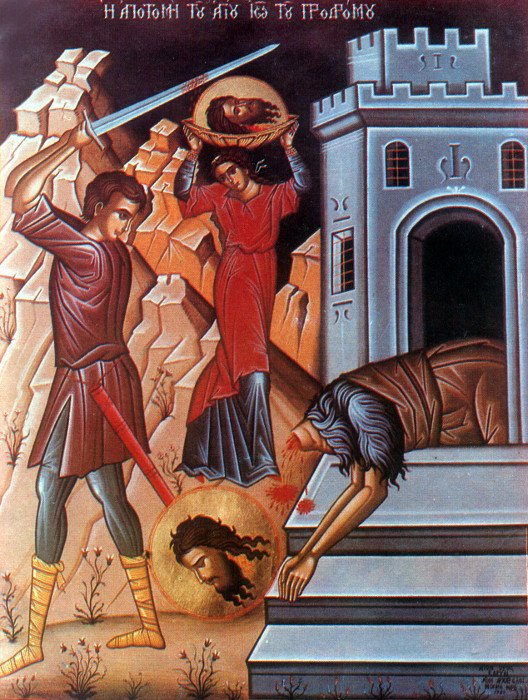 is the fifth chakra, called Vishudha. It is associated with
is the fifth chakra, called Vishudha. It is associated with  to a new level of consciousness (from the material to the spiritual). The first Russian Tsar Ivan Grozny was baptized on the day of the Beheading of John the Baptist in 1530 in the
to a new level of consciousness (from the material to the spiritual). The first Russian Tsar Ivan Grozny was baptized on the day of the Beheading of John the Baptist in 1530 in the 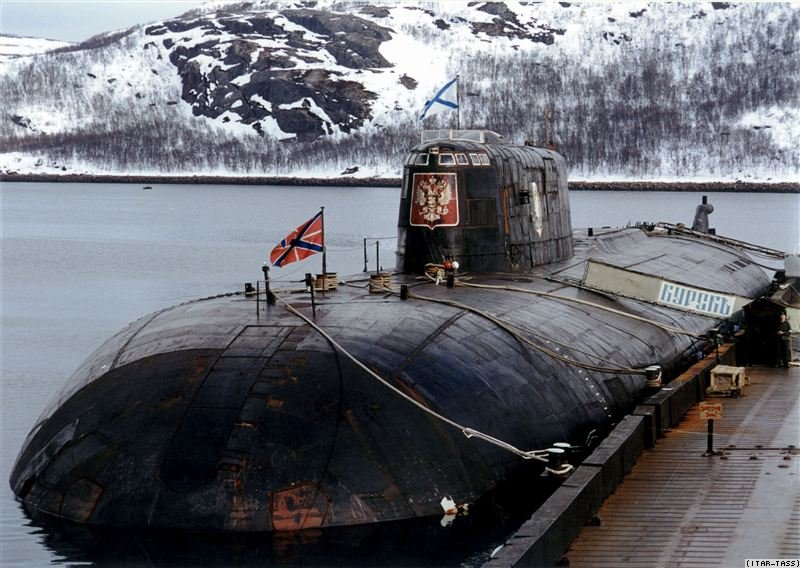 Nuclear-powered submarine “Kursk” was the pride of the Russian navy and represented the highest achievement of Soviet nuclear submarine technology. Submarines of this class were the second-largest attack submarines ever built, after another Soviet submarine class “Akula” (Project 941). The “Kursk” was compared to a leviathan with an almost mythical reputation as a war machine.
Nuclear-powered submarine “Kursk” was the pride of the Russian navy and represented the highest achievement of Soviet nuclear submarine technology. Submarines of this class were the second-largest attack submarines ever built, after another Soviet submarine class “Akula” (Project 941). The “Kursk” was compared to a leviathan with an almost mythical reputation as a war machine.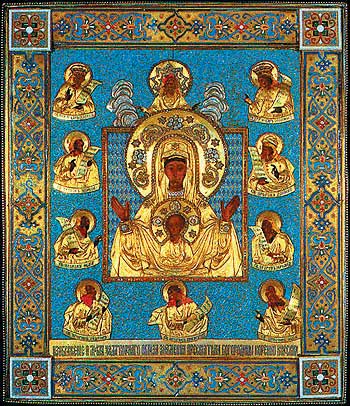
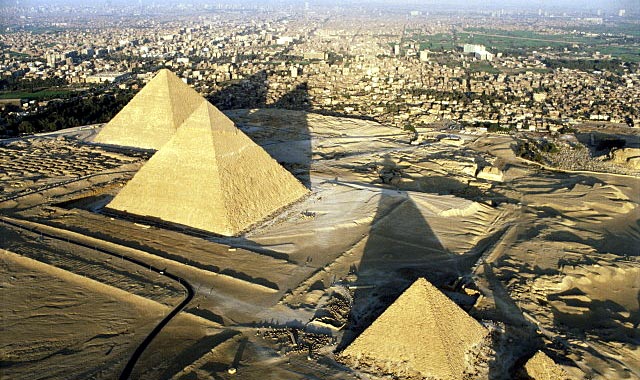 The greatest ancient mystery is The Great Pyramid. Among other riddles it is linked to the mystery of 11. In the book of G. Henkoke and R. Bauval “The mystery of Sphinx” it is said that one of the chief numerical coefficients in the construction of The Great Pyramid and the entire necropolis in The Giza is 11. This number can be divided without a remainder only on itself and one. In the architecture of The Great Pyramid appear numbers divisible 11. For example the side of its foundation is 440 Egyptian cubits i.e. 11 x 40 cubits. The relation of the height to the foundation is 7:11. The incline of the side verges is 14:11 and the incline of the Southern shaft of The King’s Chamber is 11:11.
The greatest ancient mystery is The Great Pyramid. Among other riddles it is linked to the mystery of 11. In the book of G. Henkoke and R. Bauval “The mystery of Sphinx” it is said that one of the chief numerical coefficients in the construction of The Great Pyramid and the entire necropolis in The Giza is 11. This number can be divided without a remainder only on itself and one. In the architecture of The Great Pyramid appear numbers divisible 11. For example the side of its foundation is 440 Egyptian cubits i.e. 11 x 40 cubits. The relation of the height to the foundation is 7:11. The incline of the side verges is 14:11 and the incline of the Southern shaft of The King’s Chamber is 11:11. According to English mystic writer Alice Bailey (“From Bethlehem to Calvary”), Jesus Christ (the Saviour) demonstrated to mankind five degrees of ascent or five initiations, described in Gospel: Birth, Baptism, Transfiguration, Crucifixion, Resurrection and Ascension. Everyone on the planet Earth is now on one of these steps.
According to English mystic writer Alice Bailey (“From Bethlehem to Calvary”), Jesus Christ (the Saviour) demonstrated to mankind five degrees of ascent or five initiations, described in Gospel: Birth, Baptism, Transfiguration, Crucifixion, Resurrection and Ascension. Everyone on the planet Earth is now on one of these steps. The Aquarius is the heavenly patron of Russia. It has been entrusted with a special task and responsibility within the
The Aquarius is the heavenly patron of Russia. It has been entrusted with a special task and responsibility within the 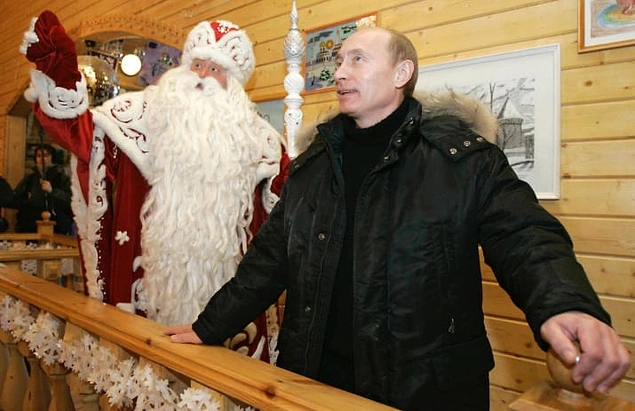 Veliky Ustyug in January 2008 for Christmas service in the church of the founder of the
Veliky Ustyug in January 2008 for Christmas service in the church of the founder of the 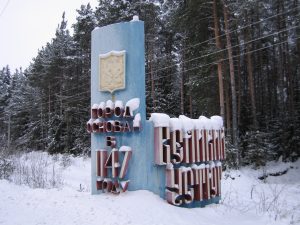 The official date of establishing Veliky Ustyug is the year 1147 (4 + 7 = 11). Russian capital
The official date of establishing Veliky Ustyug is the year 1147 (4 + 7 = 11). Russian capital  is the only city in Russia (and probably in the world) that has Aquarius on its coat of arms. It was approved in the 18th century by the Russian Empress Catherine the Great.
is the only city in Russia (and probably in the world) that has Aquarius on its coat of arms. It was approved in the 18th century by the Russian Empress Catherine the Great.
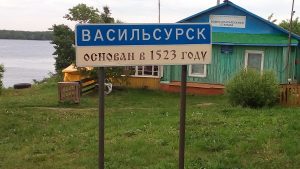 Chairs», released in 1928. Today, Vasuki is also a metaphor for an insignificant town or village that claims to be the grandiose center of the country and the Universe. Some authors consider the prototype of Vasuki provontial Russian town of Vasilsursk, located on the conjunction of the
Chairs», released in 1928. Today, Vasuki is also a metaphor for an insignificant town or village that claims to be the grandiose center of the country and the Universe. Some authors consider the prototype of Vasuki provontial Russian town of Vasilsursk, located on the conjunction of the  water. It is the source of many rivers that have names translated from Sanskrit. Originated here they belong to the basin of the great Siberian river
water. It is the source of many rivers that have names translated from Sanskrit. Originated here they belong to the basin of the great Siberian river  Reptilian leader in the Inner Earth. The World Channeling magazine describes the Reptiles as a part of the so called
Reptilian leader in the Inner Earth. The World Channeling magazine describes the Reptiles as a part of the so called 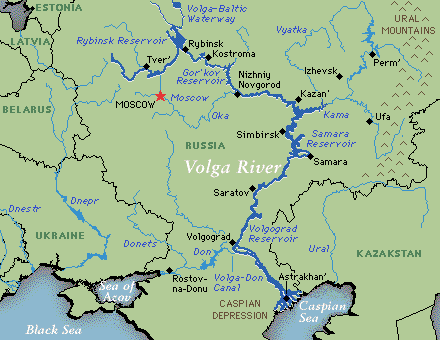 historical and sacral values described in the below sections of this work. They are largely based on the Volga, being a spiritual gift from Creator.
historical and sacral values described in the below sections of this work. They are largely based on the Volga, being a spiritual gift from Creator.

 are: the An-124 long-range heavy transport aircraft, the 200-seat Tu-204 medium-range airliner, modernized Il-76, etc.
are: the An-124 long-range heavy transport aircraft, the 200-seat Tu-204 medium-range airliner, modernized Il-76, etc.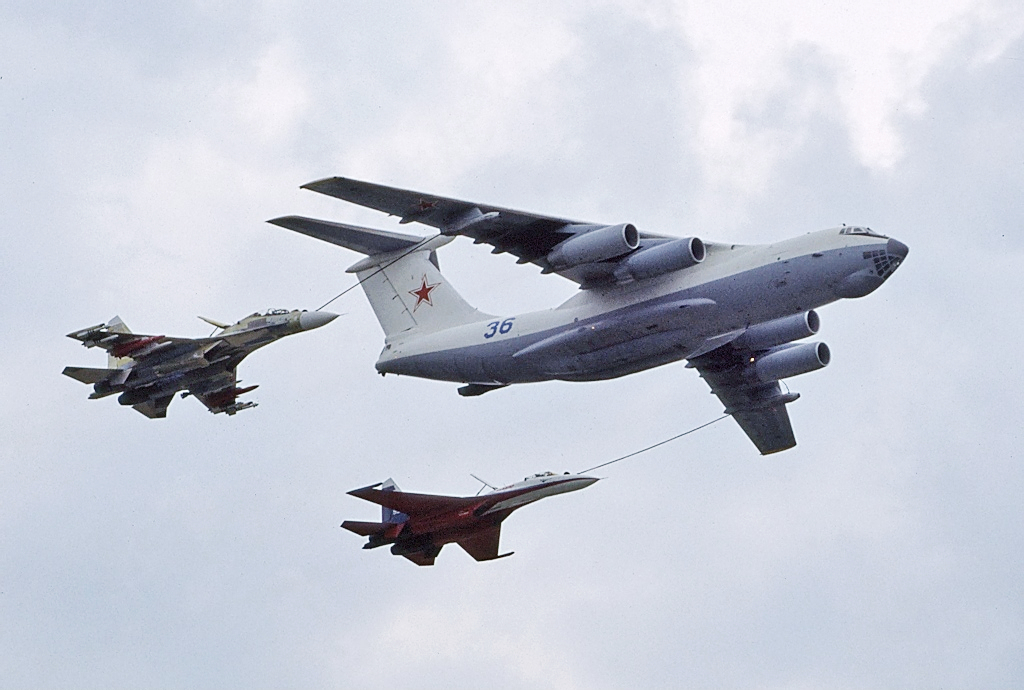 class of ramp vessels in the world. It can be operated in any climatic conditions with almost no restrictions. It could be used in various fields: as a military transport aircraft, aerial refueling tanker or command center, for extinguishing fires, etc. IL-76MD-90A is more unpretentious in comparison with the western one. It does not need a special infrastructure, and it does not need constant significant maintenance. They intend to create also a civilian version of the aircraft.
class of ramp vessels in the world. It can be operated in any climatic conditions with almost no restrictions. It could be used in various fields: as a military transport aircraft, aerial refueling tanker or command center, for extinguishing fires, etc. IL-76MD-90A is more unpretentious in comparison with the western one. It does not need a special infrastructure, and it does not need constant significant maintenance. They intend to create also a civilian version of the aircraft.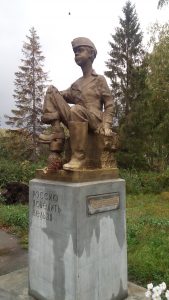 In Old Maina there is a monument dedicated to the children who worked as hard as the adults during the World War II to crush the Nazis. On that monument it is written that Russia can not be defeated.
In Old Maina there is a monument dedicated to the children who worked as hard as the adults during the World War II to crush the Nazis. On that monument it is written that Russia can not be defeated.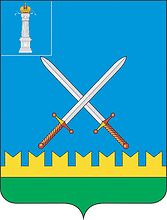 the mouth of local river Maina. According to Ulyanovsk archaeologists, in the territory of the present Old Maina people have been living continuously since the 3rd – 4th century. The tribes of Imenkovo archaeological culture came first here. Many official researchers regard Imenkovo culture as the Slavs. More profound results on the ancestors of the Slavs provide
the mouth of local river Maina. According to Ulyanovsk archaeologists, in the territory of the present Old Maina people have been living continuously since the 3rd – 4th century. The tribes of Imenkovo archaeological culture came first here. Many official researchers regard Imenkovo culture as the Slavs. More profound results on the ancestors of the Slavs provide 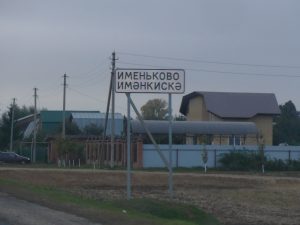
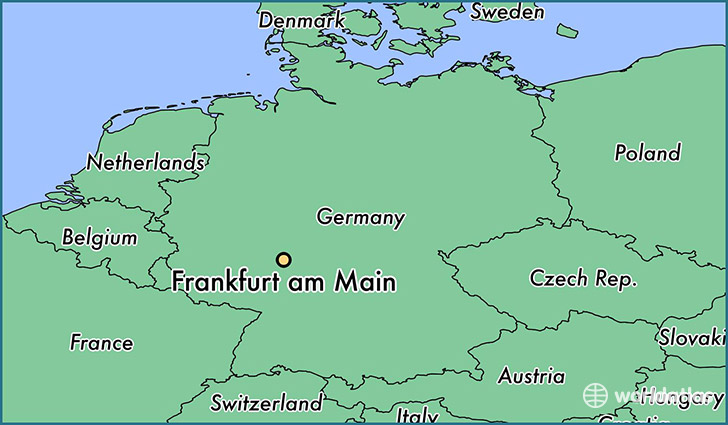 Germanization or extermination started approximately in the 12th century, when the Danish feudal lords destroyed the ancient Slavic sanctuary of Arkona, located on the island of Ruyan (German Rügen) in the Baltic Sea.
Germanization or extermination started approximately in the 12th century, when the Danish feudal lords destroyed the ancient Slavic sanctuary of Arkona, located on the island of Ruyan (German Rügen) in the Baltic Sea.
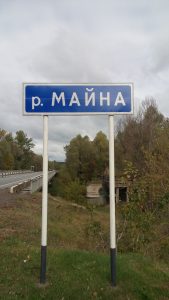
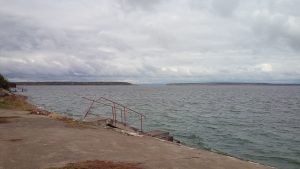
 stone church in Kiev, built in the end of 10th century by the order of Grand Prince Vladimir the Great, who Christianized the Kievan Rus. Kiev was the main center of Christianization of other parts of Rus (Russia). Hence, it was called “mother of Russian cities” in Greek manner. The Greeks (from Byzantium) took the most active role in spreading Christianity in Russia. The expression “mother of Russian cities”, as well as the Greek “metropolis” (from “meter” – “mother” and “polis” – “city”), means the founding city. In Russian language, Kiev is a male name. Kiev reached its Golden Age as the center Kievan Rus in the 10th — 12th centuries.
stone church in Kiev, built in the end of 10th century by the order of Grand Prince Vladimir the Great, who Christianized the Kievan Rus. Kiev was the main center of Christianization of other parts of Rus (Russia). Hence, it was called “mother of Russian cities” in Greek manner. The Greeks (from Byzantium) took the most active role in spreading Christianity in Russia. The expression “mother of Russian cities”, as well as the Greek “metropolis” (from “meter” – “mother” and “polis” – “city”), means the founding city. In Russian language, Kiev is a male name. Kiev reached its Golden Age as the center Kievan Rus in the 10th — 12th centuries.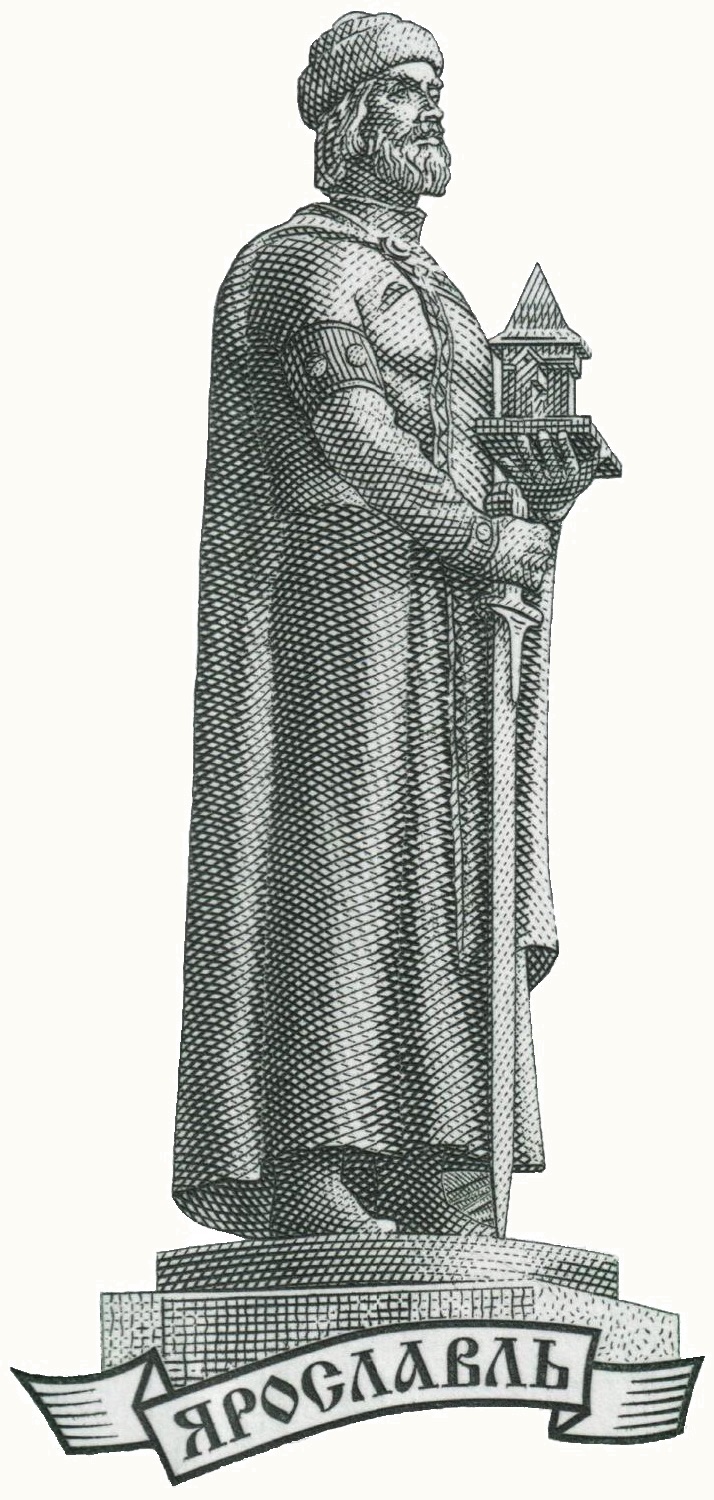 deeply involved in The Knight Templar in France and Palestine. The oldest settlement on the territory of modern-day Yaroslavl belongs to the 5th – 3rd millennium BCE. Apparently,
deeply involved in The Knight Templar in France and Palestine. The oldest settlement on the territory of modern-day Yaroslavl belongs to the 5th – 3rd millennium BCE. Apparently,  Sun, and not the Sun of the Solar System itself. Yaroslavl is the point of the Earth, which has always been directly connected with the energy flows of the Central Spiritual Sun. The bear is the ancient symbol of Yaroslavl, like Russia’s. According to a legend, when Yaroslav the Wise came here to baptize the local residents, he had to
Sun, and not the Sun of the Solar System itself. Yaroslavl is the point of the Earth, which has always been directly connected with the energy flows of the Central Spiritual Sun. The bear is the ancient symbol of Yaroslavl, like Russia’s. According to a legend, when Yaroslav the Wise came here to baptize the local residents, he had to  deal with their sacred and worshiped bear. It happened at the confluence of the Volga and the Kotorosl River.
deal with their sacred and worshiped bear. It happened at the confluence of the Volga and the Kotorosl River. administrative center is the town of
administrative center is the town of  Bolgal has special religious significance for the Muslims of Russia and the Volga river regions in particular. Islam was adopted here in 922 and it became official religion of the Volga Bulgaria. Special embassy arrived from Baghdad then capital of the Caliphate ruled by the Abbasid dynasty. The spread of Islam in the Middle Volga region was peaceful. The Volga Bulgarians knew One God from their pre-Islamic religion called Tengrism. The adoption of Islam by the Volga Bulgaria led to a strong impetus to the development of education, literature, and science. The Bolgars achieved considerable success in mathematics and astronomy, chemistry and medicine, geography and history. From the Soviet times, pilgrimage to Bolgar is called the Little Hajj.
Bolgal has special religious significance for the Muslims of Russia and the Volga river regions in particular. Islam was adopted here in 922 and it became official religion of the Volga Bulgaria. Special embassy arrived from Baghdad then capital of the Caliphate ruled by the Abbasid dynasty. The spread of Islam in the Middle Volga region was peaceful. The Volga Bulgarians knew One God from their pre-Islamic religion called Tengrism. The adoption of Islam by the Volga Bulgaria led to a strong impetus to the development of education, literature, and science. The Bolgars achieved considerable success in mathematics and astronomy, chemistry and medicine, geography and history. From the Soviet times, pilgrimage to Bolgar is called the Little Hajj. is more than 22% of the world’s population. The largest Koran is kept in Bolgar. The Volga Bulgaria was the only Islamic country of Eastern Europe. The Bulgarian Historical and Architectural Museum-Reserve (established in 1969) is the most northern monument in the world of medieval Muslim architecture. Being secular, the leadership of Tatarstan places a key importance on the development of historical and religious heritage. Bolgar is identified with Islam, whereas
is more than 22% of the world’s population. The largest Koran is kept in Bolgar. The Volga Bulgaria was the only Islamic country of Eastern Europe. The Bulgarian Historical and Architectural Museum-Reserve (established in 1969) is the most northern monument in the world of medieval Muslim architecture. Being secular, the leadership of Tatarstan places a key importance on the development of historical and religious heritage. Bolgar is identified with Islam, whereas  southeast of Old Maina, and 90 km southeast of Ulyanovsk. Only 9 km is to New Maina from the city of Dimitrovgrad.
southeast of Old Maina, and 90 km southeast of Ulyanovsk. Only 9 km is to New Maina from the city of Dimitrovgrad.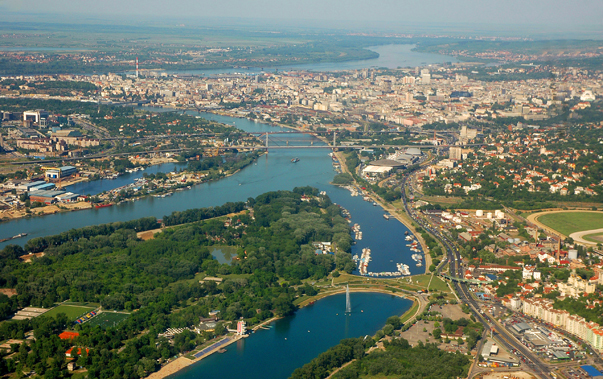 New Maina and Dimitrovgrad are divided by the river called the Big Cheremshan (Russian: the Bolshoy Cheremshan River), a tributary of the Volga River.
New Maina and Dimitrovgrad are divided by the river called the Big Cheremshan (Russian: the Bolshoy Cheremshan River), a tributary of the Volga River. Obnisk (the Kaluga region), the place of the world’s first nuclear power plant to generate electricity for a power grid.
Obnisk (the Kaluga region), the place of the world’s first nuclear power plant to generate electricity for a power grid.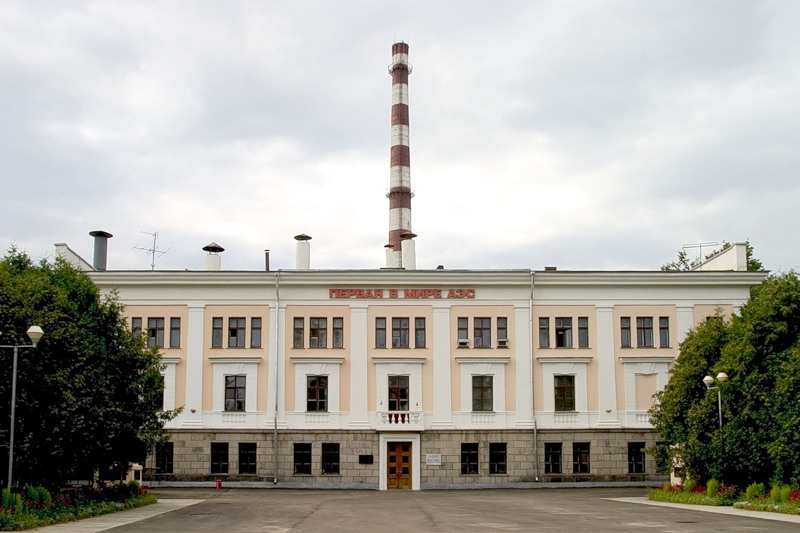
 the 5th millennium BCE. The Samara region is considered as the original homeland of the Proto-Indo-European language.
the 5th millennium BCE. The Samara region is considered as the original homeland of the Proto-Indo-European language.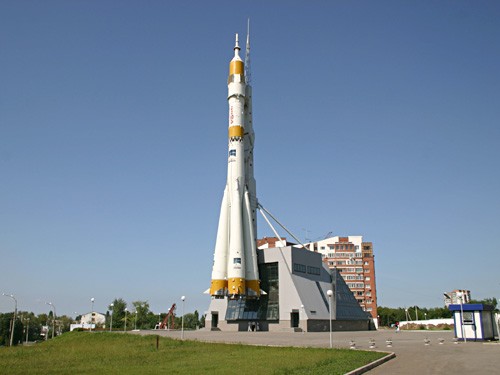 secretive bunker of its ruler Josef Stalin is now open to the public. After the war, Samara became the Cosmic capital of the Soviet Union. In Samara was built the launch vehicle Vostok, which delivered in 1961 the first manned spaceship to orbit with Yury Gagarin on board. After returning to Earth / landing near the great Russian River Volga,
secretive bunker of its ruler Josef Stalin is now open to the public. After the war, Samara became the Cosmic capital of the Soviet Union. In Samara was built the launch vehicle Vostok, which delivered in 1961 the first manned spaceship to orbit with Yury Gagarin on board. After returning to Earth / landing near the great Russian River Volga,  Yury Gagarin, the first man to travel in Space, took a rest in Samara. Here he reported to the State Commission, headed by Sergei Korolev, on the successful completion of his historical mission.
Yury Gagarin, the first man to travel in Space, took a rest in Samara. Here he reported to the State Commission, headed by Sergei Korolev, on the successful completion of his historical mission.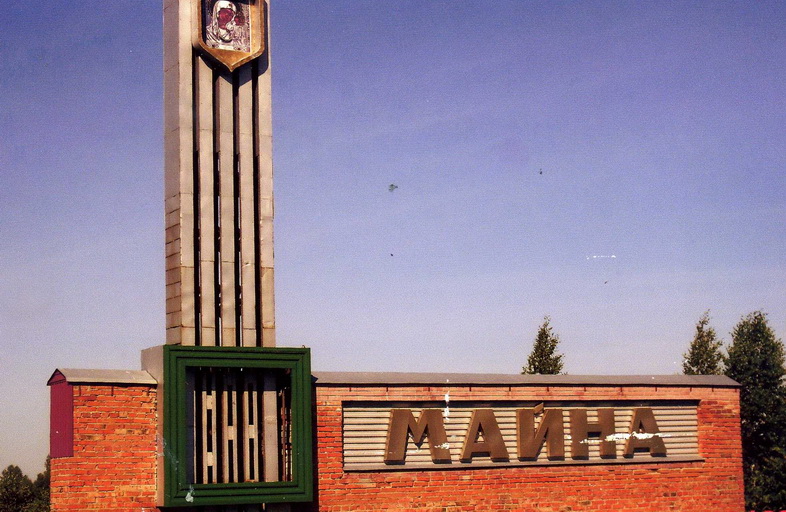 The above described settlements Old Maina and New Maina of the Ulyanovsk region are located on the left bank of the River Volga. On the opposite right bank of the Volga, there is also settlement Maina and river Maina. This urban type settlement Maina is 50 km west south of Ulyanovsk, whose historical center is also on the right bank of the Volga. Interestingly, in Southern Siberia also there is settlement called
The above described settlements Old Maina and New Maina of the Ulyanovsk region are located on the left bank of the River Volga. On the opposite right bank of the Volga, there is also settlement Maina and river Maina. This urban type settlement Maina is 50 km west south of Ulyanovsk, whose historical center is also on the right bank of the Volga. Interestingly, in Southern Siberia also there is settlement called 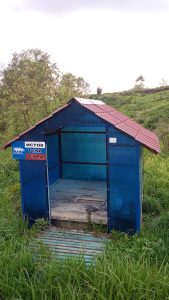
 The Avestan language is classified as an Iranian language, a branch of the Indo-Iranian languages within the Indo-European family. The Avestan is assumed to have been quite close to Vedic Sanskrit. In Russia there are many names of rivers and settlements translated from Sanskrit. For instance, in the Ulyanovsk region is the source of river Sura. In Sanskrit,
The Avestan language is classified as an Iranian language, a branch of the Indo-Iranian languages within the Indo-European family. The Avestan is assumed to have been quite close to Vedic Sanskrit. In Russia there are many names of rivers and settlements translated from Sanskrit. For instance, in the Ulyanovsk region is the source of river Sura. In Sanskrit,  70 km northwest from Maina is the settlement
70 km northwest from Maina is the settlement 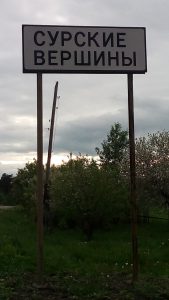 Sura Peaks (Russian: Surskiye Vershiny). This place is famous for its St. Nicholas Hill overlooking the River Sura. It is one of the most revered destinations in the Sura district and the whole Russia. It is believed by everyone claimed the 76-meter hill will be freed from all the sins. This St. Nicholas Hill is made of chalk. Its slopes are very steep, covered with grass and rare bushes.
Sura Peaks (Russian: Surskiye Vershiny). This place is famous for its St. Nicholas Hill overlooking the River Sura. It is one of the most revered destinations in the Sura district and the whole Russia. It is believed by everyone claimed the 76-meter hill will be freed from all the sins. This St. Nicholas Hill is made of chalk. Its slopes are very steep, covered with grass and rare bushes. Alatyr, like the settlement Sura Hills, was established by the order of the first Russian Tsar Ivan Grozny going to conquer
Alatyr, like the settlement Sura Hills, was established by the order of the first Russian Tsar Ivan Grozny going to conquer  in the Aquila constellation), Altar (the ‘Holy table’, structure for religious sacrifices located in places of worship), etc.
in the Aquila constellation), Altar (the ‘Holy table’, structure for religious sacrifices located in places of worship), etc. 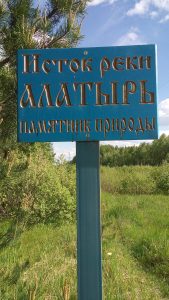 The source of river Alatyr is 190 km west of its mouth. The Alatyr originates in the
The source of river Alatyr is 190 km west of its mouth. The Alatyr originates in the 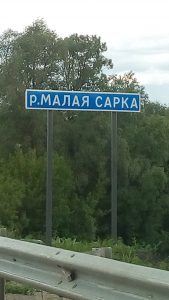 Between St. Nicholas Hill / the settlement Sura Hills and city of Alatyr is located village Sara and two Sarka rivers: The Big Sarka and the Small Sarka. Sarka is a diminutive of Sara (river). In Sanskrit, Sara means “essence”, “stream”, “energy”, “main point”, etc. The Middle Eastern name Sarah means “Princess”.
Between St. Nicholas Hill / the settlement Sura Hills and city of Alatyr is located village Sara and two Sarka rivers: The Big Sarka and the Small Sarka. Sarka is a diminutive of Sara (river). In Sanskrit, Sara means “essence”, “stream”, “energy”, “main point”, etc. The Middle Eastern name Sarah means “Princess”.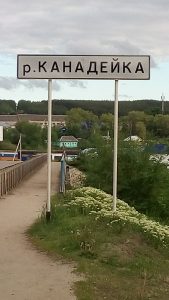
 that connect five seas: the Baltic, White, Caspian, Azov and Black seas. Shipping Volga – Don Canal named after
that connect five seas: the Baltic, White, Caspian, Azov and Black seas. Shipping Volga – Don Canal named after 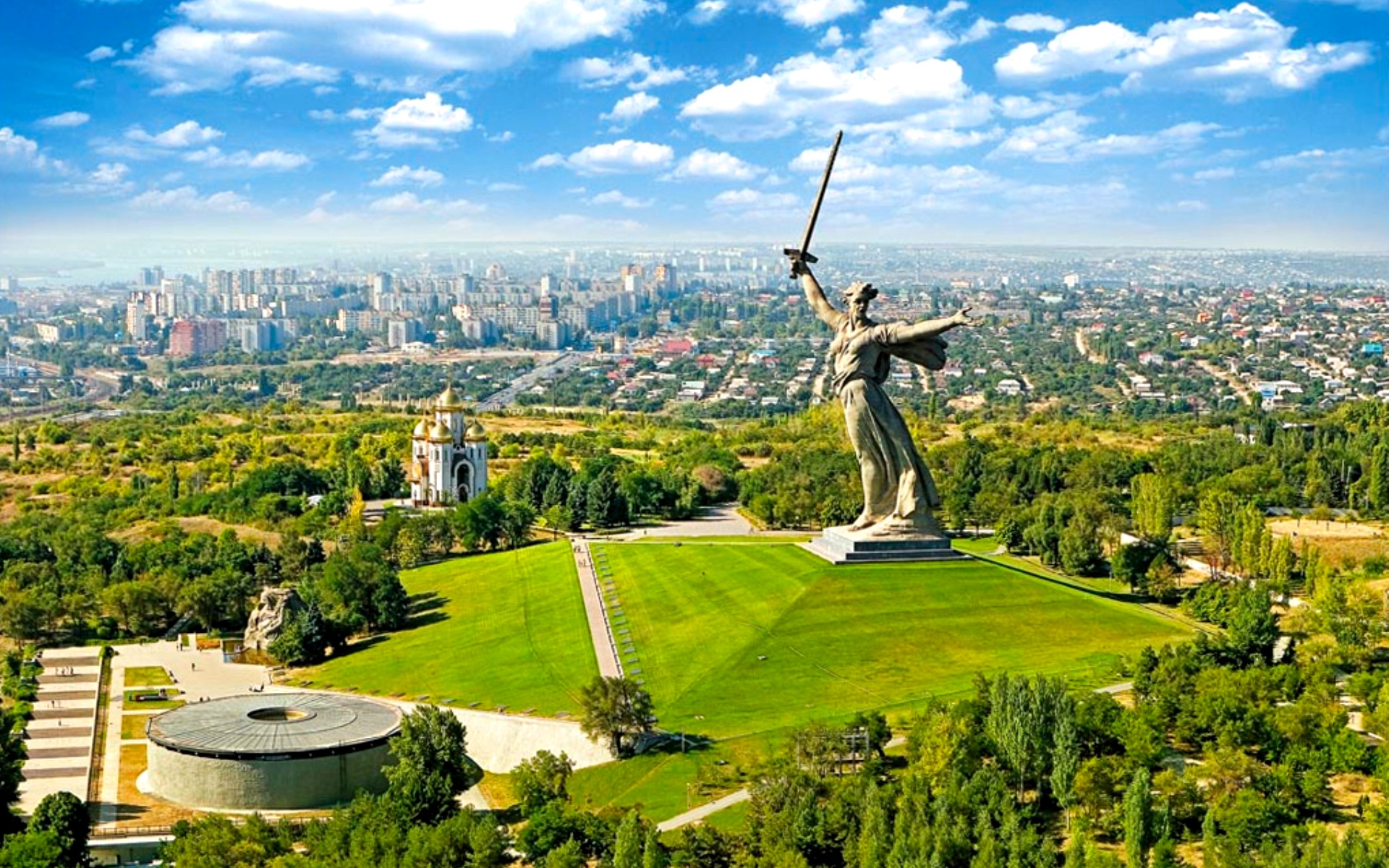 is from the Soviet defenders during the Battle of Stalingrad (August 1942 – February 1943) that was the largest and bloodiest battle in the history of warfare.
is from the Soviet defenders during the Battle of Stalingrad (August 1942 – February 1943) that was the largest and bloodiest battle in the history of warfare.
 Rostselmash (founded in 1929) is a Russian agricultural equipment company, based in Rostov-on-Don. It is one of the five largest world producers of agricultural machinery. Beside Russia, Rostselmash has production facilities in Canada, USA, Ukraine and Kazakhstan.
Rostselmash (founded in 1929) is a Russian agricultural equipment company, based in Rostov-on-Don. It is one of the five largest world producers of agricultural machinery. Beside Russia, Rostselmash has production facilities in Canada, USA, Ukraine and Kazakhstan. one of the largest manufacturers of locomotives in the world. The plant has produced more than 16,000 locomotives of more than 65 types. Its locomotives haul trains transporting 80% of all cargo on the electrified railways of Russia and CIS countries. Russia has the longest railway in the world. The longest railway in Russia and on the planet is the Transsiberian Railway (9,300 km long), also called The Great Siberian Way, connecting Moscow with the Far Eastern industrial cities of Russia. Russia has a total length of 121,000 km of the railway tracks, most being located in picturesque areas.
one of the largest manufacturers of locomotives in the world. The plant has produced more than 16,000 locomotives of more than 65 types. Its locomotives haul trains transporting 80% of all cargo on the electrified railways of Russia and CIS countries. Russia has the longest railway in the world. The longest railway in Russia and on the planet is the Transsiberian Railway (9,300 km long), also called The Great Siberian Way, connecting Moscow with the Far Eastern industrial cities of Russia. Russia has a total length of 121,000 km of the railway tracks, most being located in picturesque areas. Throughout its history, it has designed and produced more than 20 different models of aircraft for civilian and military purposes, as well as customized models. Pilots flying Beriev seaplanes have broken 228 world aviation records.
Throughout its history, it has designed and produced more than 20 different models of aircraft for civilian and military purposes, as well as customized models. Pilots flying Beriev seaplanes have broken 228 world aviation records. In antiquity, the Don was viewed as the border between Europe and Asia by some ancient Greek geographers. Indeed, the modern boundary of Europe and Asia is drawn by the Manych, a tributary of the Don. The border passes along the tops of the Ural Mountains and further along the Kumo-Manych depression, which is now the floodplain of the Kuma and Manych rivers, but in ancient times was a strait connecting the Black Sea with the Caspian.
In antiquity, the Don was viewed as the border between Europe and Asia by some ancient Greek geographers. Indeed, the modern boundary of Europe and Asia is drawn by the Manych, a tributary of the Don. The border passes along the tops of the Ural Mountains and further along the Kumo-Manych depression, which is now the floodplain of the Kuma and Manych rivers, but in ancient times was a strait connecting the Black Sea with the Caspian. During the times of the
During the times of the  hero Hercules, searched for Colchis in the delta of River Don (the Azov Sea). Aea, later Colchis, was located in the lands of the Azov (not the Black) Sea. The name of Colchis was fixed by famous Ancient Greek lyric poet
hero Hercules, searched for Colchis in the delta of River Don (the Azov Sea). Aea, later Colchis, was located in the lands of the Azov (not the Black) Sea. The name of Colchis was fixed by famous Ancient Greek lyric poet 
 Dmitri was a prominent Russian Church theologian, Bishop of
Dmitri was a prominent Russian Church theologian, Bishop of  the spot where Mana River enters
the spot where Mana River enters  + sky”. In the middle of the last century, they considered this territory as a place for
+ sky”. In the middle of the last century, they considered this territory as a place for 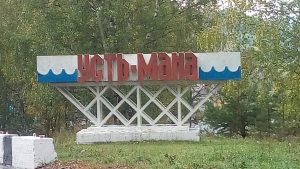 Krasnoyarsk. Divnogorsk’s main industrial facility is the Krasnoyarsk Dam on the
Krasnoyarsk. Divnogorsk’s main industrial facility is the Krasnoyarsk Dam on the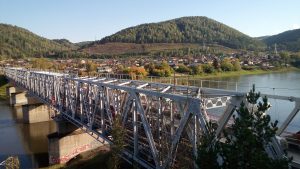 Yenisei River. From commissioning of 10th turbine in 1971, the station was the world’s single biggest power producer until 1983. It is a landmark symbol of Krasnoyarsk, and is depicted on the 10-ruble bill. As a result of the damming, the Krasnoyarsk Reservoir (informally the Krasnoyarsk Sea) was created. It is 388 km in length.
Yenisei River. From commissioning of 10th turbine in 1971, the station was the world’s single biggest power producer until 1983. It is a landmark symbol of Krasnoyarsk, and is depicted on the 10-ruble bill. As a result of the damming, the Krasnoyarsk Reservoir (informally the Krasnoyarsk Sea) was created. It is 388 km in length.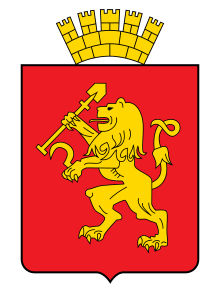 The shield is topped with the golden mural crown. The lion symbolizes strength and courage. The sickle
The shield is topped with the golden mural crown. The lion symbolizes strength and courage. The sickle  and shovel initially reflected the main occupation of the inhabitants — farming and mining of minerals, primarily gold. In the 1840s the Yenisei province became the main center of
and shovel initially reflected the main occupation of the inhabitants — farming and mining of minerals, primarily gold. In the 1840s the Yenisei province became the main center of  arose in the 12th century as a patrimonial sign of the Vladimir princes. The image of a lion is one of the most common plots in the decorative design of the world famous temples built on the Vladimir land in the 12th -14th centuries. As a rule, lion in heraldry symbolizes strength, courage, power.
arose in the 12th century as a patrimonial sign of the Vladimir princes. The image of a lion is one of the most common plots in the decorative design of the world famous temples built on the Vladimir land in the 12th -14th centuries. As a rule, lion in heraldry symbolizes strength, courage, power.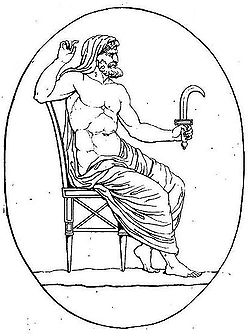 The sickle (of the Krasnoyarsk lion) is a multilevel symbol. In Greek mythology, the leader of
The sickle (of the Krasnoyarsk lion) is a multilevel symbol. In Greek mythology, the leader of  Yenisei competed for some time in documents with the South Siberian name of this river – Kem. Eventually, the term Yenisei has replaced Kem.
Yenisei competed for some time in documents with the South Siberian name of this river – Kem. Eventually, the term Yenisei has replaced Kem.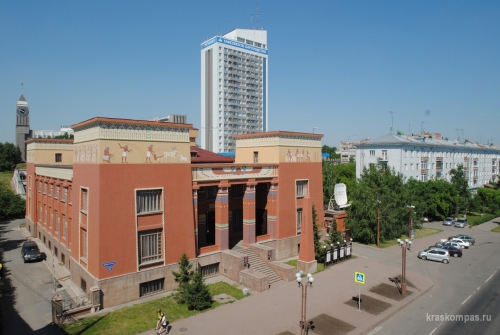
 Russia, including the above mentioned place Sungir near Vladimir, the previous capital of Russia. As a recall from the time of Lemurian Egypt, could be the shape of Krasnoyarsk local history museum (founded in 1889) stylized as the ancient Egyptian temple.
Russia, including the above mentioned place Sungir near Vladimir, the previous capital of Russia. As a recall from the time of Lemurian Egypt, could be the shape of Krasnoyarsk local history museum (founded in 1889) stylized as the ancient Egyptian temple. Luxor, located on the bank of Nile. By the way, in Latin, Lux means Light. The construction of Egyptian bulging of Krasnoyarsk local history museum started in 1913 and was finished in 1929. It is one of the oldest museums in Siberia and the Far East, one of the largest museums in Russia.
Luxor, located on the bank of Nile. By the way, in Latin, Lux means Light. The construction of Egyptian bulging of Krasnoyarsk local history museum started in 1913 and was finished in 1929. It is one of the oldest museums in Siberia and the Far East, one of the largest museums in Russia.
_%D0%BC%D0%BE%D0%B5.jpg) city is notable for its nature landscapes. The Krasnoyarsk Pillars (bordering the River Mana, a favorite recreation place for Krasnoyarsk residents and many tourists from different countries; the most spectacular loops River Mana makes near its mouth in settlement ManSky) are stone remains and megalithic structures that are also believed to
city is notable for its nature landscapes. The Krasnoyarsk Pillars (bordering the River Mana, a favorite recreation place for Krasnoyarsk residents and many tourists from different countries; the most spectacular loops River Mana makes near its mouth in settlement ManSky) are stone remains and megalithic structures that are also believed to  be made / used by previous civilizations with the purpose of using this place for moving between the worlds. Even a simple stay next to such a portal stimulates the growth and development of a person’s consciousness. At one life cycle of incarnation it is possible to make a huge leap.
be made / used by previous civilizations with the purpose of using this place for moving between the worlds. Even a simple stay next to such a portal stimulates the growth and development of a person’s consciousness. At one life cycle of incarnation it is possible to make a huge leap.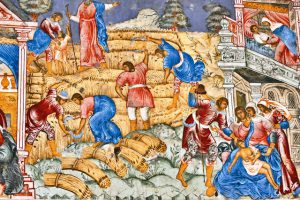 Also, it is the day of the
Also, it is the day of the 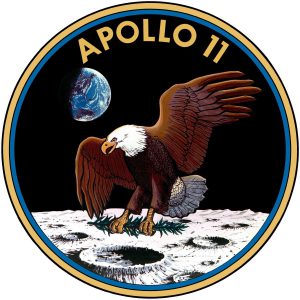
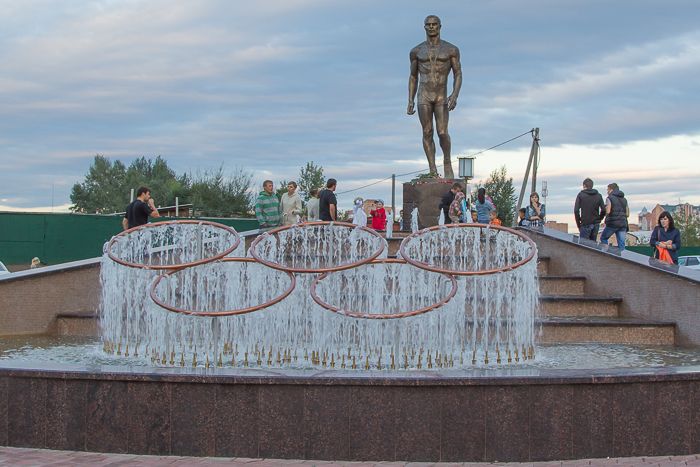
 in 1973. Originally, the Twin Towers were the tallest buildings in the world. Metaphysically, they represented the might of material world dominated on the planet within the
in 1973. Originally, the Twin Towers were the tallest buildings in the world. Metaphysically, they represented the might of material world dominated on the planet within the 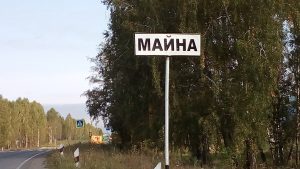 Urban-type settlement of Maina is located on the bank of Yenisei River. Maina
Urban-type settlement of Maina is located on the bank of Yenisei River. Maina 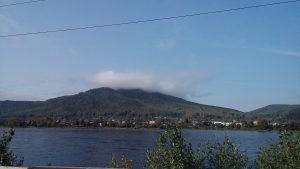 hydroelectric power station is a counter-regulator of the Sayano-Shushenskaya hydroelectric power station, smoothing the fluctuations in the water level in the Yenisei that arise when the operating modes of this powerful Sayano-Shushenskaya HPP are changed (see below).
hydroelectric power station is a counter-regulator of the Sayano-Shushenskaya hydroelectric power station, smoothing the fluctuations in the water level in the Yenisei that arise when the operating modes of this powerful Sayano-Shushenskaya HPP are changed (see below).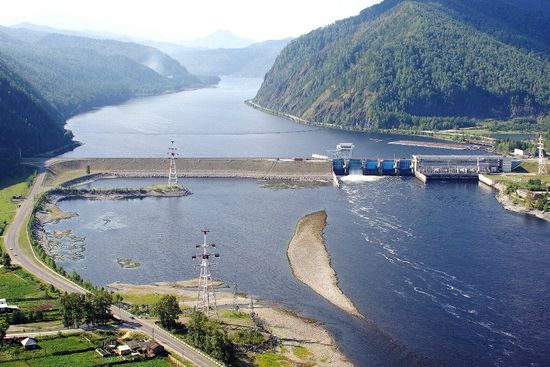 any analogs in Russia. During the year and during the day, the electricity needs are different. Therefore, Sayano-Shushenskaya hydroelectric station (peak HPP) must respond quickly to these fluctuations. Constant fluctuations in the water
any analogs in Russia. During the year and during the day, the electricity needs are different. Therefore, Sayano-Shushenskaya hydroelectric station (peak HPP) must respond quickly to these fluctuations. Constant fluctuations in the water Sayano-Shushenskaya hydroelectric power station is the largest power plant in Russia and the 9th largest hydroelectric plant in the world, by average power generation. The dam supports the Sayano–Shushenskoe reservoir with surface area of 621 km2.
Sayano-Shushenskaya hydroelectric power station is the largest power plant in Russia and the 9th largest hydroelectric plant in the world, by average power generation. The dam supports the Sayano–Shushenskoe reservoir with surface area of 621 km2. in exile here for 3 years, from 1897 to 1900. He also got married here in 1898. Lenin was one of two persons in the 20th century who were given the title of
in exile here for 3 years, from 1897 to 1900. He also got married here in 1898. Lenin was one of two persons in the 20th century who were given the title of 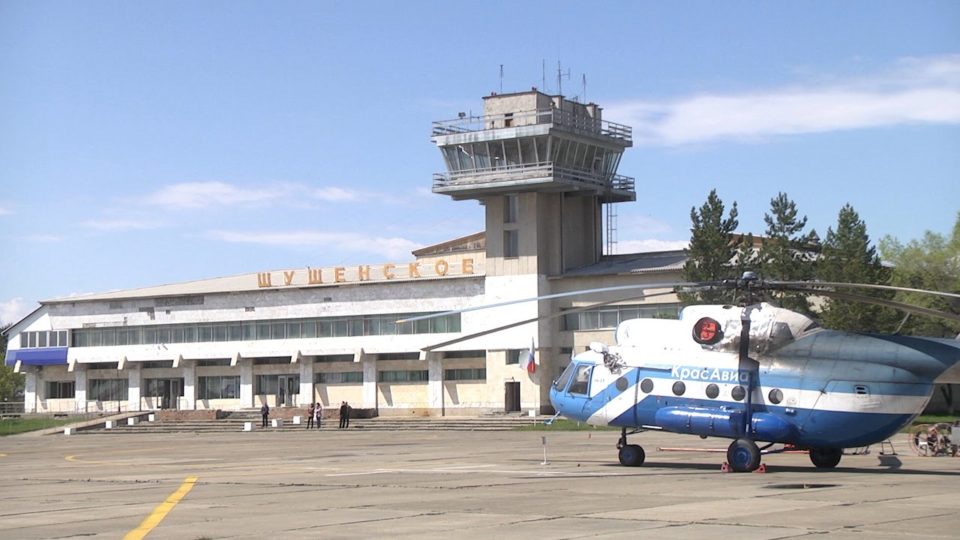 including the international flights. Many visitors from all over the Soviet Union and abroad would come here. In 1970, they opened a large museum-reserve dedicated to Lenin’s time in Shushenskoye (Siberia).
including the international flights. Many visitors from all over the Soviet Union and abroad would come here. In 1970, they opened a large museum-reserve dedicated to Lenin’s time in Shushenskoye (Siberia).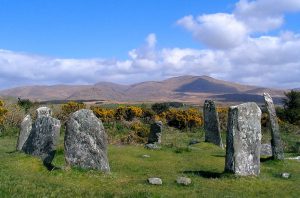 The area around the above mentioned city of Abakan is full of ancient menhirs. Typically, these menhirs are vertically buried in the ground stone slabs. They could be up to three meters high and over one meter wide. These ancient stone sculptures have a sacred meaning. Similar structures are present in Western Europe and the Scottish island of Lewis of Harris.
The area around the above mentioned city of Abakan is full of ancient menhirs. Typically, these menhirs are vertically buried in the ground stone slabs. They could be up to three meters high and over one meter wide. These ancient stone sculptures have a sacred meaning. Similar structures are present in Western Europe and the Scottish island of Lewis of Harris.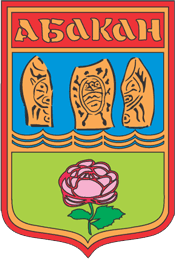 believed that these mysterious stone statues (menhirs) were erected by people who lived here about 4,000 years ago.
believed that these mysterious stone statues (menhirs) were erected by people who lived here about 4,000 years ago.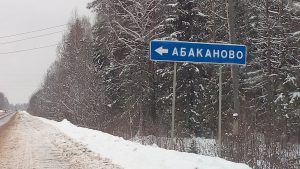 The very name Abakan could be connected with Sanskrit. It is present in other Russian places where toponymy is translated from Sanskrit. For instance, village Abakanovo (meaning Little Abakan) is located in
The very name Abakan could be connected with Sanskrit. It is present in other Russian places where toponymy is translated from Sanskrit. For instance, village Abakanovo (meaning Little Abakan) is located in  plates. At the beginning of the excavation, the height of the mound reached 11.5 meters. The length of the stone fence was 71 m. The earth embankment / tetrahedral pyramid initially reached a height of approximately up to 25 m.
plates. At the beginning of the excavation, the height of the mound reached 11.5 meters. The length of the stone fence was 71 m. The earth embankment / tetrahedral pyramid initially reached a height of approximately up to 25 m. The height of vertically standing monoliths reaches 6 meters, plus at least 1 meter should be below the surface (otherwise they could not keep the upright position). The weight of stone monoliths fluctuates from 30 to 50 tons. It is suggested that the Scythians transported them from the quarries on the banks of the Yenisei River located 70 km from the mounds. None of the archaeologists involved can explain and show what transportation means were used. Even today,
The height of vertically standing monoliths reaches 6 meters, plus at least 1 meter should be below the surface (otherwise they could not keep the upright position). The weight of stone monoliths fluctuates from 30 to 50 tons. It is suggested that the Scythians transported them from the quarries on the banks of the Yenisei River located 70 km from the mounds. None of the archaeologists involved can explain and show what transportation means were used. Even today,  it would be a challenge for the modern powerful machinery like big tracks, excavators, and cranes.
it would be a challenge for the modern powerful machinery like big tracks, excavators, and cranes.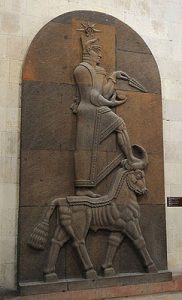 Another evidence of the antiquity of the names around Abakan is the local Tasheba River (a tributary of the Yenisei). Teisheba is the Urartian god of thunder and war. He is a counterpart to the Assyrian god Adad, the Vedic God Indra, and the Hurrian god, Teshub. The Hurrians tribes represented a large ethnic component in the region of Lake Urmia, where the
Another evidence of the antiquity of the names around Abakan is the local Tasheba River (a tributary of the Yenisei). Teisheba is the Urartian god of thunder and war. He is a counterpart to the Assyrian god Adad, the Vedic God Indra, and the Hurrian god, Teshub. The Hurrians tribes represented a large ethnic component in the region of Lake Urmia, where the  The world’s oldest astronomical observatory is located in Khakassia. The observatory’s age comes to almost
The world’s oldest astronomical observatory is located in Khakassia. The observatory’s age comes to almost It is only 13 km from the Sunduki to the so called Siberian Dead Sea that is the Lake Tus. It is the most exotic lake in Eastern Siberia. The concentration of the salt (essence of life) is so high that it is impossible to dive or sink. The name of the lake is clearly
It is only 13 km from the Sunduki to the so called Siberian Dead Sea that is the Lake Tus. It is the most exotic lake in Eastern Siberia. The concentration of the salt (essence of life) is so high that it is impossible to dive or sink. The name of the lake is clearly  into the lake have been found on the South Western bank. At a depth of 5 to 10 meters, researchers have also found fragments of giant stone slabs. On the eastern side, 15 slabs with cut ends have been found. Obviously, no natural phenomenon can produce rectangles and lay them in a dense cover along the shore of the lake.
into the lake have been found on the South Western bank. At a depth of 5 to 10 meters, researchers have also found fragments of giant stone slabs. On the eastern side, 15 slabs with cut ends have been found. Obviously, no natural phenomenon can produce rectangles and lay them in a dense cover along the shore of the lake. The Krasnoyarsk Krai lies in the middle of Russia and Siberia. It is among the richest of Russia’s regions in natural resources. 80% of the country’s nickel, 75% of its cobalt, 70% of its copper, 16% of its coal, and 10% of its gold are extracted here. The Krasnoyarsk Krai also produces 20% of the country’s timber. More than 95% of Russian resources of platinum and platinoids are concentrated in the Krasnoyarsk Krai.
The Krasnoyarsk Krai lies in the middle of Russia and Siberia. It is among the richest of Russia’s regions in natural resources. 80% of the country’s nickel, 75% of its cobalt, 70% of its copper, 16% of its coal, and 10% of its gold are extracted here. The Krasnoyarsk Krai also produces 20% of the country’s timber. More than 95% of Russian resources of platinum and platinoids are concentrated in the Krasnoyarsk Krai.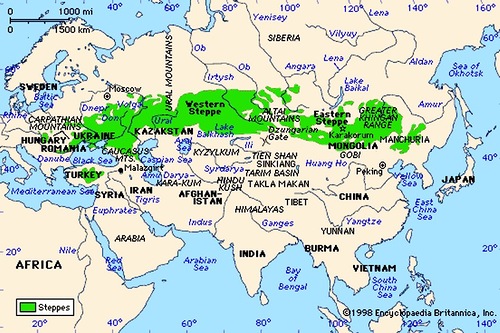 Siberia to the Black Sea region. The eastern border of the Aryan living space was
Siberia to the Black Sea region. The eastern border of the Aryan living space was 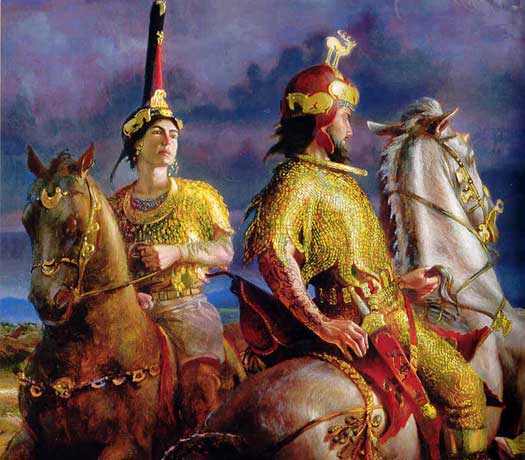 empire of the Persians, nor by Alexander the Great. The Scythians is the Greek word by which the Hellenes designated nomadic peoples living on the territory of the Black Sea region between the rivers Don and the Danube. The Russian River Don is famous for its brave
empire of the Persians, nor by Alexander the Great. The Scythians is the Greek word by which the Hellenes designated nomadic peoples living on the territory of the Black Sea region between the rivers Don and the Danube. The Russian River Don is famous for its brave 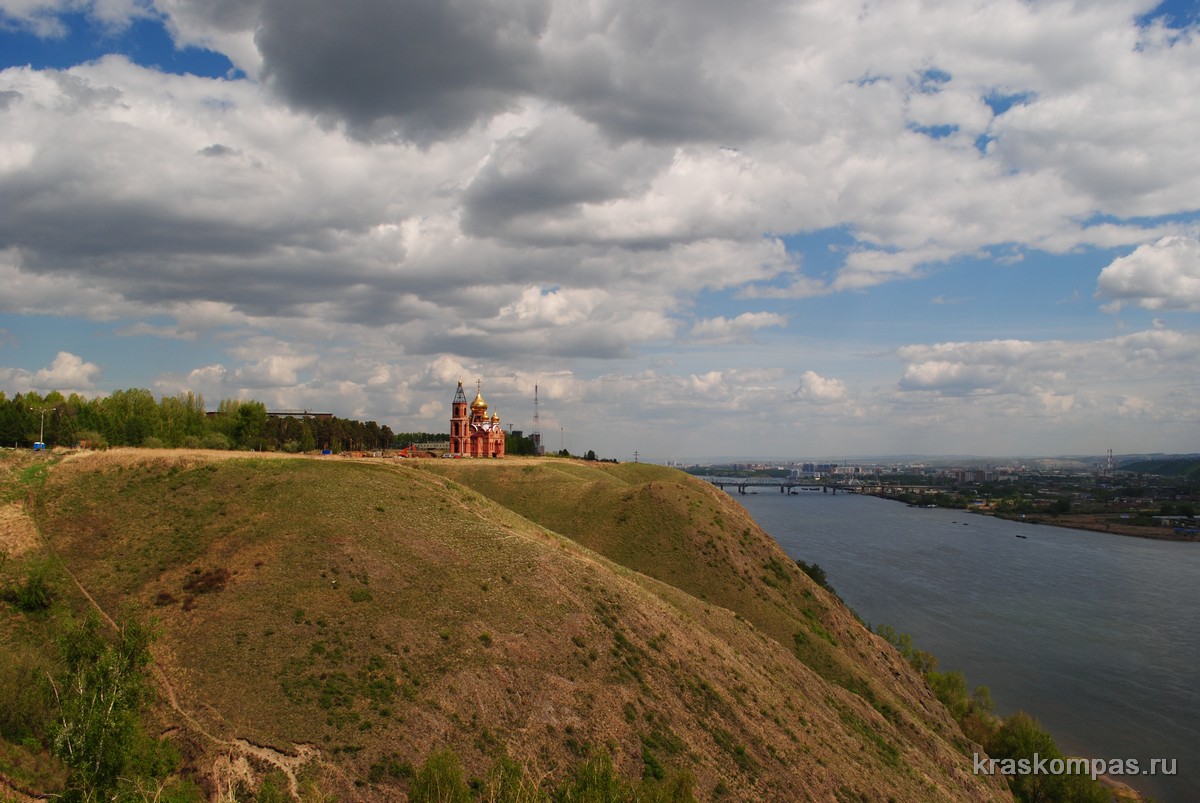 Finally, they decided to found the Academic Town on the western outskirts of the city of Krasnoyarsk, on the last vertex of the Sayan ridge, on the other bank of the Yenisei River. Steep bank, towering a hundred meters above the Yenisei, was chosen as the birthplace of the scientific nucleus.
Finally, they decided to found the Academic Town on the western outskirts of the city of Krasnoyarsk, on the last vertex of the Sayan ridge, on the other bank of the Yenisei River. Steep bank, towering a hundred meters above the Yenisei, was chosen as the birthplace of the scientific nucleus.
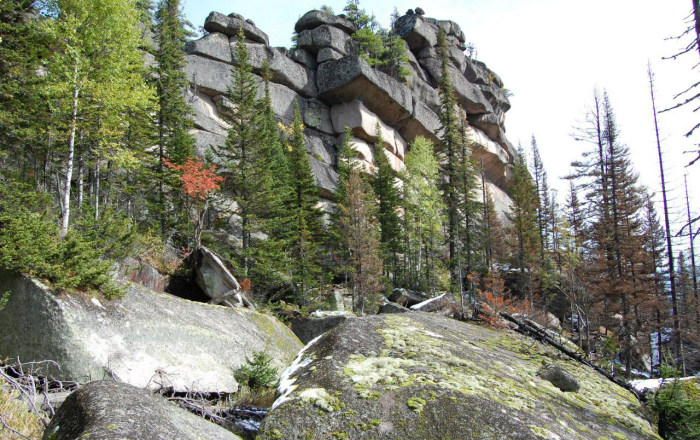
.jpg) 1,000 tons.
1,000 tons.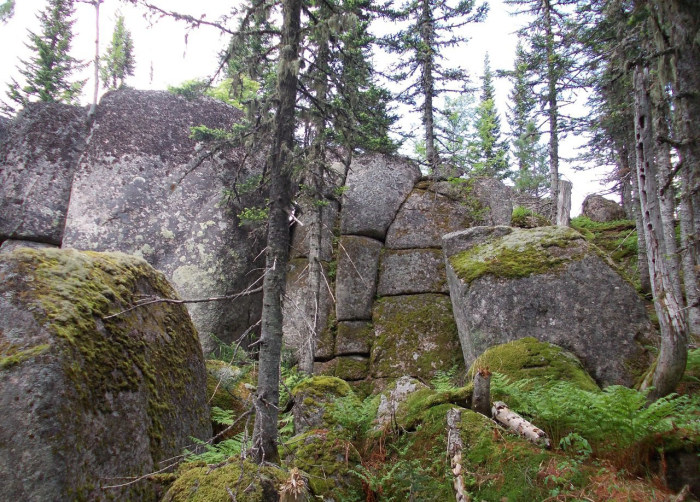



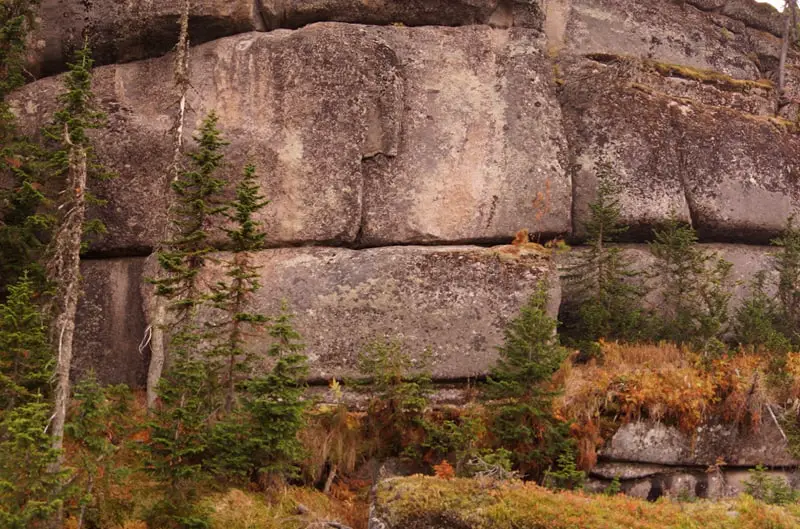
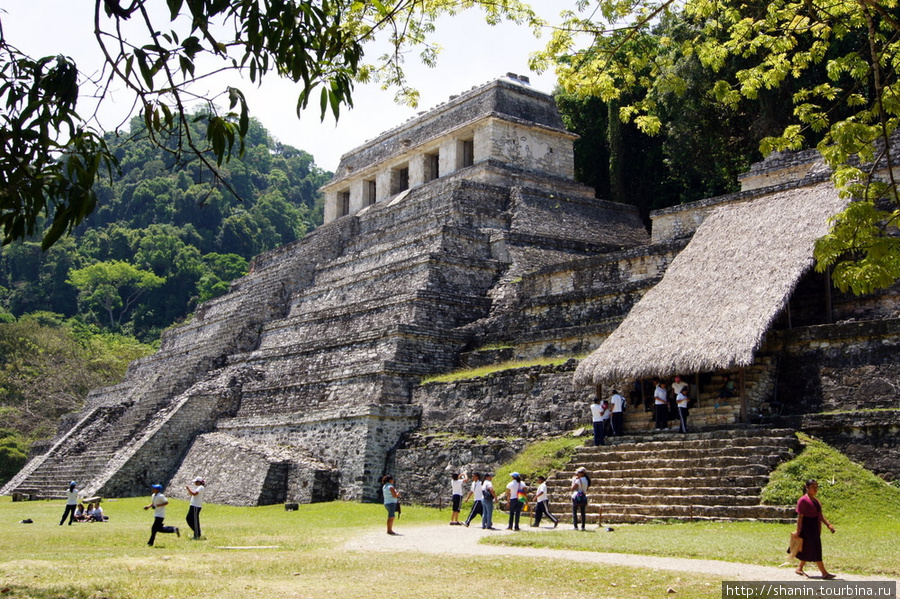 the Temple of the Inscriptions that could be considered as a certain prototype of Lenin’s
the Temple of the Inscriptions that could be considered as a certain prototype of Lenin’s  changing the course of world history. Tomb lid of Pacal is believed by many to show him or an alien astronaut taking off in a spacecraft-returning to the stars, etc.
changing the course of world history. Tomb lid of Pacal is believed by many to show him or an alien astronaut taking off in a spacecraft-returning to the stars, etc. Dragon is depicted on the coat of arms of Moscow. Today a horseman with a spear in his hand slaying a
Dragon is depicted on the coat of arms of Moscow. Today a horseman with a spear in his hand slaying a 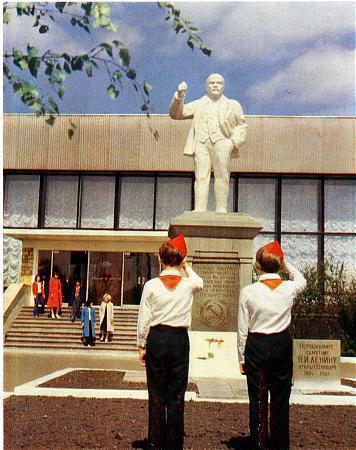 pronounced as Naginsk. The last two letters only indicate the status of a city. The root is Nagin. Nagina is a town in Uttar Pradesh, the most populous state in the Republic of India. The state is world famous for the Taj Mahal on the south bank of the sacred River Yamuna in Agra. River
pronounced as Naginsk. The last two letters only indicate the status of a city. The root is Nagin. Nagina is a town in Uttar Pradesh, the most populous state in the Republic of India. The state is world famous for the Taj Mahal on the south bank of the sacred River Yamuna in Agra. River 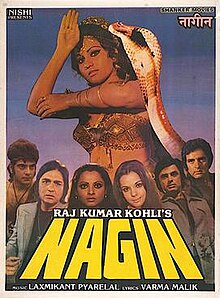
 energy of enlightenment. The Himalayan Mahatmas in their letter to the Soviet government called
energy of enlightenment. The Himalayan Mahatmas in their letter to the Soviet government called  meteor is exhibited in Chelyabinsk State museum.
meteor is exhibited in Chelyabinsk State museum. were kept. Above the central entrance was a sign: “Learn by Lenin”. Common basis have the words Chelyabinsk and
were kept. Above the central entrance was a sign: “Learn by Lenin”. Common basis have the words Chelyabinsk and 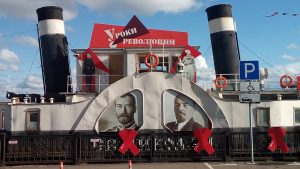 harmonization of existing ones. The head of this family is Edary. World Channeling №7 (25) 2015 describes Edary as the Higher Self of the last Russian Emperor
harmonization of existing ones. The head of this family is Edary. World Channeling №7 (25) 2015 describes Edary as the Higher Self of the last Russian Emperor  its origin and interpretation. This coat of arms belonged to two closely related ducal families the Visconti and the Sforza, who ruled Milan one after the other.
its origin and interpretation. This coat of arms belonged to two closely related ducal families the Visconti and the Sforza, who ruled Milan one after the other. Biscione (a serpent holding a man or a child in its mouth) was the emblem of the Visconti family and appeared on their coat of arms around 1100 AD. When Visconti became duke in 1395, he added black eagles to the band, because the duchy was part of the Holy Roman Empire. The emblem began to represent a shield, two gold fields of which had eagles and two silver ones had serpents. It is also a symbolism (duality) of two principles: gold (the Sun) and silver (the Moon), the eagle (Heaven / Spirit) and the serpent (Earth / Matter).
Biscione (a serpent holding a man or a child in its mouth) was the emblem of the Visconti family and appeared on their coat of arms around 1100 AD. When Visconti became duke in 1395, he added black eagles to the band, because the duchy was part of the Holy Roman Empire. The emblem began to represent a shield, two gold fields of which had eagles and two silver ones had serpents. It is also a symbolism (duality) of two principles: gold (the Sun) and silver (the Moon), the eagle (Heaven / Spirit) and the serpent (Earth / Matter).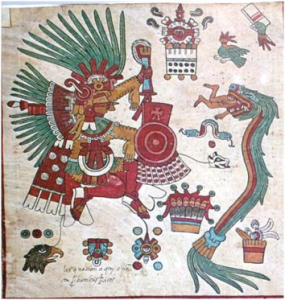
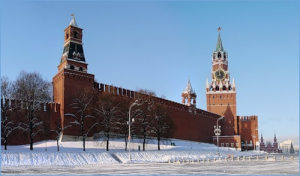 making it his residence and decorating them with a common coat of arms. The protective structures of this castle were designed by the Tuscan Leonardo de Vinci, one of the most known representatives of the
making it his residence and decorating them with a common coat of arms. The protective structures of this castle were designed by the Tuscan Leonardo de Vinci, one of the most known representatives of the 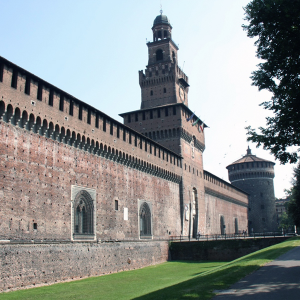 In Milan and Moscow, they are likewise decorated with swallowtails. In Milan, on WT SmartCity Award 2017 (international urban & architecture ideas competition) were rewarded Richard Moreta and his team designed the most innovative and visionary new type of city for The Kingdom of Manna on the island of
In Milan and Moscow, they are likewise decorated with swallowtails. In Milan, on WT SmartCity Award 2017 (international urban & architecture ideas competition) were rewarded Richard Moreta and his team designed the most innovative and visionary new type of city for The Kingdom of Manna on the island of 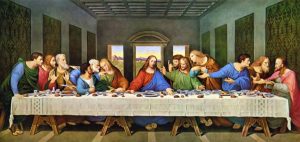 son ordered Leonardo the famous “Last Supper”, a mural on the rear wall of the refectory in the Dominican convent of Santa Maria delle Grazie in Milan, depicting the scene of the last supper of Christ with his disciples. It became the most popular work of Leonardo and an important milestone in the history of the Renaissance: correctly reproduced depth of perspective changed the direction of the development of Western painting.
son ordered Leonardo the famous “Last Supper”, a mural on the rear wall of the refectory in the Dominican convent of Santa Maria delle Grazie in Milan, depicting the scene of the last supper of Christ with his disciples. It became the most popular work of Leonardo and an important milestone in the history of the Renaissance: correctly reproduced depth of perspective changed the direction of the development of Western painting.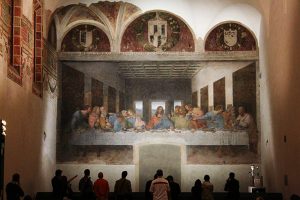 to one version, this story symbolizes the strength and victories of Milan. Other version states that the serpent from the mouth of which the baby appears, symbolizes the awakening force combined with wisdom.
to one version, this story symbolizes the strength and victories of Milan. Other version states that the serpent from the mouth of which the baby appears, symbolizes the awakening force combined with wisdom. Today, Milan has a different coat of arms. It is the red cross of St. George on a silver field. The image of the serpent with the child uses in its symbol the car company Alfa Romeo created in Milan. It has combined both Milanese coats of arms: in a halved circle, in the left half there is a cross, and in the right half there is a crowned serpent, from the mouth of which a baby appears.
Today, Milan has a different coat of arms. It is the red cross of St. George on a silver field. The image of the serpent with the child uses in its symbol the car company Alfa Romeo created in Milan. It has combined both Milanese coats of arms: in a halved circle, in the left half there is a cross, and in the right half there is a crowned serpent, from the mouth of which a baby appears. mentioned Sforza of Milan, through the marriage in 1518, became the Queen of Poland and Grand Duchess of Lithuania. She brought the Milanese coat of arms Biscione to the Belarusian Pruzhany, formerly part of the Cobrin Principality. The name Cobrin comes from Cobra, but cobras have never existed in this northern region. The snake is one of the most ancient and deep symbols. Not an exception is the name of the principality coming from name of the town of Cobrin.
mentioned Sforza of Milan, through the marriage in 1518, became the Queen of Poland and Grand Duchess of Lithuania. She brought the Milanese coat of arms Biscione to the Belarusian Pruzhany, formerly part of the Cobrin Principality. The name Cobrin comes from Cobra, but cobras have never existed in this northern region. The snake is one of the most ancient and deep symbols. Not an exception is the name of the principality coming from name of the town of Cobrin. In time due, the coat of arms of Pruzhany has been changed. In 1845, fir-tree appeared on it. On this spruce was a silver hunting horn. The fir-tree and the horn pointed to the famous Belovezhskaya pushcha (forest) which is located near the town of Pruzhany. Today, Belovezhskaya pushcha is better known as a sad place where the collapse of the Soviet Union was formalized. In the past, Belovezhskaya pushcha was owned by the Russian Emperors.
In time due, the coat of arms of Pruzhany has been changed. In 1845, fir-tree appeared on it. On this spruce was a silver hunting horn. The fir-tree and the horn pointed to the famous Belovezhskaya pushcha (forest) which is located near the town of Pruzhany. Today, Belovezhskaya pushcha is better known as a sad place where the collapse of the Soviet Union was formalized. In the past, Belovezhskaya pushcha was owned by the Russian Emperors.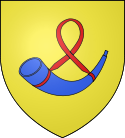 field is the coat of arms of the first feudal rulers of the small sovereignty of Orange in the south of France, next to the Languedoc. Roman Orange was founded in 35 BCE by veterans of the second legion as Arausio (after the local Celtic water god). The name was originally unrelated to that of the orange fruit, but was later conflated with it. The sovereign Carolingian counts of Orange had their origin in the 8th century, and passed into the family of the lords of Baux. From the 12th century, Orange was raised to a minor principality, the Principality of Orange, as a fief of the Holy Roman Empire.
field is the coat of arms of the first feudal rulers of the small sovereignty of Orange in the south of France, next to the Languedoc. Roman Orange was founded in 35 BCE by veterans of the second legion as Arausio (after the local Celtic water god). The name was originally unrelated to that of the orange fruit, but was later conflated with it. The sovereign Carolingian counts of Orange had their origin in the 8th century, and passed into the family of the lords of Baux. From the 12th century, Orange was raised to a minor principality, the Principality of Orange, as a fief of the Holy Roman Empire. Tsarskoye Selo or Tsar’s Village is now town of Pushkin. The serpent biting its tail was placed on its coat of arms by the order of Catherine the Great of Russia (1729 – 1796). She was born as a German princess in Slavic city of Stettin, Pomerania, Prussia (now Szczecin, Poland). Catherine the Great is Russia’s longest-ruling female monarch. Under her governance the Russian Empire was expanding rapidly by diplomacy and conquest / return of the former Russian lands in the south and south-west. In the east, Russia started to colonize Alaska, establishing
Tsarskoye Selo or Tsar’s Village is now town of Pushkin. The serpent biting its tail was placed on its coat of arms by the order of Catherine the Great of Russia (1729 – 1796). She was born as a German princess in Slavic city of Stettin, Pomerania, Prussia (now Szczecin, Poland). Catherine the Great is Russia’s longest-ruling female monarch. Under her governance the Russian Empire was expanding rapidly by diplomacy and conquest / return of the former Russian lands in the south and south-west. In the east, Russia started to colonize Alaska, establishing 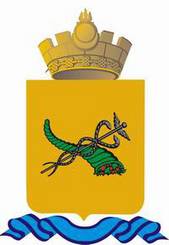 Catherine the Great in 18th century gave the coat of arms with serpents not only to Tsarskoye Selo, but also to city of Ulan-Ude, the capital of modern the Republic of Buryatia of Russian Federation. Buryatia is located in the south-central region of Siberia along the eastern shore of Lake Baikal.
Catherine the Great in 18th century gave the coat of arms with serpents not only to Tsarskoye Selo, but also to city of Ulan-Ude, the capital of modern the Republic of Buryatia of Russian Federation. Buryatia is located in the south-central region of Siberia along the eastern shore of Lake Baikal.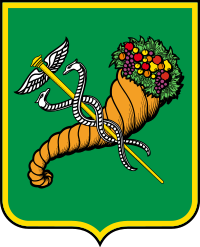 It is symbolic that the composition and elements of the coat of arms of Ulan-Ude are very similar to the coat of arms of Kharkov. On the coat of arms of Kharkov, the cornucopia is folded upwards, in the form of the letter “X”. Thus, the Kharkiv cornucopia seems to be filled with fruits, whereas the Ulan-Ude’s cornucopia (bent down) seems to be pouring. Plus, the coat of arms of Ulan-Ude is crowned with a golden crown with a Soyombo (Sanskrit: “self-created”) that is Buryat symbol of eternal life (sun, moon, and hearth), a circle with a crescent moon at the bottom, and a flame of three languages above.
It is symbolic that the composition and elements of the coat of arms of Ulan-Ude are very similar to the coat of arms of Kharkov. On the coat of arms of Kharkov, the cornucopia is folded upwards, in the form of the letter “X”. Thus, the Kharkiv cornucopia seems to be filled with fruits, whereas the Ulan-Ude’s cornucopia (bent down) seems to be pouring. Plus, the coat of arms of Ulan-Ude is crowned with a golden crown with a Soyombo (Sanskrit: “self-created”) that is Buryat symbol of eternal life (sun, moon, and hearth), a circle with a crescent moon at the bottom, and a flame of three languages above.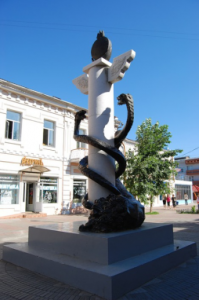 linking European Russia (and through it Western Europe), Eastern Siberia, the Far East, Central Asia, China and Mongolia. It is believed that the large trade transactions were the main reason for appearance on its coat of arms of the cornucopia and the Rod of Mercury (the Roman god of trade), whose image is linked to the Egyptian god of wisdom Thoth.
linking European Russia (and through it Western Europe), Eastern Siberia, the Far East, Central Asia, China and Mongolia. It is believed that the large trade transactions were the main reason for appearance on its coat of arms of the cornucopia and the Rod of Mercury (the Roman god of trade), whose image is linked to the Egyptian god of wisdom Thoth. The symbol of Buryatia (a golden soembo on a blue background) is depicted on the flag of Ulan-Ude. It is not difficult to notice that these colors, like the flag of Ukraine, are yellow-blue. In heraldry, golden color serves as a symbol of wealth, justice, generosity, and blue is a symbol of beauty, softness and greatness.
The symbol of Buryatia (a golden soembo on a blue background) is depicted on the flag of Ulan-Ude. It is not difficult to notice that these colors, like the flag of Ukraine, are yellow-blue. In heraldry, golden color serves as a symbol of wealth, justice, generosity, and blue is a symbol of beauty, softness and greatness.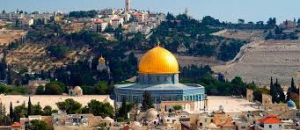 most recognizable symbols of Jerusalem, the Dome of the Rock Mosque, is made in the same colors by Suleiman the Magnificent, whose wife was from the territory of present-day Ukraine. The name of the mountain on which this mosque is located is Moria.
most recognizable symbols of Jerusalem, the Dome of the Rock Mosque, is made in the same colors by Suleiman the Magnificent, whose wife was from the territory of present-day Ukraine. The name of the mountain on which this mosque is located is Moria.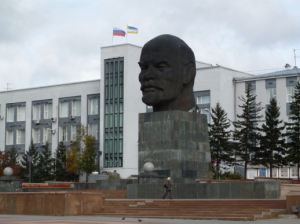 In the main square of Ulan-Ude is the most unusual monument to
In the main square of Ulan-Ude is the most unusual monument to 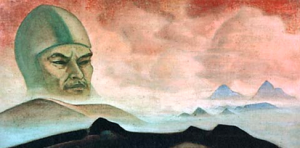 Term” created in Ulan Bator (Mongolian capital) located ~440 km. south from Ulan-Ude.
Term” created in Ulan Bator (Mongolian capital) located ~440 km. south from Ulan-Ude.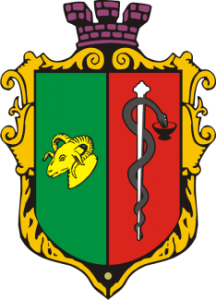 In 1844, the coat of arms of Evpatoria was approved. It depicts a golden sheep’s head and a serpent drinking from a bowl, wrapping a silver rod.
In 1844, the coat of arms of Evpatoria was approved. It depicts a golden sheep’s head and a serpent drinking from a bowl, wrapping a silver rod.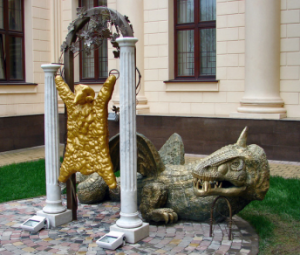 Karakul breed in this part of the Crimea, as well as for a large number of jewelry crowned with the golden head of a ram, found by archaeologists around Evpatoria.
Karakul breed in this part of the Crimea, as well as for a large number of jewelry crowned with the golden head of a ram, found by archaeologists around Evpatoria.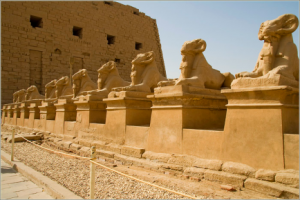 The Aries or Rama was widely known before the Greek “city-states” (polis) came to the historical scene. In ancient Egypt, whole alleys and the most sacred temples were decorated with such sphinxes. This is one of the most common emblems around the world and the oldest cult image (Golden Fleece, ram’s head, horns of a ram, lamb, etc.)
The Aries or Rama was widely known before the Greek “city-states” (polis) came to the historical scene. In ancient Egypt, whole alleys and the most sacred temples were decorated with such sphinxes. This is one of the most common emblems around the world and the oldest cult image (Golden Fleece, ram’s head, horns of a ram, lamb, etc.) Evpatoria. It depicts a dinosaur within a structure resembling an Egyptian pyramid. Above the dinosaur are three stars akin to the three stars in the Orion Belt that was very sacred to the ancient Egyptians. On the right side is a wise serpent on a stick, ancient symbol of medicine (the Rod of Asclepius).
Evpatoria. It depicts a dinosaur within a structure resembling an Egyptian pyramid. Above the dinosaur are three stars akin to the three stars in the Orion Belt that was very sacred to the ancient Egyptians. On the right side is a wise serpent on a stick, ancient symbol of medicine (the Rod of Asclepius).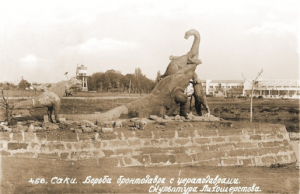 The world’s first monument to dinosaurs was established only in 1932 in the resort town of Saki, during the reign of Stalin. The very appearance of such a monument (dinosaurs) was a phenomenon. At that time were created only monuments dedicated to people of labor, athletes, leaders of the proletariat.
The world’s first monument to dinosaurs was established only in 1932 in the resort town of Saki, during the reign of Stalin. The very appearance of such a monument (dinosaurs) was a phenomenon. At that time were created only monuments dedicated to people of labor, athletes, leaders of the proletariat.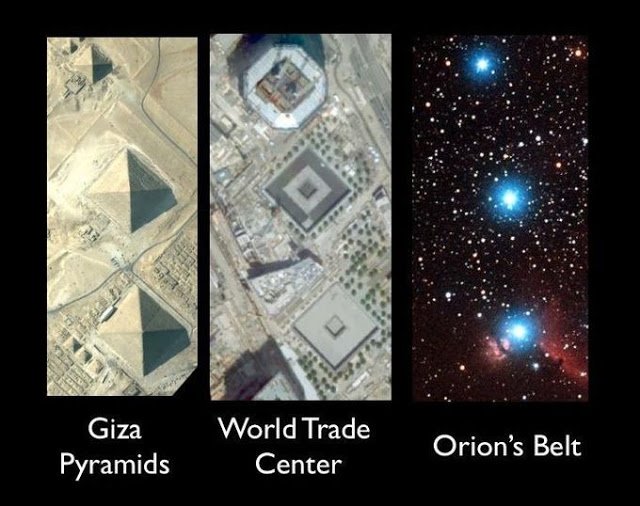 (merchants or traders in salt) that transported salt by the Chumaks’ Way from the Black Sea coast of the Crimea from the 16th to the 19th centuries. In Ukrainian language Milky Way is called the Chumaks’ Way.
(merchants or traders in salt) that transported salt by the Chumaks’ Way from the Black Sea coast of the Crimea from the 16th to the 19th centuries. In Ukrainian language Milky Way is called the Chumaks’ Way.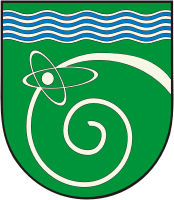 Saki is twinned with Protvino that is a town in Moscow region. Protvino is located 10 km. from
Saki is twinned with Protvino that is a town in Moscow region. Protvino is located 10 km. from  Zmeinogorsk means Serpent Hills. It is a Russian town located in Altai Krai (Southern Siberia). This area is part of a great crossroads in the ancient world. This region of Siberia is extremely important due to its biodiversity. The Altai bees produce some of the world’s finest organic honeys. In ancient Indian traditions, honey (Sanskrit: madhu) is the synonyms of wisdom. The region’s main waterway is the Ob River originated in the Altay Mountains. Ob’s length is 3 650 km. It is the world’s seventh-longest river and the
Zmeinogorsk means Serpent Hills. It is a Russian town located in Altai Krai (Southern Siberia). This area is part of a great crossroads in the ancient world. This region of Siberia is extremely important due to its biodiversity. The Altai bees produce some of the world’s finest organic honeys. In ancient Indian traditions, honey (Sanskrit: madhu) is the synonyms of wisdom. The region’s main waterway is the Ob River originated in the Altay Mountains. Ob’s length is 3 650 km. It is the world’s seventh-longest river and the  westernmost of the three great Siberian rivers that flow into the Arctic Ocean. The Gulf of Ob is the world’s longest estuary. The source of the Ob River is the Lake Teletskoye and a glacier on Mount Belukha that is Siberia’s highest peak (4506 m.) and one of the most significant mountains of Russia. Mount Belukha is believed to be the gates of secret tunnels to
westernmost of the three great Siberian rivers that flow into the Arctic Ocean. The Gulf of Ob is the world’s longest estuary. The source of the Ob River is the Lake Teletskoye and a glacier on Mount Belukha that is Siberia’s highest peak (4506 m.) and one of the most significant mountains of Russia. Mount Belukha is believed to be the gates of secret tunnels to 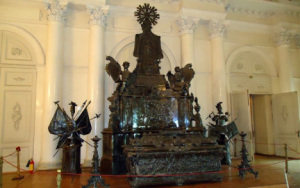 industrial dynasties) discovered the richest deposits near the Serpent Mountain. The famous mine was laid here. It ensured the glory of the Altai as a mining region. By the order of Russian Empress Elizabeth (daughter of Peter the Great, the founder of Saint-Petersburg), silver found here was used for the manufacture of Alexander Nevsky tomb weighing 1,5 tons for the Trinity Cathedral of the Alexander Nevsky Lavra in Saint-Petersburg. This tomb has become one of the outstanding works of Russian decorative and applied art. The tomb has been in the State Hermitage Museum since 1922.
industrial dynasties) discovered the richest deposits near the Serpent Mountain. The famous mine was laid here. It ensured the glory of the Altai as a mining region. By the order of Russian Empress Elizabeth (daughter of Peter the Great, the founder of Saint-Petersburg), silver found here was used for the manufacture of Alexander Nevsky tomb weighing 1,5 tons for the Trinity Cathedral of the Alexander Nevsky Lavra in Saint-Petersburg. This tomb has become one of the outstanding works of Russian decorative and applied art. The tomb has been in the State Hermitage Museum since 1922. The Hermitage also houses another famous exhibit related to Zmeinogorsk. It is the Great Vase made of jasper extracted in the vicinity of Zmeinogorsk. Jasper is the birth name of the first Monarch of the present
The Hermitage also houses another famous exhibit related to Zmeinogorsk. It is the Great Vase made of jasper extracted in the vicinity of Zmeinogorsk. Jasper is the birth name of the first Monarch of the present 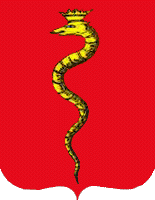 Zmiev is a town in Kharkov region of Ukraine. The cost of arms of Zmiev depicts the Serpent-Queen. The town is located on the famous Izyum Trail or Izyum Warpath. In Russian, izyum means “raisin”. Izyum Trail was a historic route used by the Crimean Tatars in the 16th and 17th centuries to invade Russia. In the mid-17th century, the route fell into disuse due to the establishment of Kharkov and other Cossack forts led by their
Zmiev is a town in Kharkov region of Ukraine. The cost of arms of Zmiev depicts the Serpent-Queen. The town is located on the famous Izyum Trail or Izyum Warpath. In Russian, izyum means “raisin”. Izyum Trail was a historic route used by the Crimean Tatars in the 16th and 17th centuries to invade Russia. In the mid-17th century, the route fell into disuse due to the establishment of Kharkov and other Cossack forts led by their  In the 17th century, on Zmiev’s coat of arms was depicted not only the Serpent-Queen, but also the coat of arms of Kharkov that was then the provincial center. In the main Russian Orthodox cathedral of Kharkov is a large fresco of
In the 17th century, on Zmiev’s coat of arms was depicted not only the Serpent-Queen, but also the coat of arms of Kharkov that was then the provincial center. In the main Russian Orthodox cathedral of Kharkov is a large fresco of 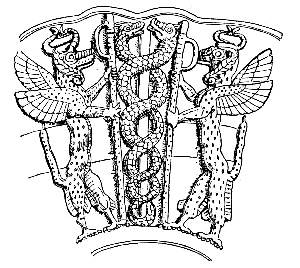
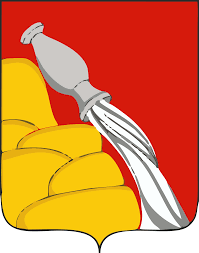 Kharkov viceroyalty. The distance between Zmiev and Kharkov is symbolic 40 kilometers. The southern lands of the Voronezh region were partly transferred to Kharkov viceroyalty. The coat of arms of Voronezh depicts a pitcher pouring water.
Kharkov viceroyalty. The distance between Zmiev and Kharkov is symbolic 40 kilometers. The southern lands of the Voronezh region were partly transferred to Kharkov viceroyalty. The coat of arms of Voronezh depicts a pitcher pouring water. The Cobrin coat of arms depicts the Virgin Mary and her mother Saint Anne. It was in honor of the mistress of the city Anna Jagellonka, the granddaughter of the Milanese Duke Sforza. She was a daughter of Polish King Sigismund I the Old and his Italian wife Bona Sforza.
The Cobrin coat of arms depicts the Virgin Mary and her mother Saint Anne. It was in honor of the mistress of the city Anna Jagellonka, the granddaughter of the Milanese Duke Sforza. She was a daughter of Polish King Sigismund I the Old and his Italian wife Bona Sforza.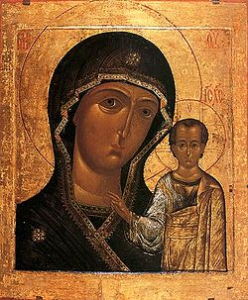
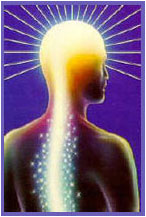 The name of Kirov region is linked to the
The name of Kirov region is linked to the 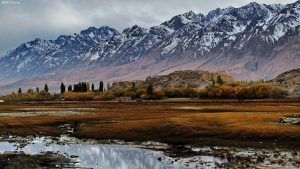 There is no single version of the translation of the name Pamir. In Russian, “mir” means peace and society. Pamir if often referred to as the “roof of the world”. In Soviet times, the “roof of the world” had high names reflecting the high ideals of humanity. The highest peak of the USSR was the Communism Peak (7495 m.), Tajikistan. This peak was discovered in the 19th century by Russian researchers of the Pamir. In 1932 it was named the Stalin Peak, and in 1962 it was renamed the Communism Peak. In 1998, it was renamed by the then authorities of Tajikistan after Ismoil Somoni, the 9th century ruler of the Iranian Samanid dynasty. The Samanid Empire at its greatest extent encompassed all of today’s Afghanistan, and large parts of Iran, Turkmenistan, Uzbekistan, Tajikistan, Kyrgyzstan, Kazakhstan and Pakistan. The original home of the Samanids is unclear. It is claimed that their name was derived from a village near Samarkand (present-day Uzbekistan).
There is no single version of the translation of the name Pamir. In Russian, “mir” means peace and society. Pamir if often referred to as the “roof of the world”. In Soviet times, the “roof of the world” had high names reflecting the high ideals of humanity. The highest peak of the USSR was the Communism Peak (7495 m.), Tajikistan. This peak was discovered in the 19th century by Russian researchers of the Pamir. In 1932 it was named the Stalin Peak, and in 1962 it was renamed the Communism Peak. In 1998, it was renamed by the then authorities of Tajikistan after Ismoil Somoni, the 9th century ruler of the Iranian Samanid dynasty. The Samanid Empire at its greatest extent encompassed all of today’s Afghanistan, and large parts of Iran, Turkmenistan, Uzbekistan, Tajikistan, Kyrgyzstan, Kazakhstan and Pakistan. The original home of the Samanids is unclear. It is claimed that their name was derived from a village near Samarkand (present-day Uzbekistan).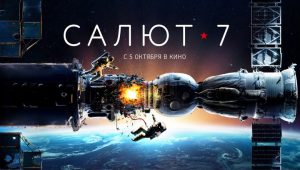 Viktor Savinykh’s diaries have been used to make the film “Salyut-7”. The pre-premiere screening of the film took place on October 4, 2017 in the cinema hall of the State Kremlin Palace. This was the main event of the solemn evening dedicated to the 60th anniversary of the launch of the USSR’s first artificial Earth satellite. The characters and creators of the film met the President of Russia Vladimir
Viktor Savinykh’s diaries have been used to make the film “Salyut-7”. The pre-premiere screening of the film took place on October 4, 2017 in the cinema hall of the State Kremlin Palace. This was the main event of the solemn evening dedicated to the 60th anniversary of the launch of the USSR’s first artificial Earth satellite. The characters and creators of the film met the President of Russia Vladimir 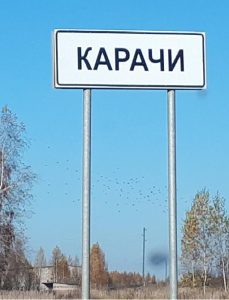 In the Kirov region there is a village of Karachi and this is not an accident. In neighboring Udmurtia (which has many toponymy names translated from Sanskrit), next to the
In the Kirov region there is a village of Karachi and this is not an accident. In neighboring Udmurtia (which has many toponymy names translated from Sanskrit), next to the 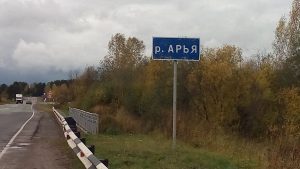 Two rivers Arya flow in the
Two rivers Arya flow in the 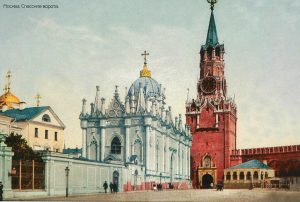 the Moscow Kremlin. Spasskaya (Saviour) Tower Gate is the official entrance to the Kremlin. The gate got their name in honor of this miracle working icon brought to Moscow by the royal decree in the middle of the 17th century from Vyatka (now Kirov).
the Moscow Kremlin. Spasskaya (Saviour) Tower Gate is the official entrance to the Kremlin. The gate got their name in honor of this miracle working icon brought to Moscow by the royal decree in the middle of the 17th century from Vyatka (now Kirov).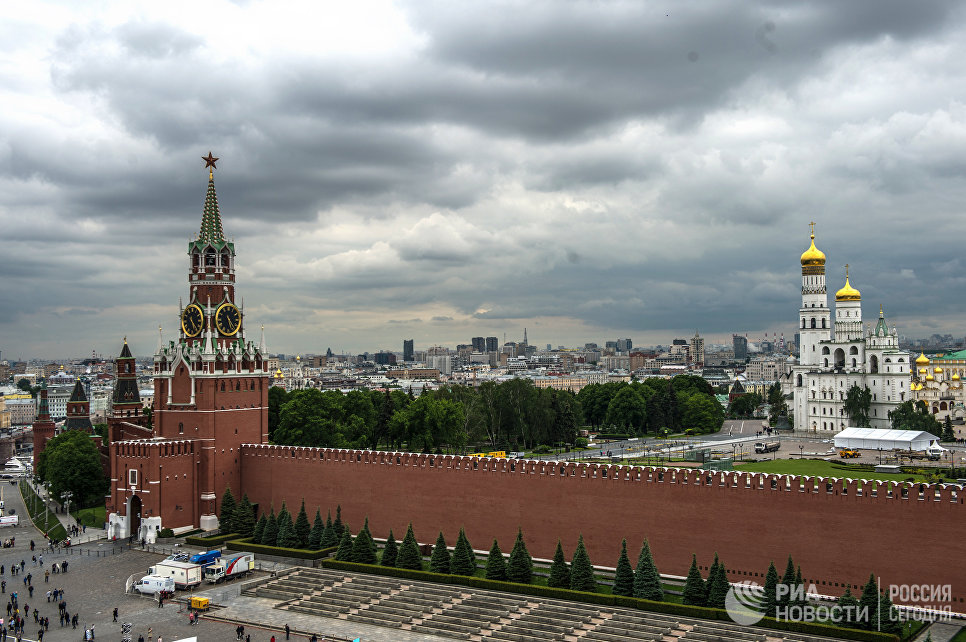 Spassky (Saviour) Gate has been the main ceremonial entrance to the Moscow Kremlin for many centuries. If on their inner side was the icon of Savior of Vyatka (Kirov), then on the outside of the gate was Savior of Smolensk, with the upcoming Sergius of Radonezh and Varlaam of Khutyn.
Spassky (Saviour) Gate has been the main ceremonial entrance to the Moscow Kremlin for many centuries. If on their inner side was the icon of Savior of Vyatka (Kirov), then on the outside of the gate was Savior of Smolensk, with the upcoming Sergius of Radonezh and Varlaam of Khutyn.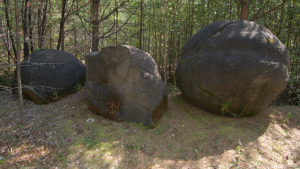 and purpose. On an area of about 10 hectares there are about 1,300 large globular stones with diameters ranging from 0.5 to 1.5 m. A lot of boulders have been lost or taken out.
and purpose. On an area of about 10 hectares there are about 1,300 large globular stones with diameters ranging from 0.5 to 1.5 m. A lot of boulders have been lost or taken out.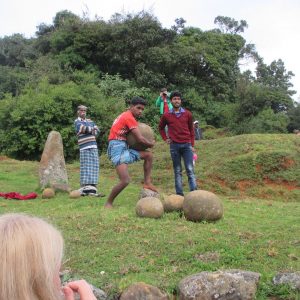 Similar spherical large stones are found in various parts of the planet, including the Champa Island (Franz Josef Land), which is part of the polar possessions of Russia. Administratively, this island is located in the Primorsky district of the
Similar spherical large stones are found in various parts of the planet, including the Champa Island (Franz Josef Land), which is part of the polar possessions of Russia. Administratively, this island is located in the Primorsky district of the 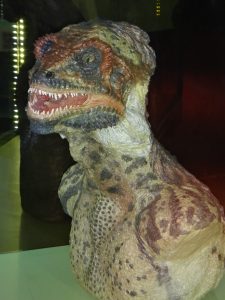 The Vyatka Paleontological Museum in Kirov is unique not only in the extensive collection of ancient lizards discovered in this area along the river Vyatka, many of which have no analogues in the world. The museum also has a stand dedicated to an intelligent dinosaur (lizard, Draco, etc.). For obvious reasons, it
The Vyatka Paleontological Museum in Kirov is unique not only in the extensive collection of ancient lizards discovered in this area along the river Vyatka, many of which have no analogues in the world. The museum also has a stand dedicated to an intelligent dinosaur (lizard, Draco, etc.). For obvious reasons, it 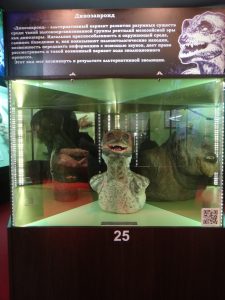 is cautiously called an alternative option for the development of intelligent beings among such a highly organized group of reptiles of the Mesozoic era as dinosaurs. However, the true course of this scientific thought is confirmed by the story of
is cautiously called an alternative option for the development of intelligent beings among such a highly organized group of reptiles of the Mesozoic era as dinosaurs. However, the true course of this scientific thought is confirmed by the story of  Nakhodka is a port city in Primorsky Krai of Russia. Nakhodka is located east of Vladivostok, the administrative center of the Krai, as well as the largest city in the Russian Far East. The Nakhodka Bay of the Sea of Japan, around which the city is organized, was found in 1859 by the Russian corvette «Amerika», which sought shelter in the bay during a storm. In honor of this occasion, the bay was named Nakhodka, which in Russian means “discovery” or “lucky find”.
Nakhodka is a port city in Primorsky Krai of Russia. Nakhodka is located east of Vladivostok, the administrative center of the Krai, as well as the largest city in the Russian Far East. The Nakhodka Bay of the Sea of Japan, around which the city is organized, was found in 1859 by the Russian corvette «Amerika», which sought shelter in the bay during a storm. In honor of this occasion, the bay was named Nakhodka, which in Russian means “discovery” or “lucky find”.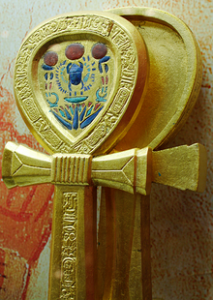 arms of Nakhodka was approved in 1973. In this year, were made two of the popular Soviet films related to Ivan Grozny.
arms of Nakhodka was approved in 1973. In this year, were made two of the popular Soviet films related to Ivan Grozny. On the present coat of arms of Nakhodka, two snakes wrapped the anchor whose top is adorned with the wings of Hermes. Nakhodka’s harbors are superior even to those of a much larger port of Vladivostok.
On the present coat of arms of Nakhodka, two snakes wrapped the anchor whose top is adorned with the wings of Hermes. Nakhodka’s harbors are superior even to those of a much larger port of Vladivostok.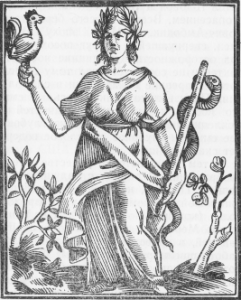 The intertwined snakes are a reflection of the 3rd dimension, where the world has plunged, and the wings symbolize the ascent and exit to the next level. The images of snakes and birds on the Caduceus reflect in symbolic language the division on the opposite sides in the dual world of the 3rd dimension. Fear and darkness are associated with snakes. Love and light are coupled with birds. Mastery is manifested in the ability to integrate the opposites. At the highest level, they are two sides of the same coin (reality). Using images helps to restore a system of concepts in memory.
The intertwined snakes are a reflection of the 3rd dimension, where the world has plunged, and the wings symbolize the ascent and exit to the next level. The images of snakes and birds on the Caduceus reflect in symbolic language the division on the opposite sides in the dual world of the 3rd dimension. Fear and darkness are associated with snakes. Love and light are coupled with birds. Mastery is manifested in the ability to integrate the opposites. At the highest level, they are two sides of the same coin (reality). Using images helps to restore a system of concepts in memory. The plot of the bird and snake is found in almost all cultures that have experienced the influence of Sirius. In Egypt, they had a divine status and symbolized the Upper and Lower Egypt, the Union of Spirit and Matter, Consciousness and Subconsciousness. They were placed on the crowns of the pharaohs. The Mexican coat of arms, based
The plot of the bird and snake is found in almost all cultures that have experienced the influence of Sirius. In Egypt, they had a divine status and symbolized the Upper and Lower Egypt, the Union of Spirit and Matter, Consciousness and Subconsciousness. They were placed on the crowns of the pharaohs. The Mexican coat of arms, based  on the legends of the Aztecs, depicts an eagle and a snake. The Aztec images had a deep sacral meaning, but the Europeans have remade and simplified it in their own way. They have stated that it is only a symbol of the triumph of good over evil, as in the case of the image of St. George the Victorious, whose roots go to the Battle of Nibiru and Tiamat.
on the legends of the Aztecs, depicts an eagle and a snake. The Aztec images had a deep sacral meaning, but the Europeans have remade and simplified it in their own way. They have stated that it is only a symbol of the triumph of good over evil, as in the case of the image of St. George the Victorious, whose roots go to the Battle of Nibiru and Tiamat.